Devold helps keep Little Miracles warm



It says delays in relief will have a cumulative effect on current losses, setting the industry back by years.
CYCLONE-ravaged growers have penned an open letter to the government in a desperate quest for action.
They say that many government ministers have visited the affected areas, and various government departments have asked for and received data and information on the cyclone’s impacts to the horticulture industry, leading to a nationwide impression of responsiveness – but the reality is less reassuring.
It is now more than two months since Cyclone Gabrielle struck, causing widespread devastation to commercial fruit and vegetable growing in Hawke’s Bay, Tairāwhiti, Northland and northern Manawatū.
In the letter, published on Wednesday, April 19, HorticultureNZ says the delay in providing direction and announcing further support is affecting growers and regions.
On April 5 the government announced a further $23 million for farmers and growers to help rebuild, bringing total government support so far to $78m.
The letter acknowledges the government’s swift response to the immediate crisis, “which our industry has appreciated”, but calls for urgent action and further support from the government.
The letter says growers need government decisions regarding land use to be announced as soon as possible.
The harvest of surviving crops is concluding, and planning has begun for next year’s crops, but there is still too much uncertainty for affected businesses to plan and reinvest, the letter says.
“Furthermore, banks need a strong signal from the government if they are to continue to support the horticulture sector in affected areas.”
Many growers from affected areas have lost a significant portion, if not all, of their income for the season.
This has created cashflow issues, which means that businesses are currently struggling to fund immediate clean-up expenditure, which includes current and additional staff wages.
That expenditure does not include the costs of reinvestment for the next season and beyond.
Businesses that lost crop income may not have lost infrastructure, so have no insurance payouts to reinvest into their businesses.
Crop income losses are not insurable and business interruption insurance does not extend to lost crops.
“We understand the government’s desire to get its
Continued page 3
New chair Kate Acland says Beef + Lamb NZ needs to establish a credible, robust, centralised measurement system – but more time is needed to have deeper conversations with farmers.

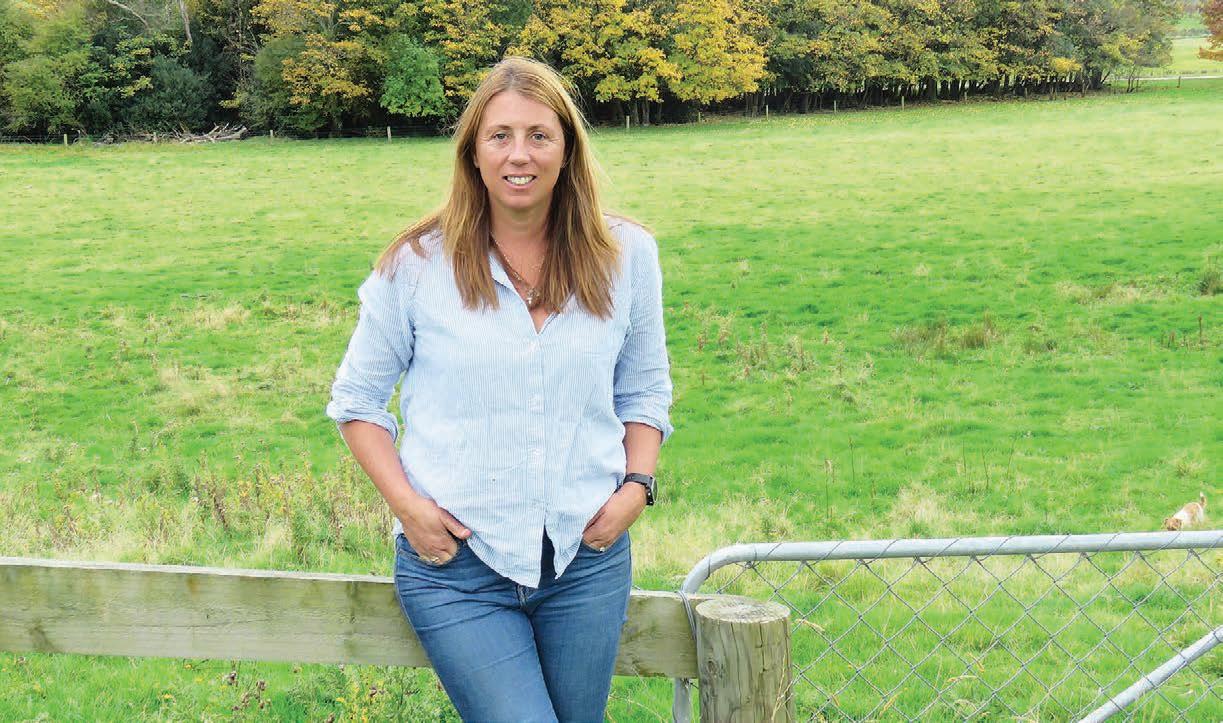


PEOPLE 20
National Party leader Christopher Luxon launched its election policy for agriculture on the Puketi Farms property of Terrance and Suzanne Brocx, Bay of Islands.
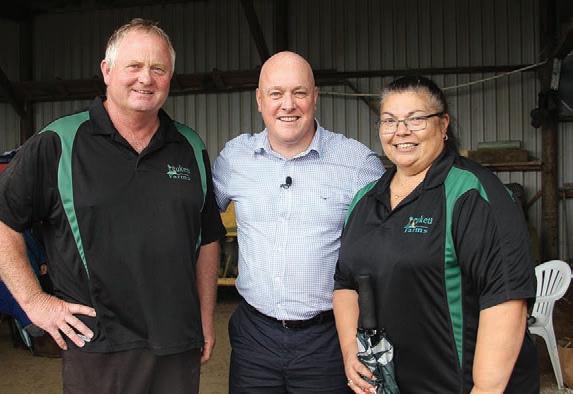
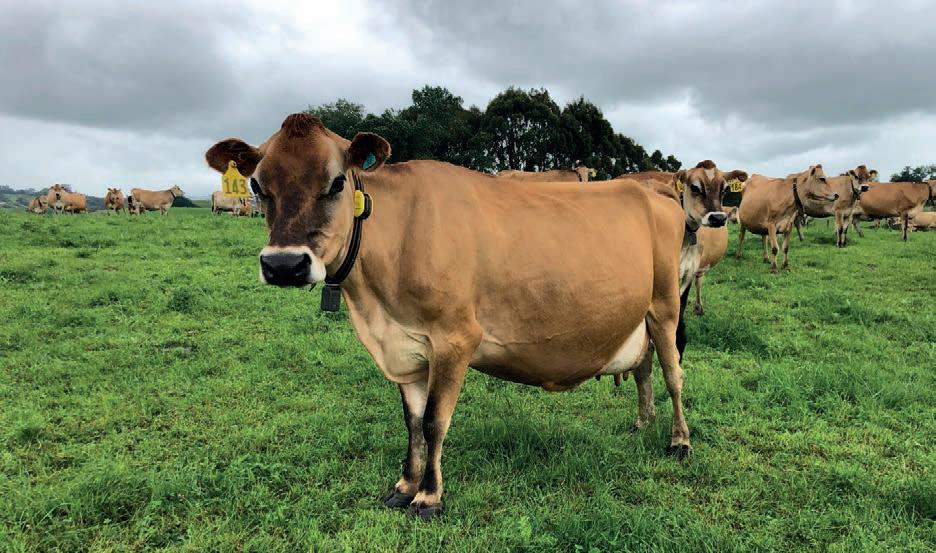
POLITICS 7
It is likely El Niño will be starting to influence Australasian weather patterns by July.
NEWS 4

NEWS 10
The Big Check-in is an online evening of support for rural people affected by flooding.
PEOPLE 14
The frontline of rural health is feeling neglected, misunderstood, frustrated and burnt out.Annette Scott NEWS Weather
Bryan Gibson | 06 323 1519
Managing Editor bryan.gibson@agrihq.co.nz
Craig Page | 03 470 2469 Deputy Editor craig.page@agrihq.co.nz
Claire Robertson
Sub-Editor claire.robertson@agrihq.co.nz
Neal Wallace | 03 474 9240
Journalist neal.wallace@agrihq.co.nz
Gerald Piddock | 027 486 8346
Journalist gerald.piddock@agrihq.co.nz
Annette Scott | 021 908 400
Journalist annette.scott@agrihq.co.nz
Hugh Stringleman | 09 432 8594
Journalist hugh.stringleman@agrihq.co.nz
Richard Rennie | 027 475 4256
Journalist richard.rennie@agrihq.co.nz
Nigel Stirling | 021 136 5570
Journalist nigel.g.stirling@gmail.com
PRODUCTION
Lana Kieselbach | 027 739 4295 production@agrihq.co.nz
ADVERTISING MATERIAL
Supply to: adcopy@agrihq.co.nz
SUBSCRIPTIONS 0800 85 25 80 subs@agrihq.co.nz
PRINTER
Printed by Stuff Ltd
Delivered by Reach Media Ltd
our
Andy Whitson | 027 626 2269 Sales & Marketing Manager andy.whitson@agrihq.co.nz
Steve McLaren | 027 205 1456 Auckland/Northland Partnership Manager steve.mclaren@agrihq.co.nz
Jody Anderson | 027 474 6094 Waikato/Bay of Plenty Partnership Manager jody.anderson@agrihq.co.nz
Palak Arora | 027 474 6095
Lower North Island Partnership Manager palak.arora@agrihq.co.nz
Omid Rafyee | 027 474 6091 South Island Partnership Manager omid.rafyee@agrihq.co.nz
Debbie Brown | 06 323 0765 Marketplace Partnership Manager classifieds@agrihq.co.nz

Grant Marshall | 027 887 5568 Real Estate Partnership Manager realestate@agrihq.co.nz
Andrea Mansfield | 027 602 4925 National Livestock Manager livestock@agrihq.co.nz
Dean and Cushla Williamson
Phone: 027 323 9407 dean.williamson@agrihq.co.nz cushla.williamson@agrihq.co.nz
Farmers Weekly is Published by AgriHQ PO Box 529, Feilding 4740, New Zealand Phone: 0800 85 25 80 Website: www.farmersweekly.co.nz
ISSN 2463-6002 (Print)







ISSN 2463-6010 (Online)
WAIT AND SEE: Meat Industry Association chief executive Sirma Karapeeva says the most interesting aspect of the UK joining the CPTPP is how the Japanese beef quota has been dealt with. STORY P8
The New Zealand Rural Land Company has completed the $63 million purchase of a forestry estate with $12m of cash left in by the vendors, NZ Forest Leasing.
Previously NZRLC had raised $24m in a rights issue and secured a green loan of $25m from Rabobank. The forest estate of approximately 2400ha on five properties in the Manawatū-Whanganui region has been leased back to NZFL for 20 years.
A solar farm featuring 80,000 panels over 54ha has been approved for farmland near Naseby, in Central Otago.
The property is owned by the Dowling family and is the farm where Californianbased space technology company Leolabs built a space tracking station in 2019. The Central Otago District Council signed off consent for Energy Bay Limited’s project earlier this year.
The Waikato Regional Council aims to better co-ordinate its response to major environmental issues after it met iwi, Fish & Game and the Department of Conservation.
The meeting followed the outbreak of avian botulism at the Whangamarino Wetland and the lower Waikato catchment in January. It is hoped that the council and these groups will be better prepared when future events occur, Waikato Regional Council science manager Mike Scarsbrook said.
Food prices increased 12.1% in the 12 months to the end of March, the biggest annual increase since 1989.
The increase was slightly above the 12% recorded in February. Cage eggs, potato chips and yogurt six-packs were the biggest drivers in the grocery category, Statistics New Zealand said. Fruit and vegetables were up 22.2%, a slight decrease from the 23.1% recorded in February.
Back in 1860, exporting meat to the other side of the world seemed about as easy as nailing gravy to the ceiling. But a few determined kiwis took the bull by the horns and now our grass-fed beef and lamb is sought-after all around the globe.
At AFFCO, we see the same pioneering spirit alive and well in farmers today. We’re playing our part too – exploring every opportunity to take New Zealand’s finest farm-raised products to the world.
pioneering spirit tells us nothing’s out of reach
a water quality state that existed before humans arrived.
THE latest report on the state of New Zealand’s freshwater has highlighted that there is still a lot of work to be done by the dairy industry to mitigate its footprint.


The industry is dealing with an issue that has been decades in the making after years of land use change intensification, DairyNZ general manager of sustainable dairy David Burger said.
The Ministry for the Environment (MfE) report, Our Freshwater 2023, underlines the pressure the country’s freshwater is under, blaming land-based activities for much of the damage.
None of its findings surprise Burger, he said.
New Zealand has a water quality challenge, and the industry is committed to addressing it.
“We know the job is not done and we know it will require further efforts to get there and we’re committed to that.”
Burger said the report uses an assessment framework based on
Continued from page 1
response to the recovery right,” the letter says.
“However, the ambiguity and delay in announcing next steps is doing more harm than good with grower frustrations, fears and stress rising.”
The letter says the timing of the government’s response will be the make or break for many businesses, which have only the next few weeks to make decisions about next season and beyond.
“The horticultural industry is a vital part of the country’s
“It sets the bar very high, especially in catchments where there has been a lot of land use change.
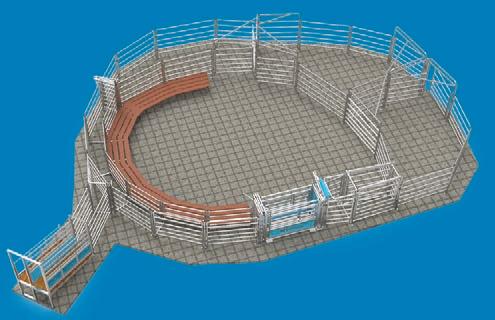


“If we are assessing it at a prehuman state, of course we expect a lot of sites across New Zealand to be degraded.”


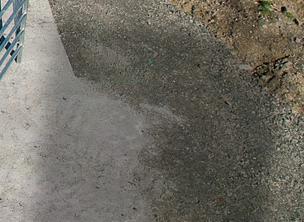
In comparison, the Land, Air and Water Aotearoa (LAWA) database, which uses national standards to classify its water quality (Bands A-D), shows that some sites have had water quality improvements across a range of metrics including nitrates, phosphorus and clarity.

This is data collected by regional councils across the country that is collated by the Cawthron Institute.
On the same day that the MfE’s report came out, LAWA data showed that 80% of sites across New Zealand are suitable for swimming.

Both used the same data set, but interpreted it against different things, he said.
“LAWA is interpreting the data against national environmental standards for freshwater – the national bottom lines. The MfE environment report from last
economy, providing thriving businesses, job opportunities and growth in regional communities.

“The timeline for industry to recover and to build back better is quickly closing.”

The open letter is signed by HortNZ chief executive Nadine Tunley together with industry heads from the kiwifruit, summerfruit, onion, fresh vegetables, asparagus and strawberry, citrus, persimmon and feijoa, process vegetables and apple and pear sectors.
“We look forward to receiving your immediate response,” the












week compares that data against water, a quality state expected to be in the absence of human disturbance.”
Burger emphasised this was not an excuse not to act on water quality and there are lots of sites within the LAWA data that highlight where standards are not being met, and the industry is continuing on that path.
Nor did he downplay the impact of years of land use intensification, when the industry grew from 1995-2014 with 40% more dairy land use, which affected water quality.
The MfE report is not all bad news. It acknowledges the work many individual farms have done to improve water quality, particularly around effluent and fertiliser management, stock exclusion and riparian planting.
“Overall, our phosphorus load is 25% lower over that same time period and the nitrogen load on individual farms would have been much higher. Of course the total load of N is much higher because we also increased dairy land area by 40% over that same timeframe.”
Much of the on-farm work is voluntary and is being done
letter concludes.
The industry’s plea was echoed by the National Party’s horticulture spokesperson, Sam Uffindell.
“From talking to growers on the ground and to the various industry groups, it is clear that growers need certainty so they can start rebuilding and assurance the government will be there to assist them. Clarity and decisive decision-making are also needed in other areas and local and regional councils need to step up and work with the government to make this happen,” he said.
by farmers to stay ahead of regulations, he said. There are signs that some of the trends are turning around – “there’s a big improvement in water clarity, for example”.
Other indicators, such as N levels, will take longer to turn around because of the lag between on-farm action and groundwater lag. That time lag could be years, he said.
Cow numbers have also stabilised and are declining. The annual dairy statistics for the 2021-2022 season show that overall, numbers dropped 1.26% to 4.84 million.
Burger said the work done by DairyNZ and science bodies such as AgResearch is making a difference, pointing to the
In announcing the extra funding earlier in the month, Agriculture Minister Damien O’Connor said helping rural communities to get back on their feet as quickly as possible is a priority.
“We understand farmers, growers and other rural businesses are critical to the local economies, providing jobs as well as export revenue for us all,” O’Connor said.
“It’s important they have access to help now to protect future production, for example by saving vital trees, vines and pasture, and making repairs.”
HIGH BAR: DairyNZ general manager of sustainable dairy David Burger says none of the ndings in the Ministry for the Environment’s Our Freshwater 2023 surprised him, though he points out that the study ‘sets the bar very high’ for water quality.

different environmental standards now in place compared to 20 years ago.
“We now have around 7000 farm environmental plans across the dairy sector – that’s about 65%. That’s been huge.”
These have helped farmers identify both environmental risks and actions they can take to improve their footprint. A lot of that work has been driven by catchment groups and the wider dairy sector.
“There’s a lot of great work happening to turn those trends around.”
He believes the work is acknowledged by the MfE – but getting that recognition from the wider public is a “continuous journey”.
Finance Minister Grant Robertson said the government is committed to helping people and businesses recover from the cyclone.
“The way we do that will change as we shift from the response to the recovery phase,” he said.
“We will continue to closely monitor the needs of local communities and work with local agencies, iwi and councils as we move from response to the recovery and rebuild from these extreme weather events.”
MORE: SEE PAGE 17
Small rural hospitals, often the only source of healthcare for the 25% of New Zealanders who live in rural areas, are feeling neglected, misunderstood, frustrated and burnt out. Neal Wallace reports.
THE quarter of New Zealand’s population who live in rural areas or small towns die at a younger age than their urban cousins.
That is one of the findings of a recent University of Otago study, which also found those in rural areas have more complex and poorer health outcomes than urban people – and the picture is even worse for Māori.
It also discovered a gap in knowledge about the place and contribution of rural hospitals in the health system, no description of rural hospital services in national policies, and little published research regarding their role or value.
This is despite around 19% of people in NZ relying on rural health services.
A small rural hospital will have less than 15 beds, which are
integrated with a primary-care service.
Larger rural hospitals have more than 30 beds, providing secondary care services separate from primary care, along with advanced diagnostics and some surgical and anaesthetic services.
Those interviewed for the study spoke about a sense of community connection with their rural hospital.
“This connection meant an awareness of specific health needs and the ability to provide appropriate and relevant services,” the report authors say.
Feedback also reinforced that having a hospital facility open 24/7 provides a safety net, allowed people to stay closer to home for their care, and acts as a conduit between community-based care and base or tertiary hospital care.
The study details chronic staff shortages, managers constantly
juggling rosters to accommodate leave, sickness and staff involved in patient transfers or training. It also found that centralised bodies and institutions have a poor understanding of rural health, which translates into health policy, funding, and regulatory systems.
“It was, therefore, difficult for rural hospitals to work within these structures and they were often left feeling invisible.”
Funding is a major issue. With a lack of autonomy over how the money is spent, it was seen as fragmented and assumes an urban-centric model of separated
University of Otago study
primary and secondary services.
“Participants felt their rural hospitals were undervalued by the centralised urban-based organisations they were dependent on.
“This feeling was further exacerbated at an individual level by participants’ regular encounters of negative perceptions of rural hospital services from city-based colleagues.”
The report concludes by noting there is an urgent need for a national policy for New Zealand’s rural hospitals that adopts an approach with a specific rural context.
“The current NZ health reforms offer a unique opportunity to enact this.”
CONSOLIDATION: Community-owned healthcare provider Clutha Health First was formed in 1998 after the district lost its hospital as part of nationwide consolidation of services.
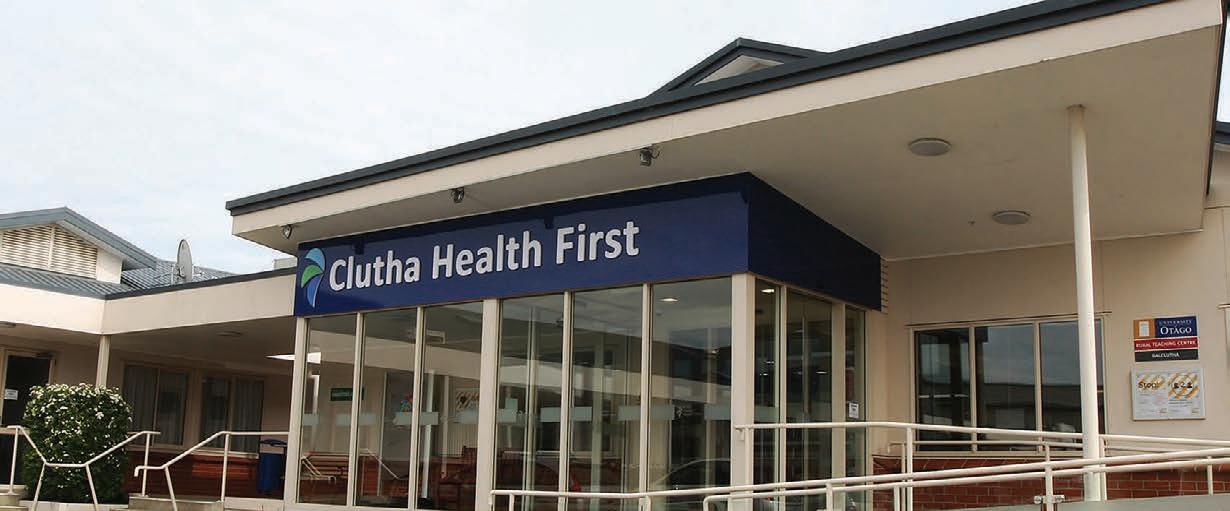
ON ONE side of the Clutha Health First hospital hallway, the nurses qualify for the pay parity settlement, worth between $16,000 and $20,000 per person.
Such are the complexities of that government agreement, however, that on the other side of the hall nurses who have a different job description do not.
“It beggars belief,” concludes Clutha Health First manager Sharon Mason.
Such are the frustrations of managing a rural hospital with its funding limitations and difficulties in recruiting staff.
But Mason said the consequences go well beyond eyerolling, potentially leading to the loss of valued and irreplaceable staff members.
The community-owned healthcare provider was formed in 1998 after the district lost its hospital as part of nationwide consolidation of services. Now owned by a trust, Clutha
Health First (CHF) holds contracts with Health NZ, ACC and primary care providers, employing 100 staff offering 14 clinical beds as part of hospital, community, primary and general practitioner health services it provides to about 17,000 people in the South Otago district.
It offers a range of community services, including maternity, radiography, laboratory, physiotherapy, and surgical bus and outpatient services.
In the 2021-22 year CHF admitted 409 people to its inpatient ward, gave after-hours or emergency care to 2217 people, assisted 44 women giving birth and administered chemotherapy to 124 people.
Mason said the current perilous state of health reflects decades of underinvestment.
After a career in health administration, Mason spent the past few years in another sector, and on her return to health was surprised at how much further it had deteriorated.
In addition to increasing funding, Mason said rural health needs to be identified and
promoted as a speciality area of medicine.
Clutha is seeking two extra GPs and Mason said feedback from potential candidates overseas is that they are concerned about the state of New Zealand health – even though the United Kingdom’s NHS is also facing challenges.
“They are asking ‘Why would we jump out of the fry pan and into the fire?’” said Mason.
“They have read stories about the state of the NZ health system and are asking why would they swap?”
The consideration is not so much the money, but the working environment.
A new and current risk is uncertainty about the health reforms, accentuated by the high and regular turnover of government officials, requiring sector groups to constantly put their case.
“The risk is there are so many changes and turnover of staff among Health NZ at the moment. The challenge is to ensure the intellectual knowledge is not lost,” Mason said.


RAKAIA doctor Sue Fowlie said her staff are knackered.

The toil of covering staff vacancies, financially balancing a business squeezed by tight budgets and the pressure of meeting the needs of their Mid Canterbury patients with limited resources are taking a toll on her 15 colleagues.
She agreed with Fiona Bolden, the chair of the Hauora Taiwhenua Rural Health Network, that rural health services are collapsing from staff shortages and a system that doesn’t recognise the needs of rural communities.
recruited offshore is costly.
The recruiters of a successful candidate are paid a fee and the employment package has to be competitive with urban practices.
Fowlie said government funding needs to be aligned to primary health needs, which will reduce pressure on hospitals.
Rural patients tend to be older and their illnesses or injuries more complex, but funding for GP visits does not cover the extra time needed for consults.
Fowlie said rural Canterbury GPs are caught up in staffing and funding issues facing hospitals. She said GP referrals that would previously have been accepted by specialists are now being rejected and patients sent back to their GPs for further consultation and tests.
This adds cost and workload to overburdened practices and frustration to patients.
Dr Sue Fowlie Rakaia Medical Centre“I’m in my late forties and I don’t want to continue to work like this,” said Fowlie. “It’s not what I came to NZ to do.
“It’s a job I love but at the moment it’s not much fun.”
Her concerns and pressures are shared by her staff, who are trying to balance the needs of their community with family and lifestyle.
“They’re getting knackered,” said Fowlie.
“It’s not enough for people to love what they do anymore, they’re burnt out.”
She needs to employ two nurses, a GP and an administrator.
Replacing staff with those
More GPs need to be trained, and working in rural practices must be made more appealing through a better-managed workload and funding.
Along with the primary health care focus, more funding is needed for mental and ancillary specialist health services.
“That will make a difference. It’s shifting the balance of care to more of a primary focus, which will keep people out of hospital.”
She also sees an opportunity for nurses to upskill to perform some tasks currently done by GPs.
Fowlie was raised on a farm in Scotland and loves the rural lifestyle, but she said her naturally positive demeanour is being challenged by current issues.
It is difficult for rural hospitals to work within these structures and they are often left feeling invisible.MISUNDERSTOOD: A University of Otago study found centralised bodies and institutions have a poor understanding of rural health, which translates into health policy and funding. Neal Wallace NEWS Health Neal Wallace NEWS Health
‘I don’t want to continue to work like this’: GP
It’s not enough for people to love what they do anymore, they’re burnt out.



been well aware that putting other things on the table risked unravelling the whole deal.”
THE government is walking a tightrope trying to impose its values on trading partners while demanding they open their markets to New Zealand’s exports, according to its former trade envoy.

Mike Petersen, who served both Labour and Nationalled governments as special agricultural trade envoy between 2013 and 2019, said such an approach is not out of step internationally. Increasingly trade agreements are more than just about opening up markets to the free flow of goods and services. But this is not without risks for a trade-dependent country like NZ, Petersen warned.
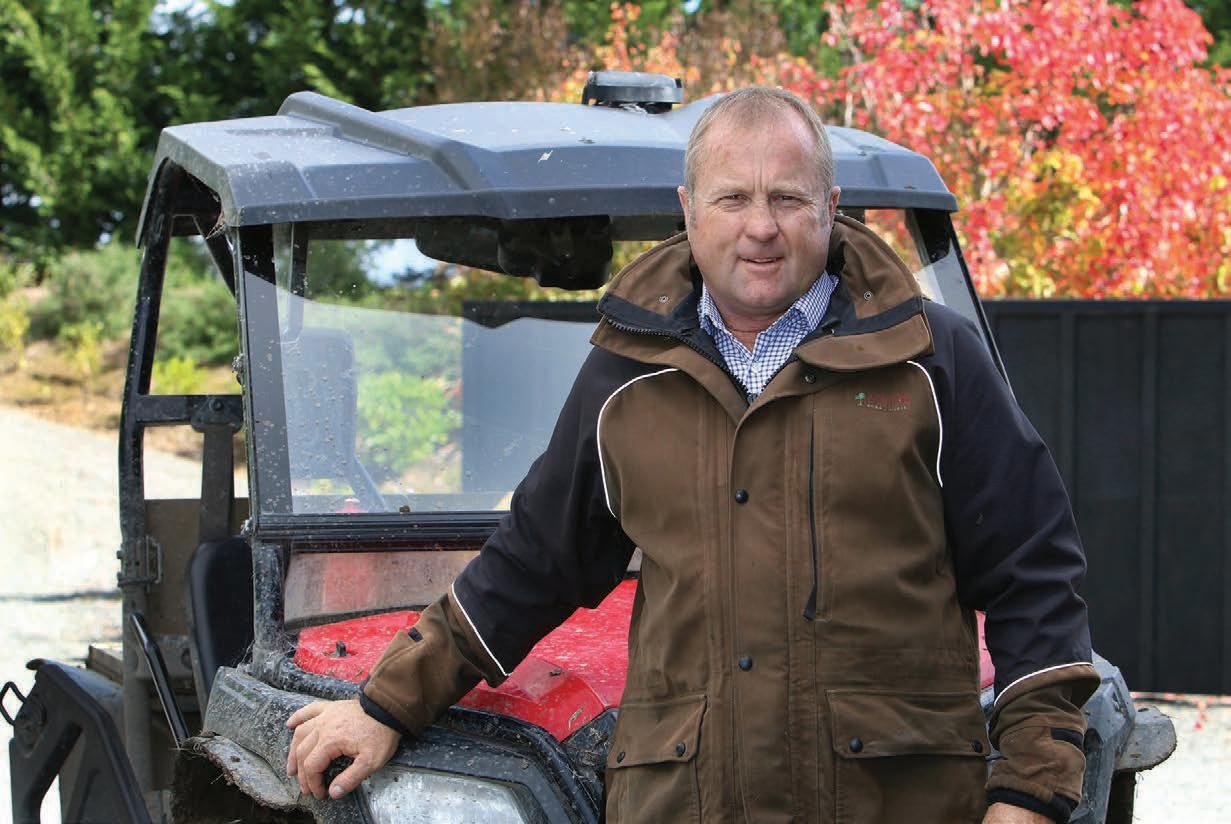
The debate is in the spotlight after Farmers Weekly revealed negotiations for a long-awaited trade agreement with the Gulf Co-operation Council (GCC) were derailed after Trade Minister Damien O’Connor insisted on “updating” them to better reflect the Labour Party’s Trade for All Agenda.
Introduced in 2020, the Trade for All Agenda emphasises issues such as climate change, labour rights, gender equality and the rights of indigenous people, among other issues, as priorities for NZ trade negotiators.
Petersen said a deal worth up to $60 million a year to NZ exporters is now at risk after the Middle Eastern club of six oil-rich nations withdrew its previous offer to scrap tariffs on agricultural products.
“The deal as it had been proposed had pretty much been agreed,” Petersen said.


“I do not know if I would call it naïve, but they would have
The GCC includes Saudi Arabia, the world’s largest oil producer, and Qatar, the largest exporter of natural gas, and the scene of hundreds of deaths of immigrants working on football stadiums ahead of last year’s football World Cup.
It is understood the GCC withdrew its offer after O’Connor demanded commitments from the GCC on climate change and workers’ rights, including to “adopt and maintain laws which govern acceptable conditions of work with respect to minimum wages, hours of work and health and safety”.
Petersen said such demands were always going to be difficult for the GCC to meet.
But NZ’s new demands raised other questions for Petersen.
Just how deeply should NZ interfere in the domestic affairs of sovereign states under the guise of trade negotiations?
“Do we really have the ability
to influence other societies?” Petersen asked.
“Because that is what we are talking about here.
“We are not just talking about other agricultural sectors [in other countries], we are talking about wider society and that is quite a big weight to bear for a small trading country like NZ.”

Petersen said NZ had previously “taken pride” in not meddling in other countries’ affairs when
pushing its trade interests.
While travelling to the United States, the United Kingdom and Europe as the government’s trade envoy, Petersen said he was frequently asked his view on those countries’ practice of heavily subsidising the output of their agricultural industries.
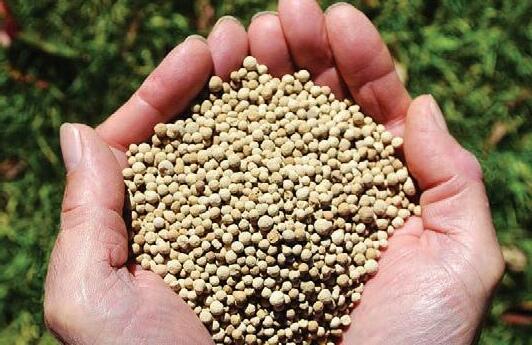
“My standard line was that it is not for me to try and interfere in your domestic settings.
“They are not decisions that NZ should be making for you.
“We have championed our cause and put our case about why we think we should have an opportunity in those markets. We have not generally interfered in domestic markets.”
Aside from the moral questions it raises, Petersen said Trade for All has the potential to act against NZ’s economic self-interest –as was evident from the GCC’s response.
“Is the cost of non-entry [into trade agreements] too large to bear by sticking to those principles?

“People frowned on us when we did the China deal because it looked like we were getting into bed with the same sorts of values.
“And you could still argue that today ... but look at the economics
of the China deal and what it has done for NZ.
“If we hadn’t done that deal we would have been absolutely screwed.”
Despite its criticisms, Petersen isn’t sure National would turn back the clock.
We may end up ruling ourselves out of some markets that could be quite lucrative for the NZ economy.
Even though it has played badly with the GCC countries so far, the government has concluded deals with the UK and the European Union since introducing Trade for All three years ago.

“I think we are in a position now where Trade for All has become a core part of the way we do things.
“I do not know if the Nats would do it any differently to be honest.
“But it does mean that we may end up ruling ourselves out of some markets that could be quite lucrative for the NZ economy.”


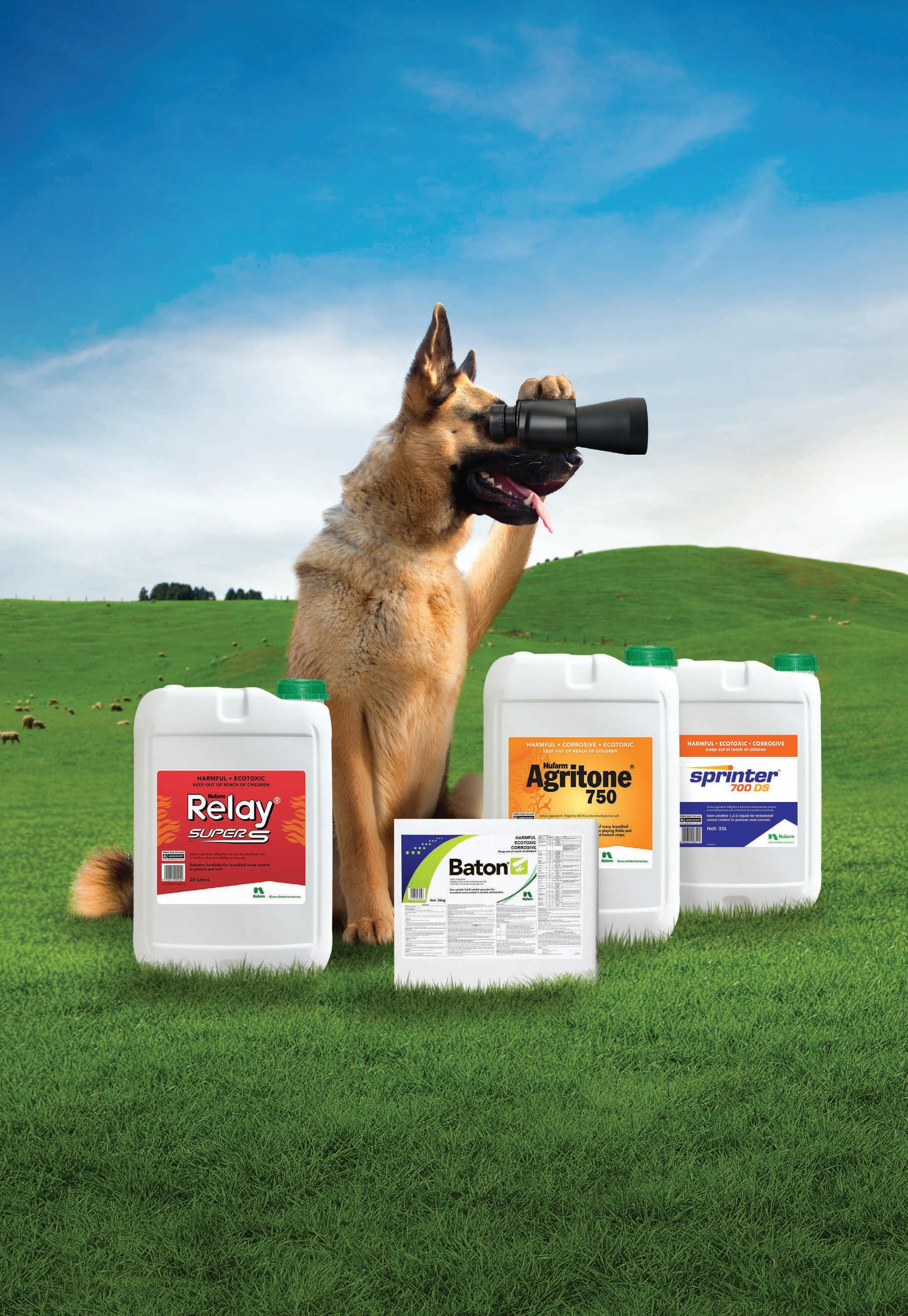

AGATHERING of Northland farmers applauded the National Party’s agricultural policy after hearing from leader Christopher Luxon and agriculture and trade spokesperson Todd McClay.
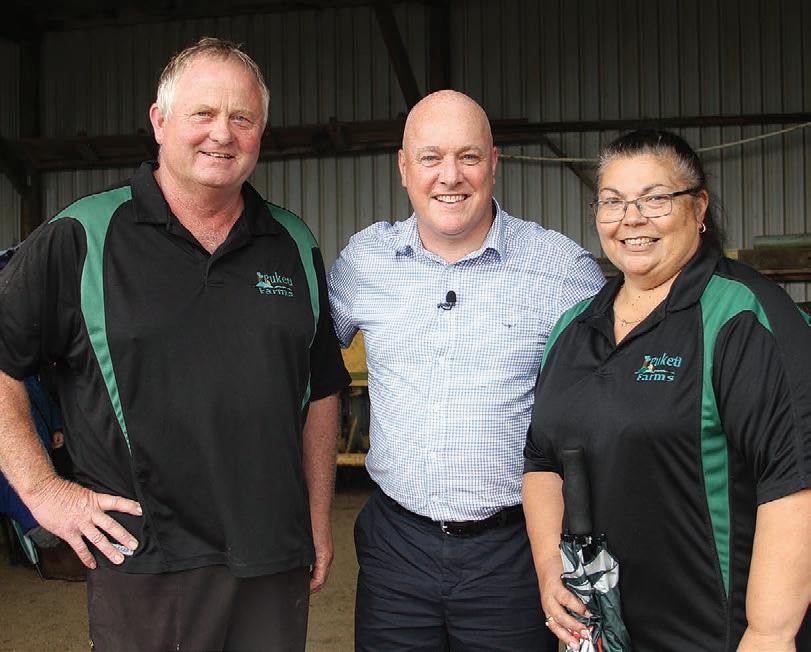
An audience of around 100 farmers, sector leaders and party members gathered to hear Luxon and McClay set out the election policy on a Bay of Islands dairy farm owned by Terrance and Suzanne Brocx.
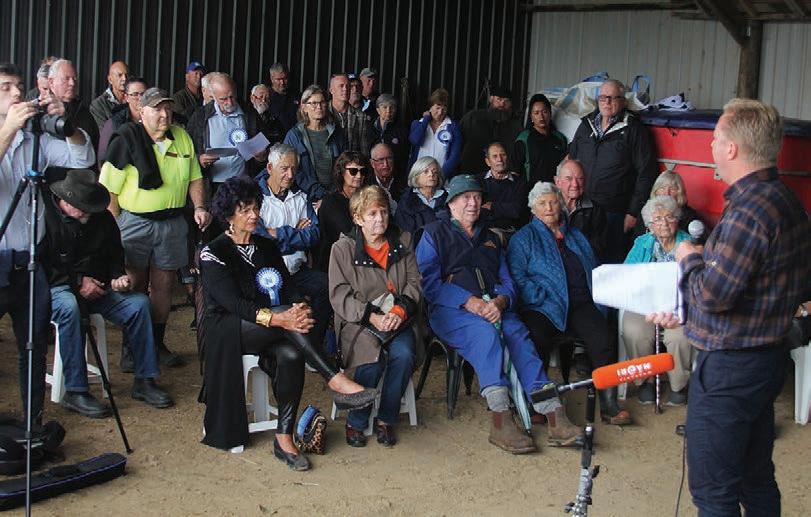
A proposed end to foreignowned forestry for carbon credits drew the warmest applause among 19 policy initiatives released by McClay and environment spokesperson Scott Simpson. A promise to repeal Three Waters was also loudly cheered. Neighbour and Ayrshire breeder Malcolm Hutchings said the pledge to refocus the definition of Significant Natural Areas to make the rules workable for landowners is welcome. Acting under central government direction, the Far North District Council has identified large numbers of SNAs and potentially restricted the use of such areas for farming.
Suzanne Brocx pleaded with the National leaders to make highspeed connectivity a priority, suggesting it be number 20 on the policy list.
“We are only 20km from Kerikeri and we can’t get a reliable internet
or mobile phone connection,” she said.
Federated Farmers national vice-president Wayne Langford welcomed the promise to cut red tape and leave farmers to make environmental improvements in response to market forces.
Livestock exports aren’t a farming issue but more a shipping matter and Federated Farmers will closely monitor the conditions on which the trade might resume, he said. Resuming live exports is another National pledge.
Langford said the unravelling of red tape around farming would happen quickly.
He called for consistency across government regulations, market requirements and processor programmes to avoid duplication.
Luxon said National has balanced the property rights of farmers and their options to sell farmland to the highest bidder with the planting of forests by foreign owners specifically for carbon credits.
“We are going to ban foreign companies buying our sheep and beef farms for carbon farming.
“Farmers tell us they are deeply concerned by the destruction of rural communities.
“School rolls reduce, ancillary businesses move away and we are going to regret that in 30 years’ time.”
Luxon expected legislation would be required and said the Overseas Investment Office would make the determinations.
The framework of National Policy Statements leading to
local government regulations will be studied and reformed where necessary, he said.
“We have perverse outcomes now in the conflict between winter grazing and freshwater plans, farmers taking councils to court and thousands of them having to apply for resource consents.
“Some whole farms have been designated SNAs, and in many cases up to 25% of farms.
“We still want some regulation, but at present we have badly drafted, poorly executed legislation driving perverse outcomes.”
Groundswell co-founder Bryce McKenzie said National’s Getting Back to Farming policy reflects much of what protestors have been calling for.
“In particular, Groundswell supporters will be pleased to see National has heard our repeated calls for local approaches to agricultural regulations as one size just does not fit all.”
Host of the policy launch
Deliver smarter rules for the future
• Introduce a 2-for-1 rule for the next three years: for every new regulation that central or local government wants to introduce on the rural sector they must take away two.

• Require local and central government to assess the costs of all new rules on the rural sector and publish the ndings.
• Establish a permanent Rural Regulation Review Panel to consider every local and central government regulation a ecting farmers and advise the central government on solutions.
• Introduce a no duplication rule – the government cannot ask farmers for the same information twice. It is up to o cials to share supplied information where appropriate within the system.
• Make appointments to reference and advisory groups based on skills and experience, not politics.
• Commit to real consultation –o cials must consult in a genuine, open and transparent basis and respect di ering views.

• Double the Recognised Seasonal Employer (RSE) worker cap over ve years to 38,000 per year and explore other countries entering the RSE scheme.

Terrance Brocx said regulations like stock exclusion and winter grazing have the right intent but are badly executed.
Northland Regional Council encouraged catchment groups to come up with workable plans but central government ignored that work and imposed nationwide rules, he said.
Beef + Lamb New Zealand chief
• Change accredited employer work visas for agriculture to create a path to residency and eliminate the median wage requirement to allow wages in line with local workers.
• Ban foreign direct investment for the purpose of converting farms to forestry to collect carbon credits.
• Focus the de nition of Signi cant Natural Areas on areas that are signi cant by making the rules workable and clear for landowners and councils.
• Change the National Policy Statement for Highly Productive Land to allow a broader range of productive rural activities such as on-farm storage ponds and sheds and o -farm dairy factories and vegetable processing.
• Scrap the ute tax.
Get Wellington out of farming
• Change rules for culverts and how wetlands are de ned in legislation to only cover actual wetlands, rather than areas with limited environmental value.
• Make stock exclusion rules more practical to protect critical source areas while avoiding unintended consequences like unnecessarily large exclusion zones for small water bodies.
executive Sam McIvor said he was encouraged by National’s plans to correct some of the existing unworkable rules.
“It’s pleasing to see National’s recognition of the importance of striking a balance between environmental and economic outcomes, which is essential for the long-term viability of the agricultural sector,” he said.
• Amend the proposed National Environmental Standard for drinking water to avoid excessive compliance requirements for small providers of 30 connections or fewer and return autonomy to small rural communities.
• Defer central government rules requiring resource consents for winter grazing until freshwater farm plans are in place, with freshwater plans to become riskand outcomes-based.
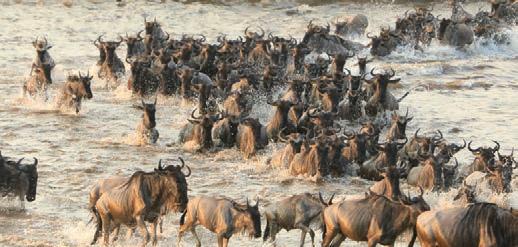
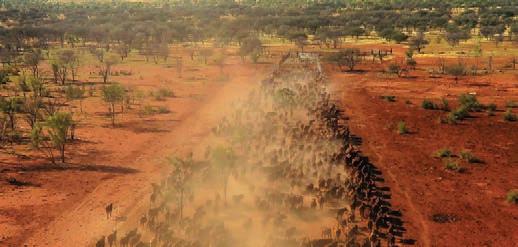
• Replace the winter grazing low slope map and low slope rules for stock exclusion with more e ective catchment-level rules to accommodate regional di erences.
• Restart the live exports of cattle with gold standard rules set in regulation to protect animal welfare and safety. National will require purpose-built ships and introduce a certi cation regime for the importers of destination countries to ensure animals live in conditions at the same standards required in NZ.
• Repeal Labour’s rebranded Three Waters and replace it with Local Water Done Well – National’s plan to restore council ownership and control of water assets while ensuring water services are nancially sustainable.
MEAT exporters are bracing for the impact on their lucrative beef trade with Japan from the United Kingdom joining the Comprehensive and Progressive TransPacific Partnership.
The UK was provisionally welcomed into the Pacific Rim trade deal after substantially completing negotiations with the 11 other member countries last month.
The reduction in tariffs on beef exports to Japan from 38.5% to 9% by 2033, was the biggest prize for New Zealand exporters from the Comprehensive and Progressive TransPacific Partnership’ (CPTPP) predecessor agreement, the TransPacific Partnership.
Since Japan’s ratification of the TPP, NZ’s beef exports to the country have jumped from $166 million in 2018 to $349m last year.
Meat Industry Association chief executive Sirma Karapeeva said of all the CPTPP markets where increased competition from the UK could arise as a result of its accession to the agreement, the Japanese beef market is the most important to NZ exporters.

The best outcome for NZ would be a new quota for British exporters to access the Japanese market.
Less desirable would be for NZ exporters to have their existing quota entitlements trimmed and redistributed to UK rivals.
“For us that would be the most interesting aspect – how has the quota been dealt with,” Karapeeva said.
Officials are yet to share that level of detail with exporters.
“There may have been some tweaks made to accommodate that and to mitigate some of the pressure. But until we see the details and are briefed on the outcomes I cannot say whether we are concerned or not.”
there are still countries out there that value the rules around international trade.”
Todd McClay National Party

Aside from the potential for increased competition, Karapeeva believed the expansion of CPTPP to include the UK was a positive development for NZ exporters.
“It is a good indication that
The National Party’s trade spokesperson, Todd McClay, agreed that the expansion of the CPTPP should be welcomed. But he said preserving gains for exporters from the original agreement should be a negotiating priority for the NZ government as more countries are added.
“If everyone is coming in then you negotiate better access with some of the countries that it was hard to get better access out of in the first place.
“Japan is an example and so is Canada.
“Yes, we want them to come in but Canada and Japan have got to liberalise more otherwise we will keep talking for a while.”
China, Taiwan, Ecuador, Costa
Rica and Uruguay all have applications to join CPTPP pending.
Members currently are Japan, Australia, NZ, Peru, Malaysia, Brunei, Chile, Canada, Vietnam, Singapore and Mexico.
The parliaments of the existing members must pass legislation before the UK can formally enter the agreement and tariffs are reduced.
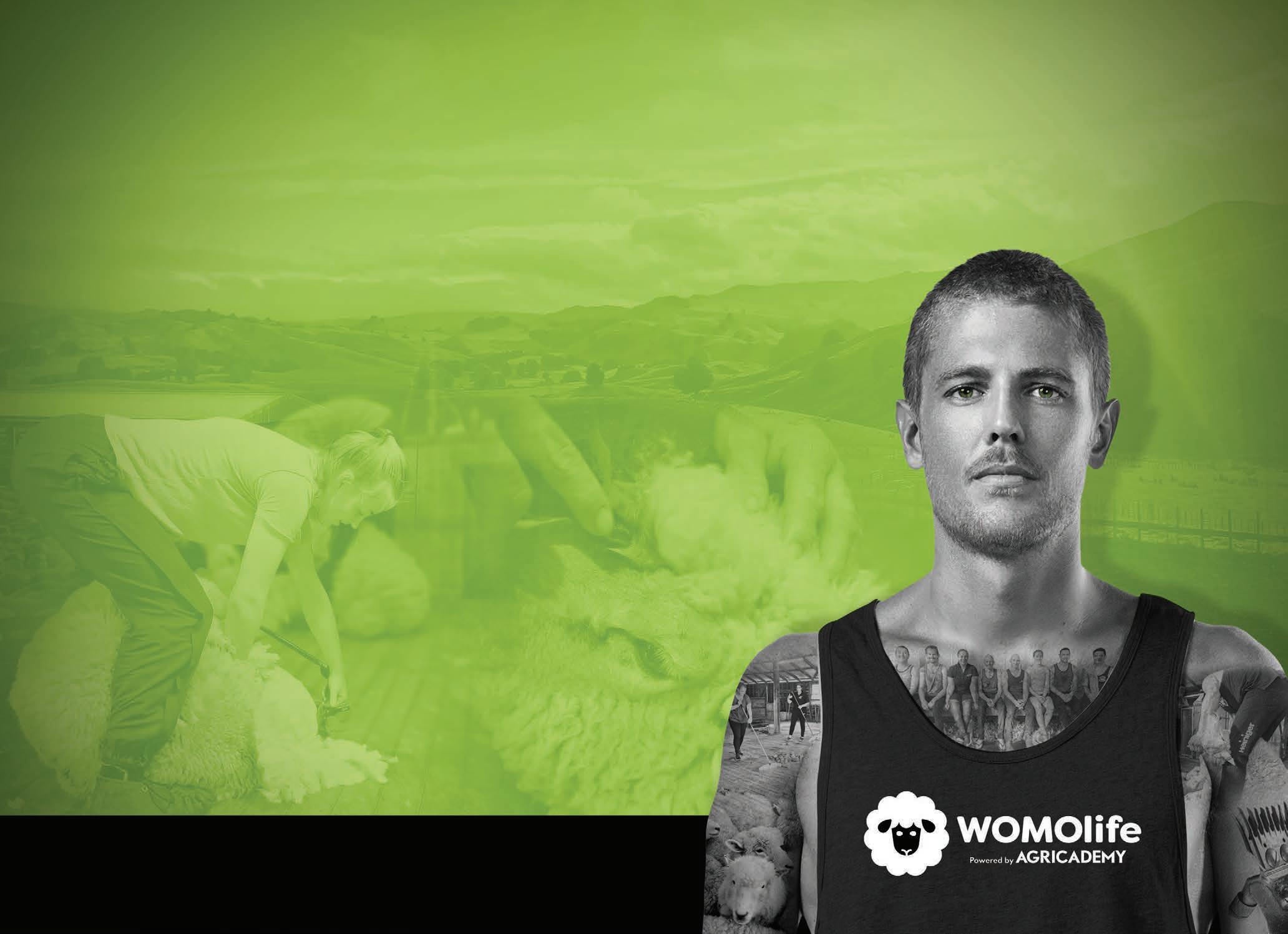
If everyone is coming in then you negotiate better access with some of the countries that it was hard to get better access out of in the first place.
NEW Zealand-grown Merino wool is proving a lifesaver for premature babies and their families through a partnership between specialist wool business Devold NZ and the Little Miracles Trust.
The trust is a not-for-profit that provides support for whānau who are going through a neonatal intensive care experience with their babies.
“The properties of wool are magical for premature babies,” Little Miracles Trust chief executive Rachel Friend said.


“Natural fibres and in particular Merino wool are best to keep them warm when they have so little fat.”
Friend approached premium Merino outdoor brand Devold for assistance in securing woollen blankets after a chance meeting at a recent Merino wool conference.

Devold NZ has since donated 500 Merino blankets to the trust.
Friend said Devold’s donation has the potential to be a gamechanger for babies and their whānau, both to give the little ones access to the best materials early on in life, as well as to promote Merino over fabrics
such as polar fleece, which can be harmful.
“For these tiny babies, part of their journey in hospital is putting on fat and gaining the ability to regulate their body temperatures.
“Merino is a natural fibre, so it lets their skin breathe unlike polar fleece, and they won’t overheat and risk a chill.
“That’s why it works year-round as well, and the purer the merino the better, so Devold’s blankets, which are 100%, are perfect,” Friend said.
Merino wool conference and with winter coming, Friend reached out to Smith.
“We’re pretty desperate for it. Actually trying to get the Merino cloth itself is really difficult and can also be quite cost prohibitive.
“They [Devold] have been able to deliver the goods, which I’m so excited about.”
The Little Miracles Trust –known as the Neonatal Trust until 2022 – has been around for 30 years.
“We’re staffed by veteran parents, so we’ve all had a similar experience,” Friend said.
The trust has a neonatal intensive care unit frontline team, which is made up of part-time workers.
Rachel Friend Little Miracles TrustThe support was an obvious fit, Devold NZ general manager Craig Smith said.

“Premature babies need to be looked after and wool is the product to do that.
“It’s nature helping nature. It really is the best material for the job,” Smith said.
Friend said 10% of NZ families will go through an experience with intensive neonatal care at some point.
Having discovered Devold at the


“They are there to walk alongside these families as they go through a really traumatic time with their little ones.”
There are 23 units in total and the trust works closely with each unit to get hold of the items that the families need.
Friend said the kind of peer support Little Miracles offers has been shown to reduce anxiety in those going through tough times like these.
“It’s something nobody ever prepares for or thinks is going to happen to them.
“We supply care packs and we have a hardship fund because there are ever-increasing families
who struggle financially or logistically.
“What we offer ranges from emotional right through to practical support and extends into the time after families have taken their babies home.”
And that includes keeping their babies warm.
“I just want to say a huge thanks to Devold for stepping up and being there, for them to be doing
this makes a massive difference,” Friend said.
Smith said the partnership was a natural fit for Devold.
“It’s something pretty special that we can do, providing blankets from our own mill in Lithuania and made with fine Merino from NZ. “We’re proud to clothe athletes at the top end and little premature babies when they come into the world.”
achievements and to inspire others,” Federated Farmers arable industry chair Colin Hurst said.
is directly supporting the $30bn pastural sector and pig and poultry as well,” Hurst said.
THE New Zealand arable industry has put out the call for nominations to celebrate its innovators and heroes and reward excellence, in the sector’s second annual showcase awards.
Federated Farmers, the Foundation for Arable Research (FAR), United Wheatgrowers (UWG) and the Grain and Seed Trade Association (NZGSTA) have joined forces to present the New Zealand Arable Awards (NZAA), a showcase of the sector’s people and products.
“We are on the hunt for our tall poppies, not to chop them down but to celebrate their
Hurst said the seed was for planted for the awards in 2017 when the need to celebrate successes within the arable sector was recognised.
Feds kicked off the arable grower of the year at that time, along with UWG, which has mounted its wheat awards for the past 25 years.
The four arable bodies then came together for the NZAA.
Hurst said the arable industry tallies $1 billion of farmgate sales annually, with the seed sector alone increasing volume 41% in the past four years to more than 80,000t.

“I always like to quote ‘it all starts with seed’, meaning arable

“These awards are arable’s time to shine ... we are really proud of our people, a lot of whom are very humble and like to go under the radar, so this is promoting what our people do, really great work.
“We are excited to bring the NZ Arable Awards to life, an event put together by industry for industry.”
Twelve industry champions will be recognised at an event at Wigram Air Force Museum, Christchurch, on August 10.
Award categories include employer of the year, recognising an employer in the arable sector who has demonstrated exemplary employment practice; plant breeder-researcher, recognising
an individual or team showing success in the past five years; arable researcher, recognising an individual or team where work has contributed to the ongoing success of the NZ arable industry; and growers of the year for maize, grain, and small seeds, recognising high quality, high-yielding crops and good arable management across the three crop categories.

The agronomist of the year celebrates someone who goes above and beyond to help growers produce high quality, profitable crops. The environmental and sustainability award will showcase an arable farmer or business producing high quality crops while effectively demonstrating practice and/or innovations that reduce environmental impacts.
Rounding off the industry celebrations will be the overall arable farmer of the year, emerging talent, and arable food champion awards.
New to the 2023 awards is the innovation award, recognising those across the arable sector who are innovative or lead the way with new crops, tools and techniques with the aim of improving economic and environmental sustainability. This could be a grower, researcher, industry spokesperson, foodie, journalist or anyone associated with the industry.
For more information and to submit nominations go to: https://www.arableawards.co.nz/
Sam Whitelock Farmstrong AmbassadorNatural fibres and in particular wool are best to keep them warm when they have so little fat.Annette Scott PEOPLE Arable
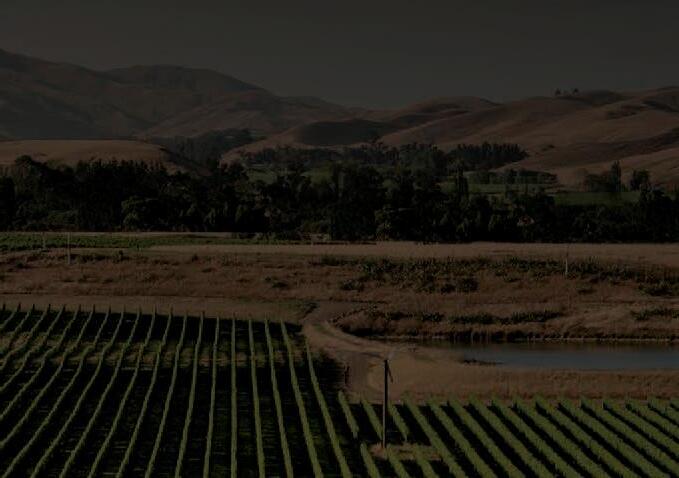
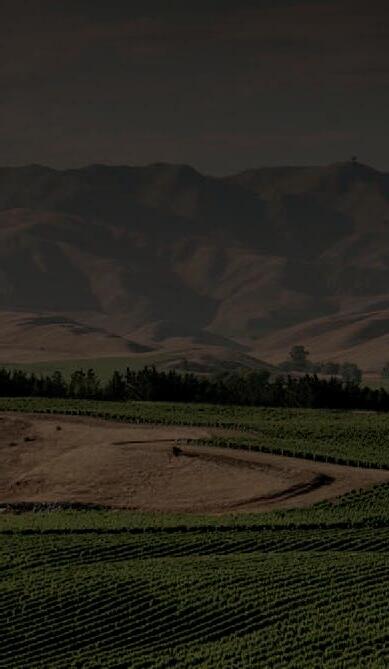
 Richard Rennie NEWS Weather
Richard Rennie NEWS Weather

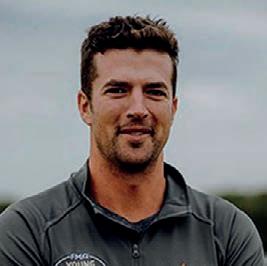

DESPITE a current weather pattern dominated by warm tropical light conditions in the North Island, El Niño could become a reality in New Zealand by later this year based on the latest climate modelling.

A climate driver update from Australia’s Bureau of Meteorology says it is likely El Niño will be starting to influence Australasian weather patterns by July and be in full force come August.
Meantime between now and then major climate influencers are parked firmly in neutral as the latest La Niña event finally fades from the weather dial.
WeatherWatch director Philip Duncan said even the most conservative weather modelling systems are predicting an El Niño to come. The weather system is known for its increase in westerly weather conditions and drying effects along the east coast.
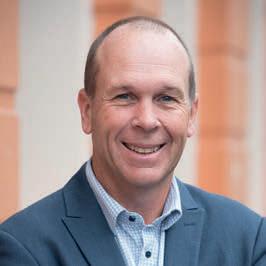
“There is also the potential there that this could be a prolonged one. When you look at the monthly sea surface temperature predictions, you can see where we have come from to where we are heading is significantly different.”

In December last year sea temperatures were as much as -0.8degC below average, while come October predictions are for an average temperature to be 2degC above its long-term average.
All seven key climate change models have predicted the sea surface temperature anomalies that accompany El Niño to be well in play by August.
With El Niño dominating winds from the westerly quarter, it is possible NZ will experience its first windy spring for some years if the models prove correct, said Duncan.
“But every El Niño event is different, and until it forms it can be hard to know how bad it will be.”
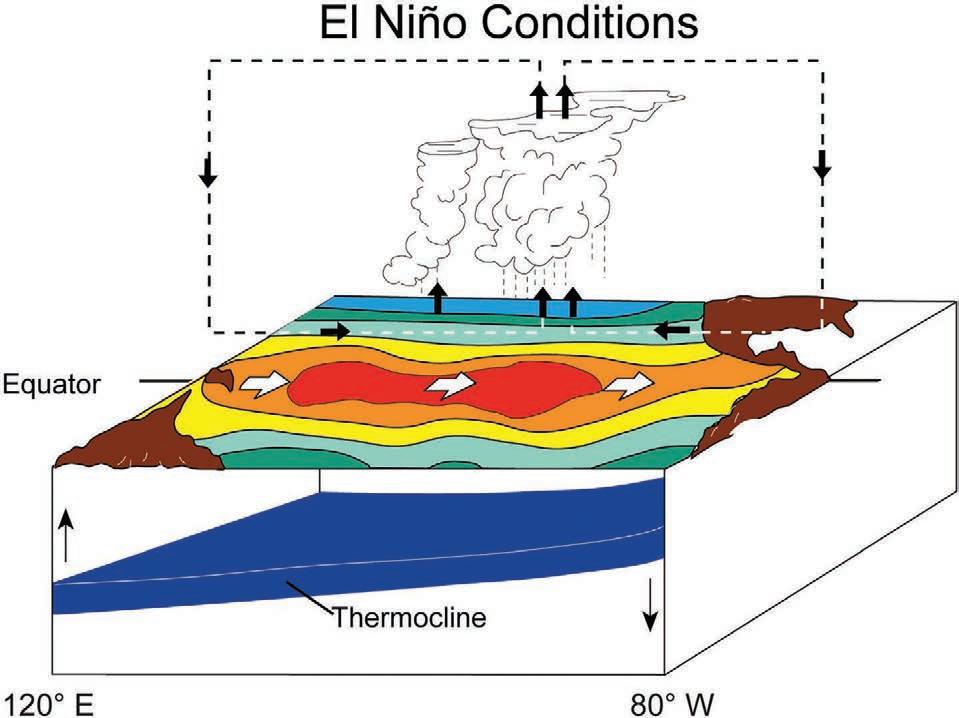
Typically, El Niño events have a five to seven-year return period. The last one recorded in 2015 had strong southwesterly winds through to December, but with conditions changing to more northerly than usual, bringing rain that alleviated concerns over an El Niño drought arising.
The UK Guardian recently reported the likelihood that this year’s El Niño event could have the makings of a “super El Niño” before year’s end.
However, forecasters including Duncan have cautioned about reaching that conclusion too soon,
while the Australian Bureau of Meteorology cautions about the accuracy of models forecasting the event in autumn, compared to other times of the year.

At present the Southern Annular Mode (SAM) is in a neutral position, along with the Indian Ocean Dipole (IOD). Should they move to a positive position in coming months this could suppress winter and spring rainfall over Australia and exacerbate El Niño’s drying effects.
Predictions of a possible El Niño kicking off from springtime have cattle market analysts nervously eyeing the impact, should Australian farmers have to start offloading stock for processing in drier weather.
The past three years have witnessed massive restocking across Australia, sustained by significant and continuing rainfall across much of the continent.
AgriHQ analyst Mel Croad said she is keeping a sharp eye on what








LURKING: WeatherWatch director Philip Duncan says El Niño is lurking in the wings, likely to fully reveal itself come springtime.
may unfold across the Tasman.


“The possibility of a swing to a strong El Niño does increase the risk of larger livestock offloads in Australia, leading to even higher production and red meat exports than were forecast earlier in the year.
“Whether or not El Niño reaches our shores, we need to keep an eye on Australian production as it could saturate markets, potentially lowering export returns later in the year.”


of timber that have no evidence of cuts on them to indicate they may have recently been harvested.
DESPITE the frequent use of the term, forest slash has proven to be a minimal part of the waste wood that was left in Cyclone Gabrielle’s wake throughout the Hawke’s Bay region.
A research report commissioned by Hawke’s Bay Regional Council found pine comprised the majority of the timber type strewn across the region’s water courses. Overall, on average pine comprised 53% of the wood debris across the 15 sites, and was up to 90% in some spots.
The researchers split the pine into debris type to better identify its source, defining the pine as “pine pieces”, “long residence pine”, “windthrow pine” and “cut pine” (slash).
They found it was predominately present as “pine pieces” in the 15 sites analysed.

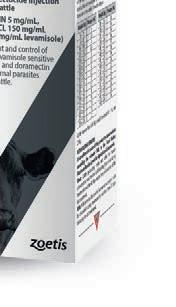


Pine pieces are defined as pieces
On average they comprised 37% of the debris total, trailed by long residence pine forming only 7%, and cut pieces from slash sites averaging only 3%. The maximum contribution of cut pine was 9% at one site.
With pine averaging just over half the debris source, the other species identified were poplar, willow and “other” species.
The sites identified with the greatest proportion of pine in debris included the Wairoa and Waikare river mouths, with 90% pine in the debris.
The areas with the lightest amount of pine were sites at Tutaekuri and Ngaruroro at 5% and 30% respectively.
Data released by the Gisborne District Council in late February found that pine constituted about 70% of the debris on beaches around the city, and was as high as 80% in the Ūawa-Tolaga Bay district.

However, the figures gathered by Gisborne District Council have been challenged by the Forest Owners Association for the methodology used.
Association spokesman Don Carson said the group feels the Hawke’s Bay research is statistically sound, however, and accepts the findings.


“But what it also highlights is that for the past several months the finger has been unfairly pointed at forestry practices around slash management, and in
the Hawke’s Bay at least this is not well founded.
“Trying to address slash in this region is creating a solution for a problem that does not exist.”
He said given that the ministerial inquiry into forestry management is focusing only on the Te Tairāwhiti region down to Wairoa, it begs the question how Hawke’s Bay’s unique set of circumstances will be reviewed.

“You have two very different environments with different soils in both and a huge flood plain with





high value crops in Hawke’s Bay that differs from Gisborne with its greater reliance upon hill country farming and forestry.”
The Hawke’s Bay report recommends identifying the amount of land in each catchment with the potential to contribute to woody debris. It also acknowledges that while cut pine or slash volumes were recorded as low, a review of slash trap installation, performance and maintenance should be undertaken in the region.
CLIMATE change has delivered a new set of demands on Te Tairāwhiti forest owners, many which have been outlined by the Forest Owners Association in its submission to the ministerial inquiry on land use now underway.
Those demands were underscored by cyclones Hale and Gabrielle, which laid waste to hundreds of trees only midway through their lifespan, something Forest Owners Association (FOA) president Grant Dodson said foresters have not had to deal with before now.
The FOA’s submission has a strong focus on solutions to dealing with forestry slash losses and damage, without ruling out forestry altogether as a viable, and necessary, land use option for Te Tairāwhiti.
The region accounts for 10% of New Zealand’s exotic forested area, creates about 17% of the employment in the region, and Eastland Port contributes almost half a billion dollars a year in export log earnings.

Dodson said it is estimated the two cyclones moved 100 million tonnes of soil in the region, half of that ending up in waterways.
“FOA, and the Eastland Wood Council in particular, are focused on solutions in our submissions, and these must provide incomes for people in the region. We’d expect the future of Gisborne and northern Hawke’s Bay for a long time to come will continue to be based on forestry and farming.
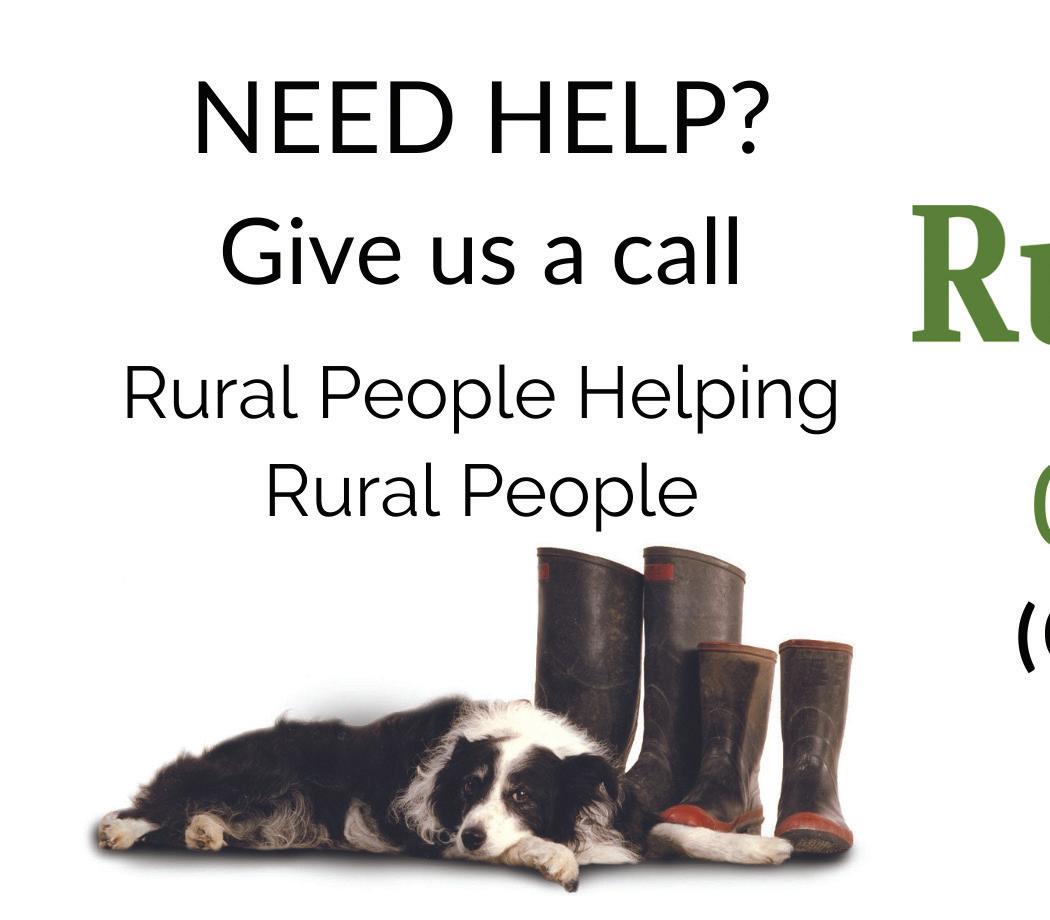
“The terrain and remoteness make both forestry and hill country farming in this region a very difficult enterprise. Accelerating climate change makes it even more difficult.”
The submission does not shy away from laying some culpability
Grant Dodson President Forest Owners Association
at the door of the pastoral sector.
FOA notes the farming sector has failed to accept ownership of silt, and, like forest debris, this has to be part of the inquiry’s focus.
It notes that, while forest owners have been prosecuted for slash losses, other landowners have not.
FOA cited the success of the National Environmental Standard for plantation forestry despite it often being criticised as being overly permissive.
FOA pushed back at claims it was
developed by industry for industry, noting Gisborne’s forests are more heavily regulated than most due to the region’s geologic fragility. Rather than seeking a step back from future plantings, or proposing a blanket Bola type response, FOA is proposing a blended approach to land use in Te Tairāwhiti that combines exotics, alternative exotics to pine, and natives, alongside pastoral land use.
It does, however, underline that sediment losses over the life of a forest compared to a pasture catchment can be significantly lower, and peak flood flows reduced by as much as 50%.
But to bring about smarter planting of exotics, FOA is advocating greater use of technology like LiDAR (light detection and ranging) remote sensing that can paint a far more granular, exact indicator of slope risk than current land use erosion classifications can. While suggesting natives could be planted in particularly suspect areas, FOA also exhibits a level of ambivalence about their use.
“Without doubt, there will be native tree planting for land stabilisation and biodiversity,” Dodson said.
“But it has to be realised that indigenous tree establishment is expensive, and it’s difficult for slow growing native trees to become established, with the region predicted to have more droughts and ongoing storm damage from now on.
“And, unlike with plantation forestry and farming, planting native trees doesn’t produce an income product. Even their carbon sequestration capacity is also insignificant until many decades into the future.”
When it comes to dealing with forest slash, FOA acknowledges the lack of a viable processing plant in Te Tairāwhiti is a key limiter. The nearest processing plant remains the Pan Pac plant near Napier, currently offline due to severe storm damage.
The submission urges the government to consider options to encourage a processing plant in the region that may provide
biofuel options, including creating an alternative wood pellet fuel source for the likes of Fonterra.
“So long as the economics can be worked out, we could eventually get to where no energy source needs to be imported into Tairāwhiti ever again.”
Given Tairāwhiti has some of the most erodible land in the world, FOA is also proposing retirement of the most erosion-prone land where geology has made harvesting too risky. While forest owners could absorb the costs of smaller scale retirement, any large-scale retirement will require the need for transition for affected owners, contractors and workers who lose income.
MORE:
The full FOA submission can be found here: https://www.nzfoa.org. nz/resources/ le-libraries-resources/ submissions/2023/875-ministerialinquiry-into-land-uses-associated-withthe-mobilisation-of-woody-debrisincluding-forestry-slash-and-sedimentin-tairawhiti-gisborne-district-andwairoa-district/ le
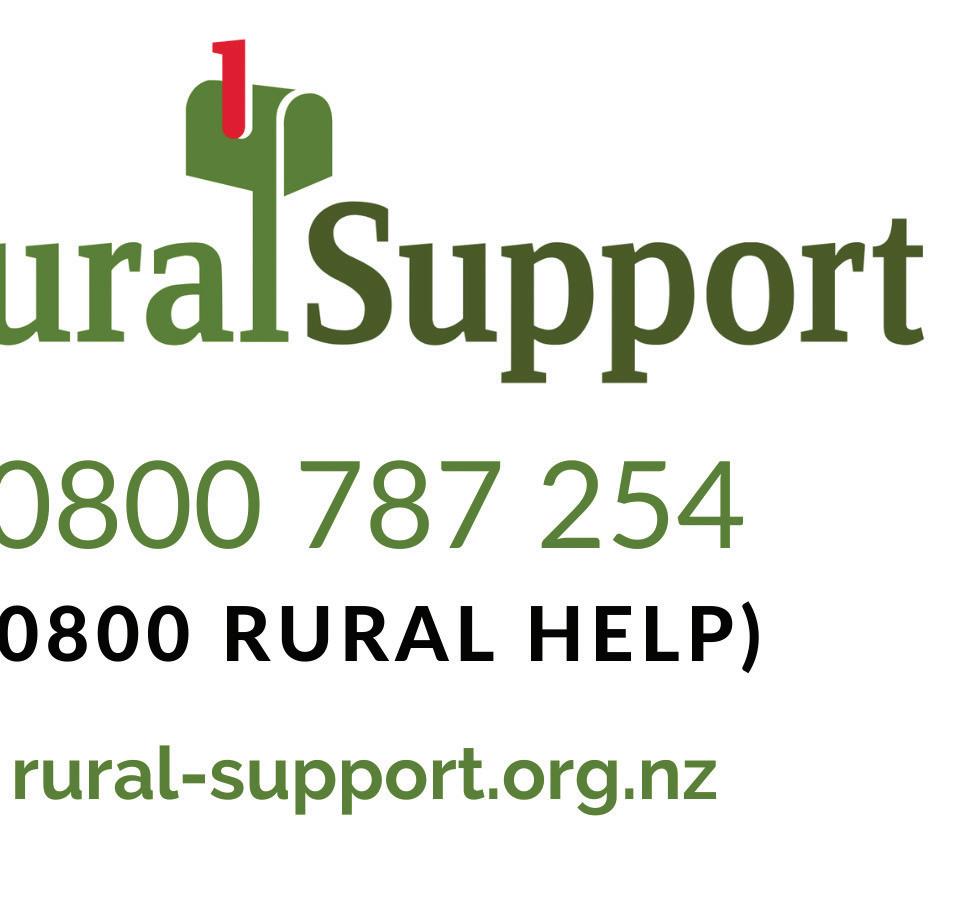
The terrain and remoteness make both forestry and hill country farming in this region a very difficult enterprise. Accelerating climate change makes it even more difficult.
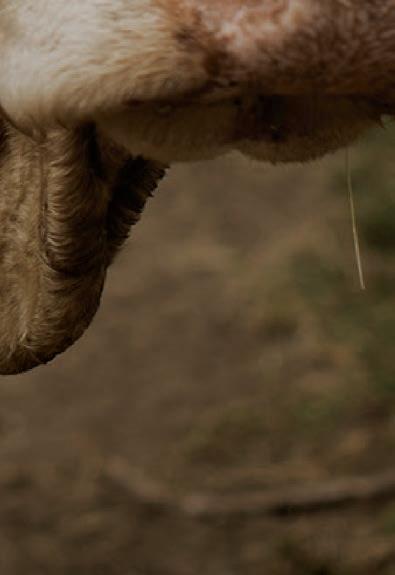
SIMMENTAL 2022 MARKED THE 7TH YEAR SIMMENTAL WAS REPRESENTED IN THE BEEF+LAMB GENETICS PROGENY TEST AND THE LATEST DATA DOESN’T DISAPPOINT.

Building on the consistency of results that Simmental have dominated, this trend continued with the latest results.



In terms of growth rates, Simmental ranked highly - taking half (or 5) of the top 10 spots in Weaning Weight from a pool of 242 bulls in total. 11 Simmental bulls were in the top 5% for weaning weight, reinforcing Simmental’s reputation for fast growth and weaning weight gain.
Simmental was also well represented in Yearling Weights results with 50% of Simmentals making 5 of the top 10.
This provides the evidential proof and truth that Simmental are renowned for their impressive growth traits as the top-performing terminal breed.
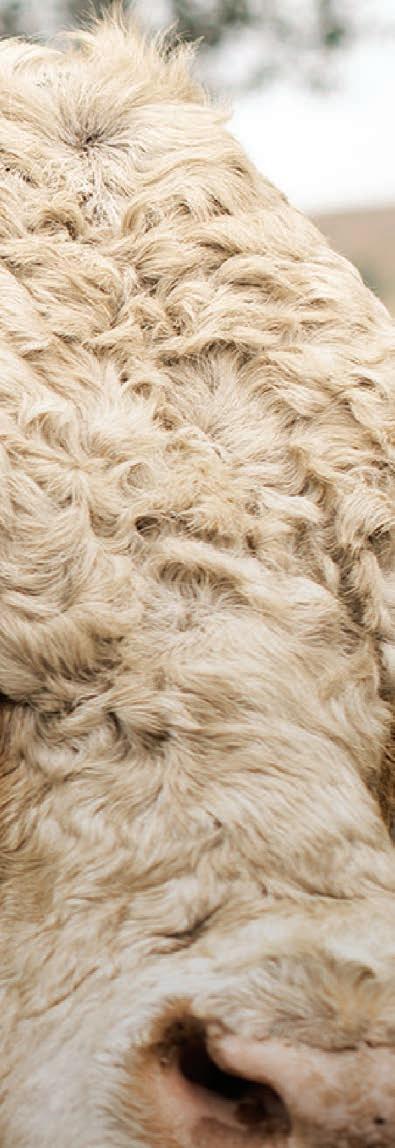
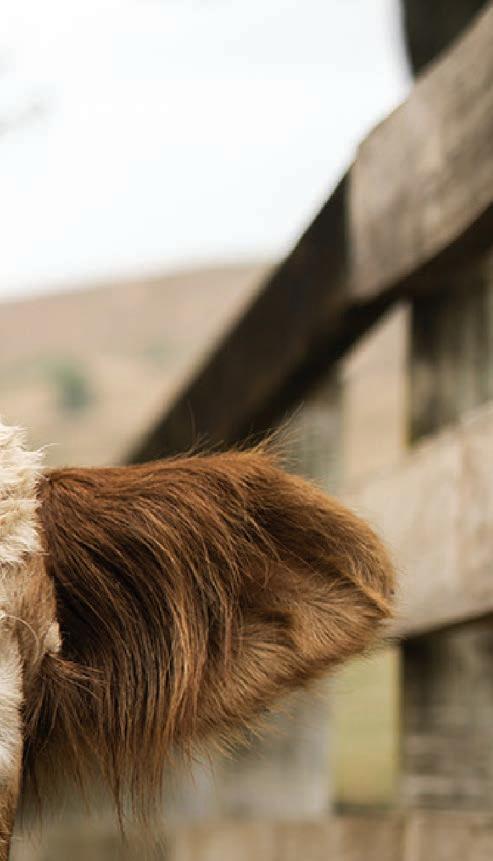
When it came to ultrasound muscle scanning traits, Simmental bulls surprised again in areas where the breed isn’t traditionally associated.




Prime EMA and IMF traits are often well-rewarded by meat companies with special Eating Quality (EQ) premiums that breeds like Angus are known much more for. Some Simmentals made the top 15% in EMA and IMF rankings at a very respectable 3.3-3.4% IMF. These results demonstrate you don’t have to trade or lose premium EQ traits when chasing weaning and yearling weight gains.
Simmental also had some decent results in the carcase quality traits using kill sheet processing data with some positive showings for some Simmental
bulls in carcase weight and marbling with some Simmental bulls making a top 15% finish.
These latest Beef+Lamb Progeny results show Simmental is holding its own and continuing to keep other breeds honest. Long may that continue.
Simmentals overall can hold their head high and offer commercial farmers a strong balance of good, positive traits across the board. These progeny results show you don’t have to sacrifice one set of traits for another which gives farmers more informed options.
For more information or to find out more including access to all the data across the last seven years of the Beef+Lamb Progeny Test, visit the link below:
blnzgenetics.com/progeny-tests/ beef-progeny-tests



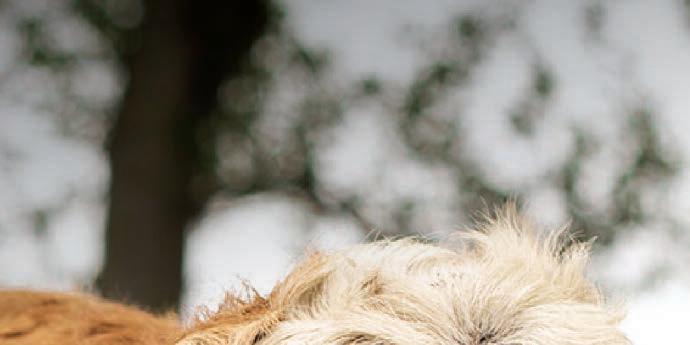
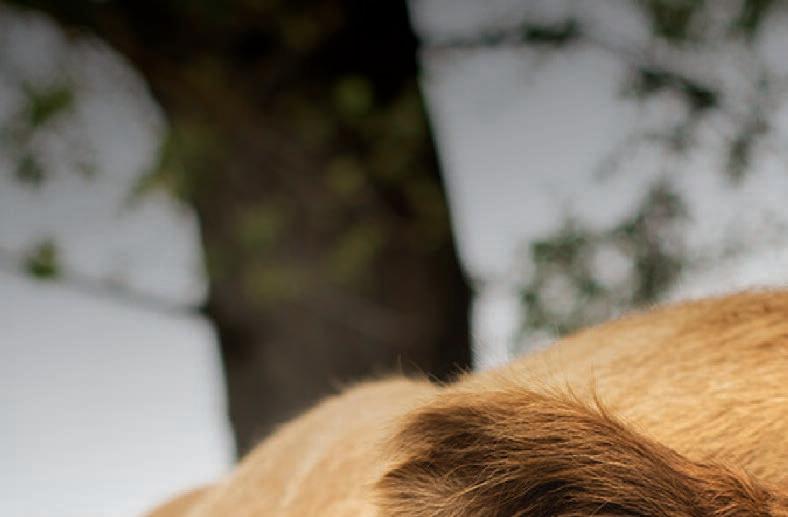


Food and bre
AGRICADEMY has appointed Carmen Smith manager of its WOMOlife brand to oversee the ongoing training needs for the shearing and wool handling industry.
For the past couple of years, Smith has been the head trainer of WOMOlife’s wool handling courses and features as the host of its online wool handling videos.
The Hawke’s Bay farmer has won many awards for her wool handling, pressing and shearing, and brings over 25 years’ experience in the sheds and more recently in training to the role.
Agricademy’s managing director, Alister Shennan, said Smith has the respect of industry and trainers.
“Her ability to build a team and build strong partnerships with schools, contractors and the industry will launch many successful careers,” Shennan said.
Smith and her partner Gavin run a 340ha sheep and beef farm in Waipukurau.
The farm, like many others in
Hawke’s Bay, was hammered by Cyclone Gabrielle.
“Our house was spared because it’s on a hill but our farm took a hit. We lost about 5km of fencing through slips, floods, and quite a bit of track damage, plus no power
for three days,” Smith said.
“We’re resilient, we’re moving on and we will keep going!”
Almost at the same time, Smith was offered the WOMOlife manager’s role and took it on as she is passionate about training the next generation and ensuring upskilling for those already working in the industry.
Her first task was to launch Agricademy’s new offering for schools in which all its online training content is made available to any student at a school that takes up the deal.
She said it’s an opportunity for schools to provide a pathway into agriculture.
“What’s on offer is for a school to pay one annual fee and they can enrol an unlimited number of their students who will have access to all the online content of both Get Milking and WOMOlife. You could enrol 10 or 100 students.”
Students can access Get Milking’s online Relief Milker course and three of WOMOlife’s online courses in crutching, wool handling, and shearing gear and grinding.
As a trainer, Smith is keen to see new entrants to the agricultural sector do well.
“They’re really ambitious and
FARMERS, growers, fishers and other rural people affected by recent storms and flooding are invited to take a break from the hard yakka and join The Big Check-in, an online evening of support for rural people postcyclone on Thursday, May 4. The interactive online session, which will run from 7pm to 8.30pm, is a nationwide opportunity to check-in with impacted whānau, friends and supporters, and pick up some practical wellbeing tools and tips for keeping on track.
“In tough times like these, rural people naturally look out for and support each other. The Big Check-in builds as an online event for everyone to come together,” said Tairāwhiti farmer and event speaker Sandra Matthews, whose farm was damaged in Cyclone Gabrielle.
“It’s a serious topic, but pressing pause, sharing stories and laughs and having a yarn about what we’re dealing with will help set us up for the next step. On the night, there will be plenty of interaction, practical tools and tips from experts and some of us on the ground, and an overview of available resources.”
The interactive evening session will be hosted by Te Radar and feature speakers who have direct experience of the impacts of natural disasters and wellbeing expertise, among them:
• Lieutenant Colonel Steve Kearney – Chief Mental Health Officer and clinical psychologist for the New Zealand Defence Force, who will share practical wellbeing tools for the road ahead.

• Dr Lucy Hone – A director of the NZ Institute of Wellbeing and Resilience who will share stories of adaptability and hope after a crisis, including some from Christchurch post-quake.
• Michelle Ruddell (Ngati Tūwharetoa) – A dairy farmer and chair of the Northland Rural Support Trust, who will bring the Northland community perspective.


want to climb to the top really fast so it’s about getting them to concentrate on quality first, doing our online courses, and getting an understanding of what they need to do.”
She said the students idolise some of WOMO’s trainers.
“They’ve seen them on telly, heard about how amazing they are, as we have both record holders and country representatives in wool handling and shearing, so they can be starstruck and hang off every word of our trainers.”
Smith also sees the impact of the WOMOlife upskilling courses.
“They learn and improve their daily work habits, change bad
What’s on offer is for a school to pay one annual fee and they can enrol an unlimited number of their students who will have access to all the online content of both Get Milking and WOMOlife.
Carmen Smith WOMOlife, Agricademyhabits that they’ve developed so you see that lightbulb moment where it’s like ‘Whoa, I wished I’d learnt that a long time ago.’”
WOMOlife training is available on the following dates:
• May 21-26 – Tautane station, Herbertville, southern Hawke’s Bay
• Schools – Beginners crutching and wool handling, May 21-23
• Upskillers – People have been working in the industry and know the basics but want to improve their skills and knowledge, and improving their shearing, May 23-26
• July 24 – 26: Je Farm, charity farm Southland
• Schools – Beginners crutching and wool handling
• August: Tarras, Central Otago
• Fine wool merino course
• Several more courses are also scheduled in September and October.
You can contact Carmen for your training needs on carmen@womolife.co.nz.
• Sandra Matthews – Tairāwhiti sheep and beef farmer, community leader and Rural Coordination Group member, who is a voice on-the ground for the Tairāwhiti rural community.
“The Big Check-In came about through multiple primary sectors and service groups sharing knowledge and resources to help support wellbeing in the recovery,” said one of the event organisers, Lisa Sims of the Agri-Women’s Development Trust.
“We hope people will leave with at least one new thing they can do to look after themselves, whānau or friends, and knowing that the primary sector is behind them,” said Sims, who understands the value of checking in, having lost her family farmhouse in a fire.
“We encourage anyone to join, whether they have been directly affected or not, including those in supporting or service roles. It’s been great to see some local community leaders organising some local get-togethers around this event.”
The Big Check-in is supported by a collective of primary sector organisations and individuals, including the Rural Support Trust, Agri-Women’s Development Trust, HortNZ, Vegetables NZ, Summerfruit NZ, NZ Winegrowers, Beef + Lamb NZ, DairyNZ, First Mate and the Ministry for Primary Industries.
ARABLE farmers around New Zealand are being encouraged to take part in an industry survey aimed at assessing the mood of the sector.
About 600 randomly selected growers from right across New Zealand have been sent the Growers Leading Change survey with questions on everything from how they establish their crops to how much they enjoy farming.

The survey is part of the joint Ministry for Primary Industries Sustainable Food and Fibre Futures (MPI SFFF) and Foundation for Arable Research Growers Leading Change (GLC) extension programme, established three years ago as a grower-to-grower learning platform.
GLC national co-ordinator Philippa Rawlinson said keeping
track of growers’ farm systems and practices, along with their levels of optimism, has been a key part of analysing the project’s success.
“This is the third year of the survey. We ask the same questions every year and are monitoring changes over time.
“For example, comparing the results of the 2022 survey and the 2021 survey we found that in 2022 more growers integrated new and innovative tools and technologies into their farming businesses.
“Comparing the two annual surveys also revealed that more growers were finding arable farming stressful and were becoming less optimistic about the future of arable farming for themselves and their families,” Rawlinson said.
The survey can be completed on paper or online. Responses are due by the end of April with results available in spring.
The journey towards providing excellence in on-farm performance is an ever-evolving part of the Catalyst Performance Agronomy ethos. Doing so requires outstanding service, knowledge and innovation. This includes providing customers with the best varieties available. Catalyst Performance Agronomy is proud to be the sub-licensee of the newest feed barley to the market, SY Dolomite.

SY Dolomite (SY 415-584) is a new feed barley variety that is being released to the New Zealand market in autumn 2023. The cultivar has demonstrated exceptional yields in both dryland and irrigated environments from both autumn and spring sowings.

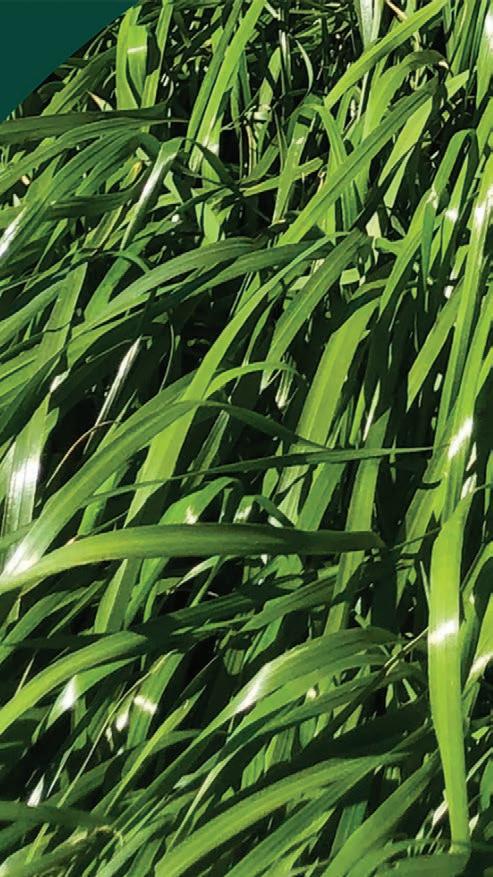
SY Dolomite was bred by Syngenta in the United Kingdom and developed in NZ in conjunction with Cropmark Seeds as head licensee.
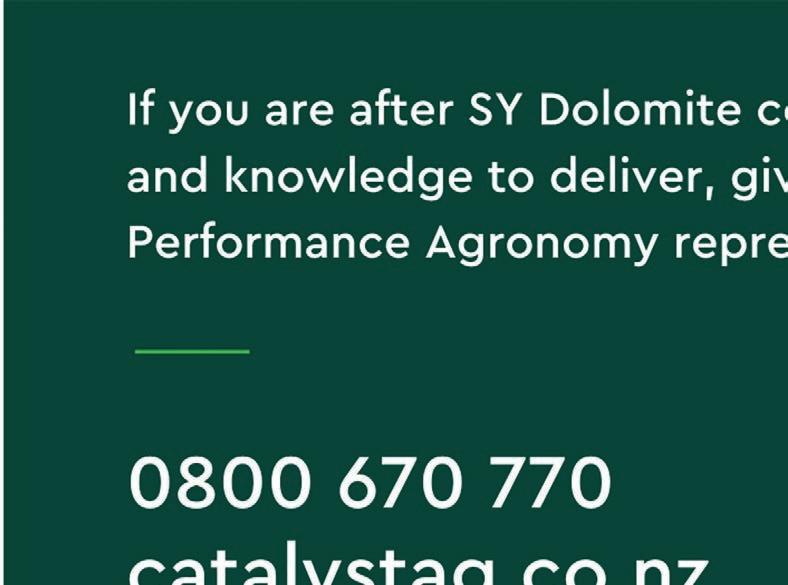

Key characteristics include moderate to stiff straw strength, low screenings, high test weights and intermediate maturity, making it well suited to a range of different environments.


SY Dolomite also displays good disease resistance, especially to powdery mildew
and has a wide sowing window from May to October.
James McFarlane from Scott Simpson Contracting in North Otago planted SY Dolomite for the first time in spring 2022, on both irrigated and dryland blocks.
James noted in his visual assessment that green-leaf retention was fantastic and overall plant health was in line with the best.
The consistency over multiple sites and the yield results we have seen so far make this cultivar an exciting proposition.
“We have no doubt, given the FAR trial results, that SY Dolomite will perform well in an autumn sowing situation as well”.
To date SY Dolomite has produced reliable yield results in the CPT trials. As an autumn sown option, the table below shows the latest set of results, which pitch it among the top-performing cultivars.
Yields from 2021/2022 autumn barley CPT trials at St Andrews (dryland, sown 7th May 2021), Chertsey (irrigated, sown 14th May 2021) and Balfour (dryland, sown 23rd April 2021)
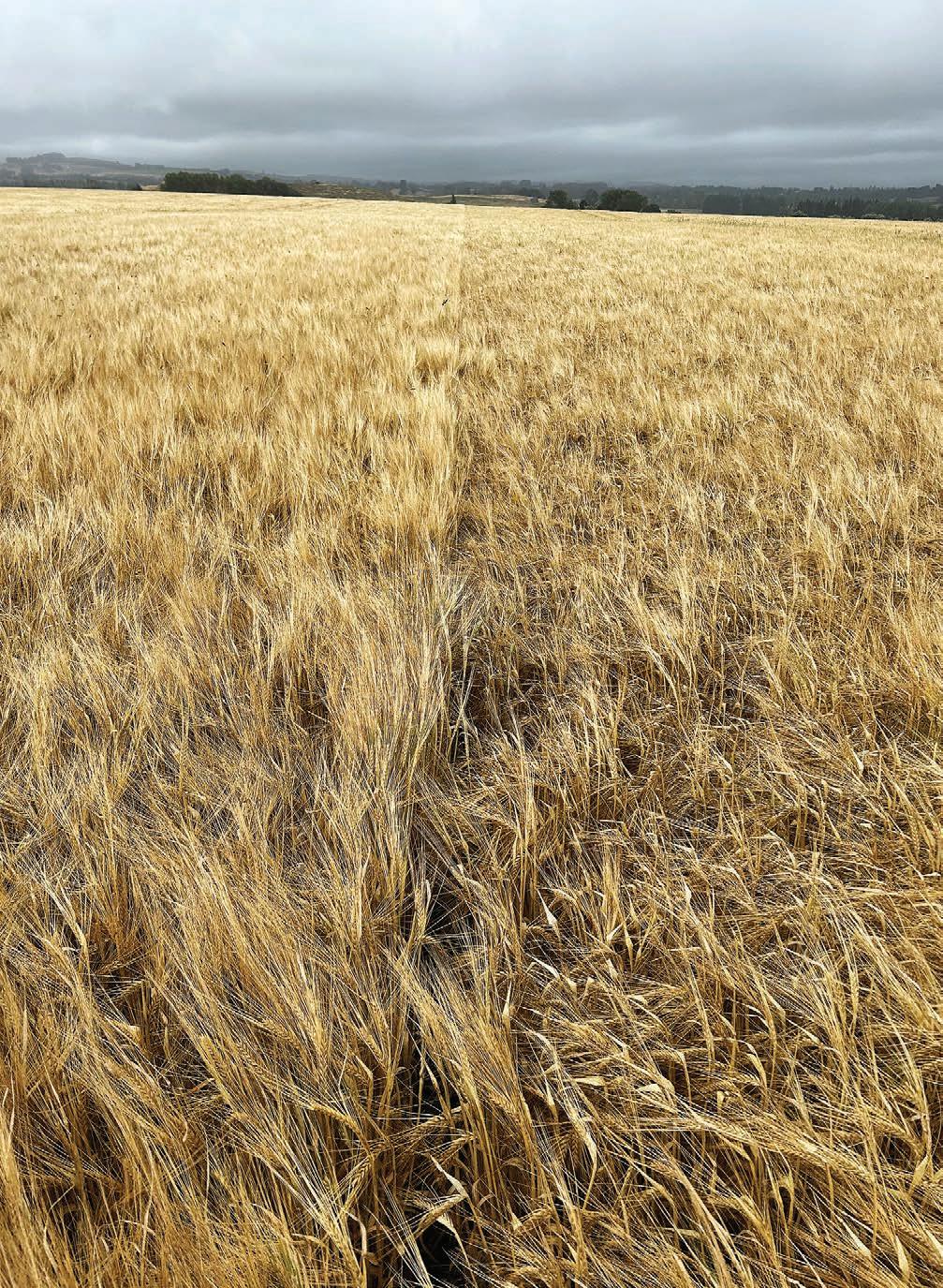
The consistency over multiple sites and the yield results we have seen so far make this cultivar an exciting proposition.
IN THE media the other day I read what I already know: that 45% of our rivers are not suitable for swimming. That 50% of this country’s emissions are from agriculture. That between 2002 and 2019 we had a 91% increase in irrigated area. That the increase in irrigated land area is 73% dairy. That we have lost 13,000ha of unique braided river bank to agriculture with the blessing of the government. That the goodwill we enjoy from our worldwide market place is (unsurprisingly) eroding.
But what really got me was that I did not read this in a New Zealand source, or even a Greenpeace anti-farmer rant; I read it in the Times of London on April 12 2023.
I quote a friend of mine, an architect who accompanied me to my farm on April 15 to gain insight into real-world food production:
HE multiple issues straining our public health system are well documented: a lack of staff, inadequate funding for wages, drugs, technology and buildings, the impact of covid and deteriorating hospitals.
the extreme hours general practitioners work to provide 24-7 care and the inability of some rural practices to accept new patients.
The Royal College of GPs says a third of rural GPs intend to retire within five years and 50% within 10 years – and that four in five have suffered some degree of burnout.
Solutions are far from straightforward.
Young doctors are not interested in being GPs, and in a predominantly urbanised society the isolation of living in small rural communities deters others.
Andy Whitson 027 626 2269 New Media & Business Development Lead andy.whitson@globalhq.co.nz

Steve McLaren 027 205 1456 Auckland/Northland Partnership Manager steve.mclaren@globalhq.co.nz
As so often happens, rural communities have banded together to tackle the challenge themselves, forming entities to fund, establish and run general practices and hospitals that provide in-patient and primary care.
staff to care for them, potentially freeing up a corresponding number of beds in Dunedin Hospital.
Health reforms are providing another layer of uncertainty.
Certainly the reforms include the creation of a Rural Health Strategy, which is to be welcomed, but there are reports that such is the turnover of Te Whatu Ora Health New Zealand staff that rural leaders are constantly having to re-educate new officials on issues and solutions.
“Not all farmers are taking this approach (a regenerative, kinder, more environmentally sensitive one) and it appears that, like the NZ building regulations, the farming regulatory system is behind the times. And the rest of the world has noticed.”
In these very pages we have been called “laggards with siloed thinking”. It is not an unfair criticism. Whilst we are improving
Rural health has always been a poor second cousin to urban services, and as we revealed last week and examine further this week, for rural New Zealand those challenges are magnified several fold.
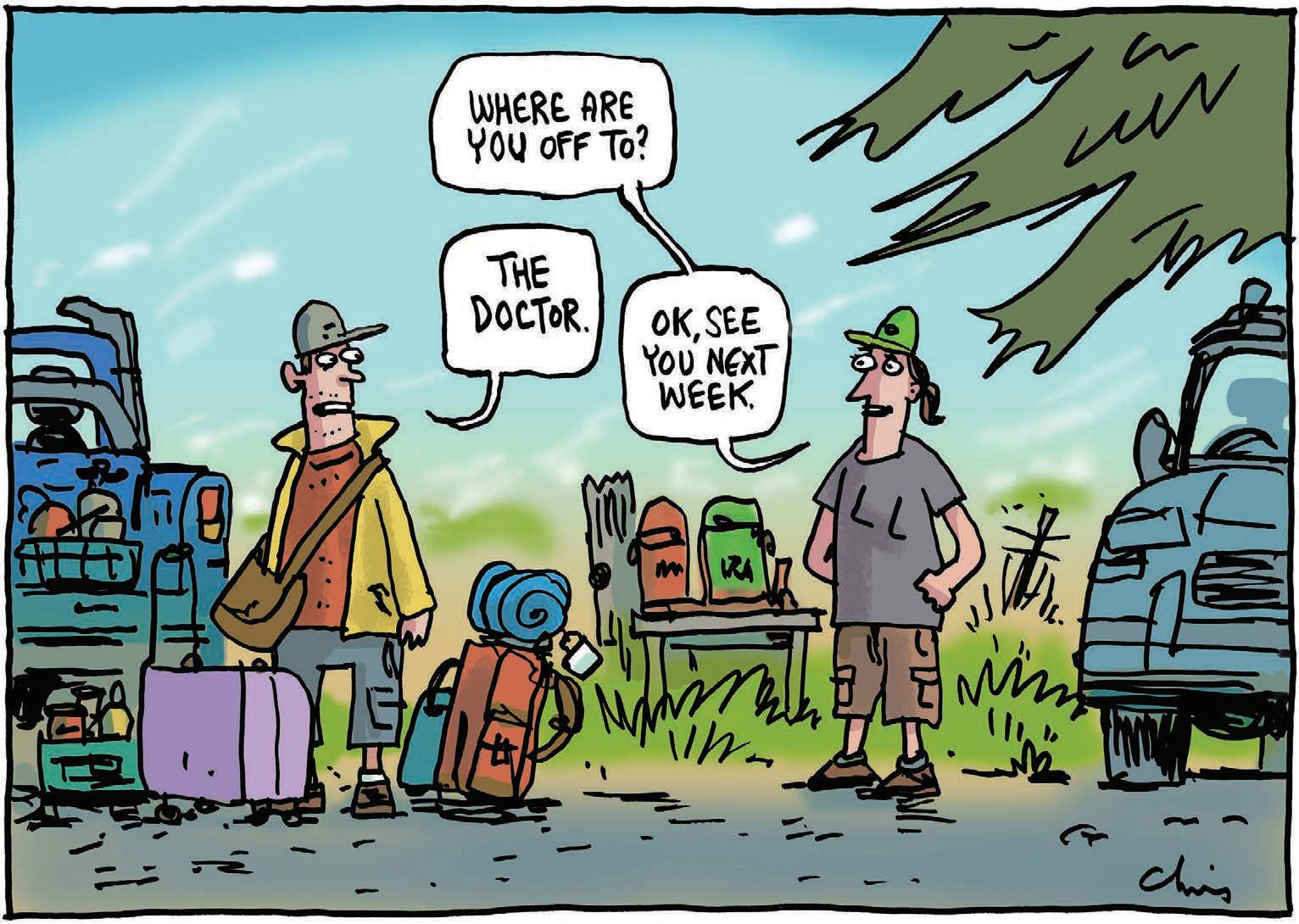
Jody Anderson 027 474 6094 Waikato/Bay of Plenty Partnership Manager jody.anderson@globalhq.co.nz
The reality has been highlighted by a University of Otago study which says that the quarter of NZ’s population who live in rural areas or small towns, die younger and have more complex health issues than their urban compatriots.

Donna Hirst 027 474 6095 Lower North Island/international Partnership Manager donna.hirst@globalhq.co.nz
Rural health leaders and those working at the coalface are unequivocal in warning that rural health is collapsing.
Such a claim is not made lightly, especially by leaders.
9407
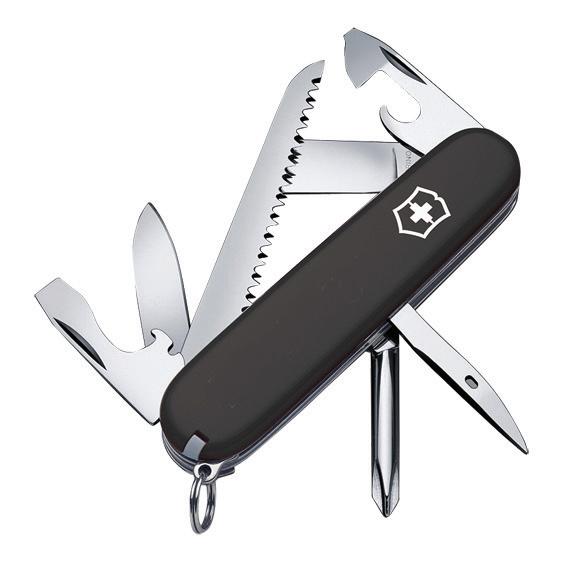
They base it on a severe staffing shortage,
But how sustainable is that?
There is work to be done on multiple levels.
Debbie Brown 06 323 0765 Noticeboard/Word Only/Primary Pathways classifieds@globalhq.co.nz
As so often happens, rural communities have banded together to tackle the challenge themselves, but how sustainable is that?
Grant Marshall 027 887 5568 Real Estate Partnership Manager realestate@globalhq.co.nz
Practice managers report that inadequate funding means they struggle to meet pay parity obligations for nurses and fund adequate patient consultation, which is needed to address the complex health issues of rural patients.
Andrea Mansfield 027 446 6002 Salesforce director andrea.mansfield@globalhq.co.nz
PRODUCTION
This is despite rural hospitals playing a crucial role in easing the pressure on base hospitals.
Grant Marshall 027 887 5568 South Island and AgriHQ Partnership Manager grant.marshall@globalhq.co.nz
Javier Roca 06 323 0761 Livestock Partnership Manager 027 602 4925 livestock@globalhq.co.nz

Lana Kieselbach 027 739 4295 production@globalhq.co.nz
That University of Otago study found a gap in knowledge of the place and contribution of rural hospitals within the health system with no current description of rural hospital services, no national policies and little published research regarding their role or value.
Advertising material adcopy@globalhq.co.nz
Not only is it well established that recovery benefits from the patient being close to their home and family, but every patient recovering in a rural hospital is one bed not occupied in a base hospital.
ISSN 2463-6002 (Print) ISSN 2463-6010 (Online) Printed
Many rural health services have survived on goodwill and a desire by staff to meet the greater community good.
SUBSCRIPTIONS 0800 85 25 80 subs@globalhq.co.nz
But as staff retire or simply wear out, that is no longer a realistic, let alone sustainable, option.
In Otago alone there are 70 rural hospital in-patient beds, so long as they have nursing
As one doctor told Farmers Weekly: “We are knackered.”

THE devastating impact of Cyclone Gabrielle continues to weigh heavily on the people of Hawke’s Bay and the East Coast. We are now two months in and growers and communities need some assurance.
So far, the government’s response has been incredibly limited. It includes a wellintentioned but paltry $2000 per hectare for orchards that have suffered damage.
When one considers that cleanup costs will be up to $70,000 per hectare, replanting apple trees and replacing orchard infrastructure will cost around $200,000 per hectare and growers will have to wait five years for a commercial crop to be available, the $2000 per hectare offer is effectively meaningless. To cap it all off, the impacted orchards suffered damage that is largely uninsurable.
I made sure to get to Hawke’s Bay and Gisborne in the week following Gabrielle to see the extent of the damage and learn from local growers what is needed to get them back on their feet. From talking to growers on the ground and to the various industry groups, it is clear that growers need certainty so they can start rebuilding and assurance the government will be there to assist them.
This assistance can take many forms. It could include meaningful financial assistance to deal with orchard clean-up, orchard rebuild, wage subsidies, income continuity and access to capital. The support needed will be expensive, but to do nothing, as they are now, will be even more expensive.
Hawke’s Bay is the centre of
Continued from previous page the situation, but even if all the government’s current regulations and ideas were in place and properly adhered to, we would still be decades behind Europe.
Today I read on Stuff an article headlined “How farmers trapped in the past risk gassing the golden goose”. In Canterbury’s The Press I read the headline “Huge threat to sick NZ lakes”.
Yet we take to the streets of the city with our tractors and our signs and our banners saying “No farmers no food”. It’s all “unworkable” and we scream bloody murder.
In England they banned stubble burning in 1986. In Denmark they banned glyphosate on all post-emergent crops in 2019. Other countries have banned it altogether.
New Zealand’s apple industry, contributing over half of the crop for a nearly $1 billion export industry. It’s the lifeblood of the region. Operating off the back of growers are all the ancillary services that support the industry: packhouses, pickers, marketers and machinery to name a few.
Without the growers, these providers fade away with them. When they fade away, local communities disintegrate, schools close down, retail spending drops and Hawke’s Bay and Gisborne lose their economic engine. The region will be substantially worse off as a result.
Additionally, there is the mental health aspect of those affected communities to consider. These communities have had their lives destroyed.
Their homes and livelihoods have been wiped out. The adrenaline of the initial shock and devastation is wearing off and now they undertake the huge clean-up and rebuild required. But they are also facing bankruptcy and a loss of hope. There are no clear financial options or support. There is no clarity around the government’s next steps.
In times of crisis, it is essential that quick, dynamic thinking is applied, that opportunities are worked through with urgency and people are given clarity around the future direction. Growers are being provided with none of this.
Our government has a significant balance sheet and has shown no hesitation in spending money. Surely, if caring for people in their greatest time of need and keeping one of our largest horticulture exports afloat is a priority, then communicating those decisions should have come by now. It has been suggested to the government that they consider support and rebuilding assistance as they did in the Manawatū
Fifty-five percent of England is now a nitrogen-vulnerable zone with severe restrictions on how much nitrogen you can apply and when.
Yet there are still farmers there. There is still food. There is still prosperity.
The message gets louder and clearer every day: embrace change. If we are to flourish or even survive into the future, we have got to move with these times.
Waikanae
NO WONDER New Zealand farming is in such a bind.
Reading Farmers Weekly, the constant that strikes me most is the age of those in senior positions across the agriculture sector.
I recognise that these roles
Assistance could include meaningful financial assistance to deal with orchard cleanup, orchard rebuild, wage subsidies, income continuity and access to capital.
Sam Uffindel National Partyrebuild following the devastating 2004 flooding.
Clarity and decisive decisionmaking are also needed in other areas and local and regional councils need to step up and work with the government to make this happen. From what I hear on the ground, there are a few key areas where they need to work together. Councils should designate some land as future flood plains where stop banks can be opened to relieve pressure next time.
appeal to those wanting to step back from the front line, and who have time on their hands, but employing yesterday’s people with yesterday’s solutions is hardly going to help us remain competitive in a global market, stay current and take advantage of tomorrow’s opportunities.
By all means help mentor people into these roles, but it is time to step aside and allow the younger innovators and leaders to take the lead.
Do we really want to leave the future to those who are looking to fill their day? Or to those who have the skills, knowledge and energy to shape the future?
Do we really want to leave the future to those who are looking to fill their day? Or to those who have the skills, knowledge and energy to shape the future?
solution would be to stack it up and burn it, within reasonable parameters, but this option is currently constrained due to challenges around getting consents, and environmental pressure. Due to the scale and magnitude of the slash and timber, there is no other real viable option.
Additionally, where orchard replanting is required, we should make sure to support high-value apple varieties. This plays to our future advantage as the world’s top quality apple producer and will be far more lucrative to local communities.
Growers want certainly around where it will occur.
Councils need to look after the rivers. Silt and shingle have built up over decades and attempts to maintain them so they can function effectively have been rejected. Too many interest groups make it prohibitively expensive and difficult to get the consents needed to maintain rivers so that when a torrential rain event occurs, runoff can be managed more efficiently.
Growers need to know where they can deposit excess silt. Not all silt can be ploughed back into the soil; due to the huge mass, some will need to be dumped. Options include designated land areas or via sea barges, where it would have naturally ended up anyway if the rivers functioned properly. Industry bodies and some local iwi support this solution.
A location and means are required for getting rid of slash and timber. The most practical
Disasters require an all-ofgovernment approach and cooperation on both sides of the political aisle. I’ve personally offered to provide my solutions to the minister of agriculture and would be happy for him to roll them out as his own; he has yet to take me up on my offer.
In the meantime, these growers and communities face financial collapse, enormous mental stress and a completely uncertain future. National has supported all cyclone-response legislation that the government has advanced, in the hope and expectation that more support is unlocked as soon as possible.
I will have nothing to pay. That seems fair.
Julian
Price OamaruON THE edge of town stands a speed camera. It is intended to encourage me to drive at or below 50km/h.
If I pass it at 60km/h I will be fined $30. If I pass by at 50km/h

Under He Waka Eke Noa, if I meet the government goal of a 10% reduction in methane output I still have to pay the fine on the remaining 90%. That is like passing the speed
at 50km/h and receiving a $25 fine, or $20 at 40km/h.
That’s crazy.
dodgy in many places throughout the country. People deserved better.
Many councils had proved themselves totally incompetent when it came to handling water, wastewater and storm water.
If anyone needs further convincing, consider Auckland during the recent cyclones. It was an absolute shambles, as was Gisborne.
So, something needed to be done and I didn’t like the original Three Waters plan.
The new announcement addresses most of my concerns but not all. I disagree that the reforms are Three Waters in drag. I believe there has been considerable change from the original.
DETAIL: National leader Christopher Luxon says he’ll make sure councils have access to long-term debt funding, but has yet to say how, says Alan Emerson.
AS I’VE written, I was strongly opposed to the original Three Waters and all the bluff and bluster that went with it. The importation of Scottish “experts”, the appalling and inaccurate advertising campaign, the four entities and co-governance.
We now have a new plan on the table and it makes a lot more sense to me than the original.
The harsh reality, like it or not, is that we can’t continue the way we are.
The problem is that because the water, waste and stormwater pipes were underground, they were ignored by most councils, in some cases for decades. Those councils polluted and did so massively; Auckland and Wellington beaches weren’t swimmable, and nor were many others.
If farmers did that we’d be pilloried but the councils seemed to be different.
In addition, drinking water was
For a start, I’m pleased that we have 10 new entities and not four. I believe it makes the organisations more focused, transparent and answerable to their constituents.
In addition I’m pleased the 10 entities will have representatives from each of the district councils. That is a vast improvement on the old model.
It also means there isn’t a confiscation of local assets to four monolithic organisations that seemed to be created along tribal boundaries.
I’m pleased the 10 entities will have representatives from each of the district councils. That is a vast improvement on the old model.
That made me nervous as to what might happen at some time in the future.
The critical issue is that
maintaining the status quo wasn’t an option. The cost of doing that is estimated at $130-$185 billion, which is far out of the realistic reach of our current local authorities.
While I acknowledge the borrowing capability of the 10 entities is less than if there were just four, it is a price I’m prepared to pay. As mentioned, I prefer local control to that of the centre. Having said that, the savings created by the 10 entities are considerable, estimated at between $2770 and $5400 a year in rates.
The governance model will be regional advisory groups, one of which currently exists in the Greater Wellington Region. It has an independent chair. Following the regional
advisory groups there will be an independent board appointed on skill and experience. I find that reassuring as it will take parochialism out of the discussion.
The assets will continue to be in public ownership.
I’m also relaxed about the cancelling of the $1.5bn “better off” funding for councils in the original Three Waters proposal.
I saw it as a bribe. Sadly, the first phase, of $500 million, will continue.
Putting the start date back is also fine by me. It is a complex issue and shouldn’t be rushed. Where I still have concerns is over the tangata whenua influence.
While I accept Māori have an interest in water, so do farmers.
The entire exercise has been
fascinating to observe.
It got off to an appalling start courtesy of the Mahuta jackboot. The new Minister of Local Government, Kieran McAnulty, has shown that he is prepared to consult and compromise.
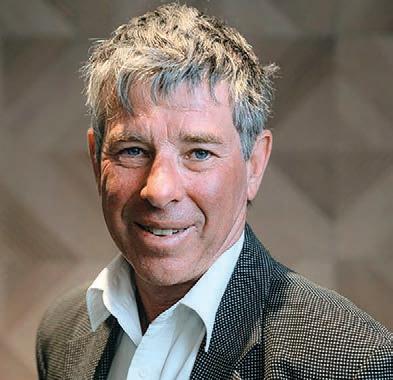
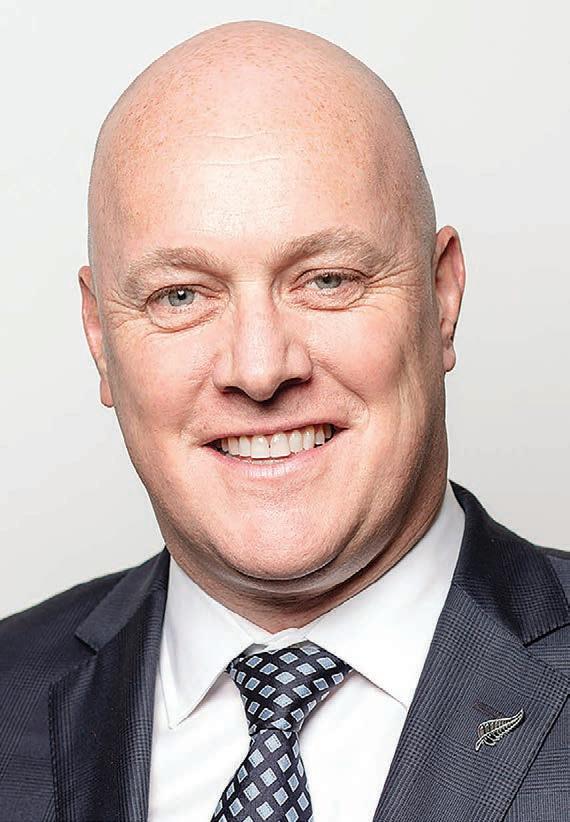

I believe the current initiative is a reasonable compromise.
The reaction from mayors has been interesting. While certainly not at the level of opposition Three Waters generated, the antis remain for whatever reason. I have little sympathy. If they’d had done their job we wouldn’t have the current crisis.
I’m also disappointed with the reaction of the Opposition.
National Party local government spokesperson Simon Watts described the initiative as “toxic” and “divisive”. How, he didn’t say.
National MP Erica Stanford was on the AM Show telling me the new initiative was the same as Three Waters. I’ve always thought Stanford was both sensible and reasoned, but I disagree with her statement.
Christopher Luxon told NBR it is “a dumb policy, we’re going to repeal it”. He added that “if elected to power later this year National would return the assets confiscated from local government and local residents to councils”.
He said he would ensure councils had access to long-term debt funding. How, he didn’t say.
My frustration is that something had to be done and sooner rather than later. Repealing the current government initiative won’t achieve that.
Finally, I’d far rather see solid policy options than listen to endless debating points. Maintaining the status quo isn’t an option.
It’s a wonderful time of the year as the deciduous trees clothe themselves in their autumnal splendour.
I used to love browsing the tree catalogues or wandering around nurseries looking at what was on offer. Most planted out on the farm were bought at end-of-season clearance sales to keep the cost down.
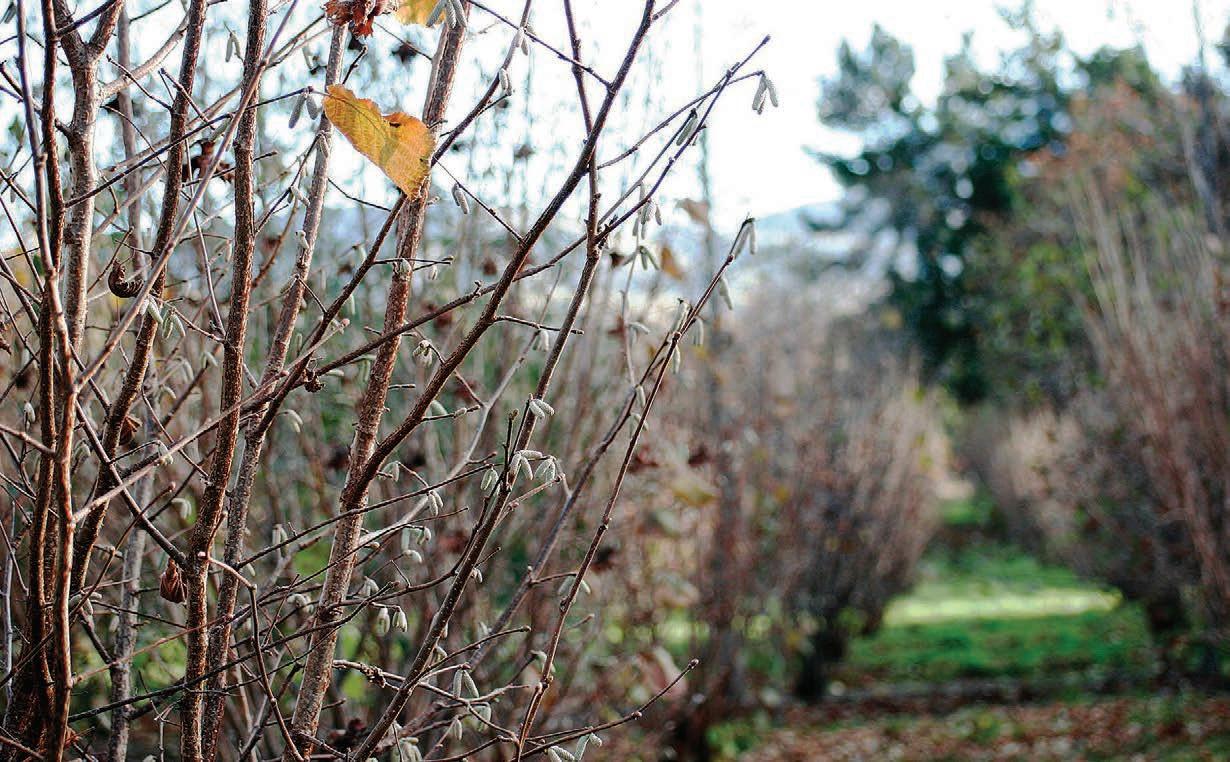
Hard to beat are the claret ashes, which are at their absolute best now. They have gone a rich claret red with a carpet forming beneath them as the leaves fall.
That is their drawback – they’re showy, but it’s all over in a week or two.
possums loved them so much that the trees were often multicrowned, given the possum damage in the leaders.
However, our regional council brought in a possum control programme 15 years ago and they are rare visitors now. The trees
and birds have certainly benefited from their absence, but you never
Continued next page
IMENTIONED recently that one of the distant past authors of this column was a fellow called Roland Clark or Nor’wester, which was his pen name. He wrote a lot about trees and their importance on farms. Partly as a result, I became interested in trees myself.
I feel like this column is channelling Roland.
The golden ashes are also looking great, but like all ashes are wind prone and get blown apart at times.
Liquidambars grow well here in Hawke’s Bay and put on a great display of colours.
I’ve planted several varieties and they colour up with rich reds through to glorious yellows.
They are also known as sweetgums, and I was always shooting possums in them. The
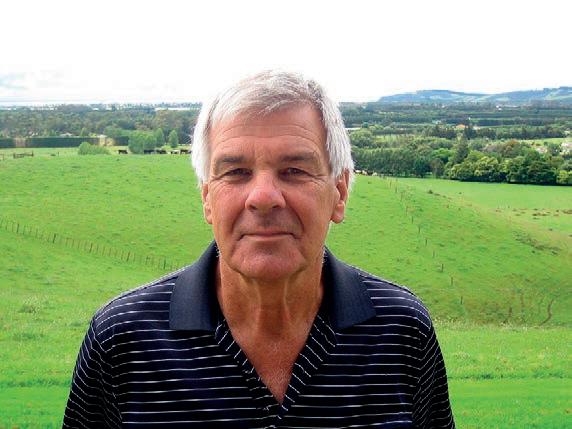
CEO Simon Limmer makes the point that two of its South Island plants, Belfast and Finegand, are well over 100 years old and require serious capital investment to ensure they are maintained to a high standard.
Allan Barber Meat industry commentator: allan@barberstrategic.co.nz, http:// allanbarber.wordpress.comSILVER Fern Farms’ latest annual result has set a new benchmark for published meat industry profit performance, with pre-tax and post-tax earnings more than 80% ahead of the previous year.
The $76.9 million dividend paid to shareholders, including the interim payment, was nearly two thirds higher, with half being paid to each 50% shareholder, Silver Fern Farms (SFF) Co-operative and Shanghai Maling.
The predicted benefit of the major Chinese investment, strongly resisted at the time by a minority of supplier shareholders, has now become crystal clear.
There appear to be no obvious downsides from selling half the company to an overseas investor, despite the fear of loss of control and potential interference in its strategic direction.
The injection of much-needed capital has enabled SFF to carry out overdue upgrades to its ageing processing assets, as well as investing in the market-led programme that it initiated as long ago as 2008.
The company invested $96m in plant and systems improvements last year and aims to spend 50% more during the current trading year with an increasing focus on new product development technology, cold chain improvements and information systems as well as further plant upgrades.
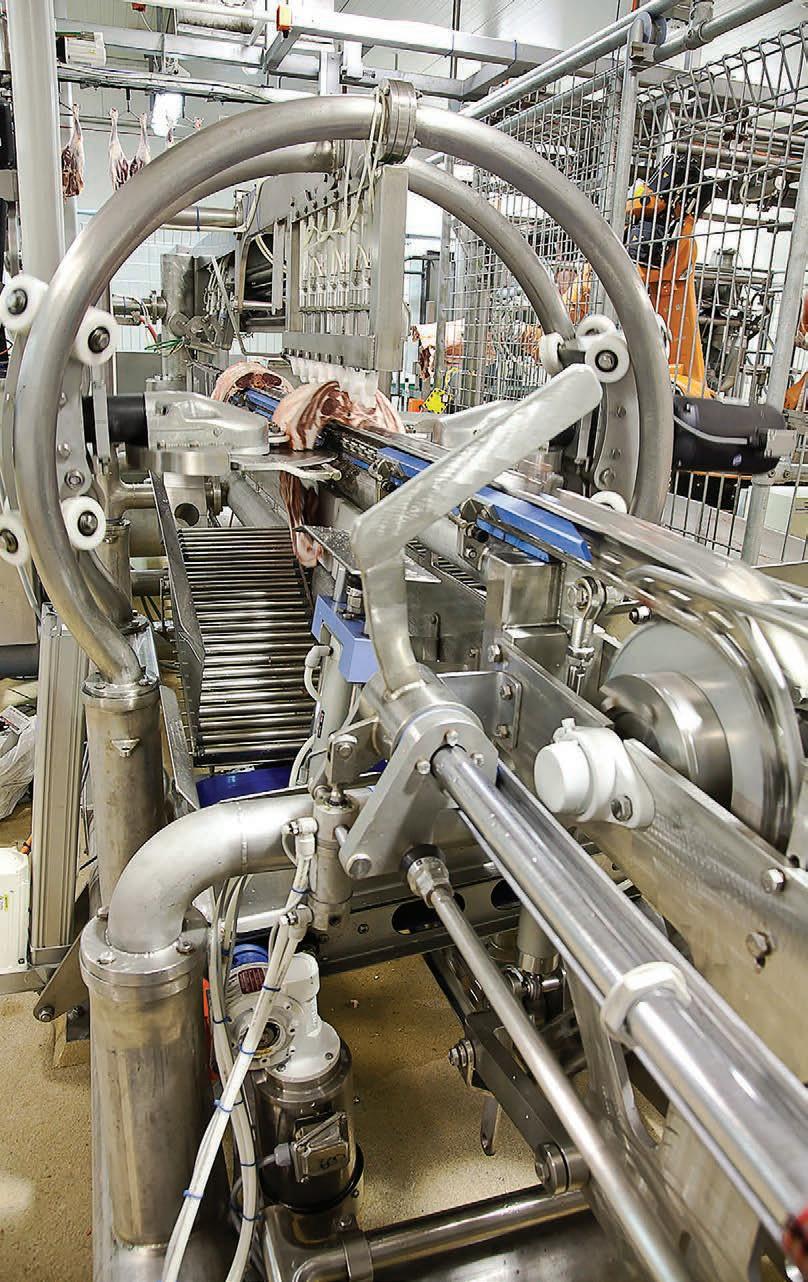
get something for nothing; there appear to be a lot more pigeons and magpies about now.
I planted a couple of Zelkovas just so that I could have a tree starting with Z. They have done well and are promoted around the world as they are elm-like but don’t suffer from Dutch elm disease.
There are heaps of golden elms on this property as my parents were fond of them. I asked them once why they planted so many golden elms and pin oaks and they said that in the 1960s that was pretty well all you could buy at the local nurseries. The golden elms look great much
As New Zealand’s largest meat processor and exporter since the contentious acquisition of Hawke’s Bay-based Richmond Meats in 2006, SFF initially struggled to rise above a mountain of debt and inefficient excess capacity. The attempted buyout by PGG Wrightson in 2008 fell victim to the global financial crisis and, apart from receiving a $42m compensation payment, the company was back to square one.
To do him credit, then-CEO Keith Cooper persisted with the new vision, supported by the company’s rebranding, to turn SFF into a consumer-led business, focusing on a new plate-topasture strategy in contrast to the traditional “procure, process and sell it” industry practice.
The meat industry of the last part of the 20th century was beset by its legacy of large, old, heavily unionised, mainly co-operativelyowned freezing works, designed to process large volumes of livestock to export to the United Kingdom and more recently to Europe and the United States.
Britain joining the European Common Market in 1973, the oil shock and finally the removal of subsidies by the 1985 Lange Government all progressively contributed to making this operating and ownership model unsustainable.
Farmer ownership of meat processing facilities came under threat for several reasons: a militantly unionised workforce, ageing plants, depressed markets, removal of subsidies and declining livestock numbers causing excess capacity, procurement wars, and ultimately the destruction of shareholder value. In the late 1980s and early ’90s Alliance and AFFCO both came close to going broke, and Weddel and Fortex closed for good.
PPCS (the trading name of the
of the year and grow well. They are starting to yellow up now.
We have had a couple of incursions of Dutch elm disease into New Zealand, and stamped them out at large cost. We are the only country to have eradicated this fungi. It destroyed the elm forests of Europe and America. There was talk, after the latest
Hard to beat are the claret ashes, which are at their absolute best now. They have gone a rich claret red with a carpet forming beneath them as the leaves fall.
Primary Producers co-operative Society), the previous identity of SFF, benefited from the struggles of its South Island competitors, until its expansion into the North Island, but was still saddled with ageing facilities it couldn’t afford to close or upgrade properly.
The structure of North Island farming – less seasonality, more dairy farming, newer, privately owned meat companies – meant co-operative ownership of processors was no longer tenable. By 1992 AFFCO was a co-operative in name only, being funded entirely by its banking syndicate, until its recapitalisation and public listing in 1995.
Since then it has delisted and operated as a subsidiary of the Talley’s Group. The change of ownership has brought about a substantial improvement in plant maintenance and operating efficiency; although it no longer reports its profitability, this is rumoured to be very good.
South Island co-operative ownership remains viable and even the preferred model, though both Alliance and SFF have faced balance sheet challenges, culminating in the latter’s sale of 50% to its Chinese partner in 2016.
Since the sale SFF’s performance has really taken off with profit increasing exponentially every year, especially since 2020, which enables the company to invest progressively more capital in its assets. This has resulted in substantial dividend payments as well as market-based rewards for its supplier shareholders through SFF Co-operative.
Over a similar period Alliance has made steady, if less spectacular, progress towards sustainable profitability. Last year’s after-tax profit exceeded $100m for the first time, three times higher than the year before, on record turnover of $2.2 billion for the 12 months ended September 30.
Like its neighbour, as well as rewarding its supplier shareholders, Alliance is intent on investing heavily in upgrading its facilities and systems, though last
eradication in Sturm’s Gully in Napier in the late 1990s, that because elms are not a commercial species, it wouldn’t be controlled again. Let us hope it doesn’t get back here for a third time.
Roland was also keen on trees grown for food production, so I followed his lead and joined the Tree Crop Association.
I went to lots of their fieldays and planted all sorts of things here.
Most successful have been the walnuts, but only in places where they don’t get wet feet on my heavy clay soils. Mind you, that is the case with almost all trees except radiata.
I do have a few pockets of silt loam beside creeks, and they have
The predicted benefit of the major Chinese investment, strongly resisted at the time by a minority of supplier shareholders, has now become crystal clear.
year’s capital expenditure at $47m was just under half the amount invested by SFF.
It remains to be seen if the 15 months covered by the two meat companies’ annual results prove to be a performance peak that both of them struggle to repeat, either because of reduced market returns, lower margins or higher cost pressures.
done well there and crop heavily.
The chestnuts grow well and look great, but I don’t get the size of nuts that Waikato has. At this time of the year, I gather them up and feed any visitors with roasted chestnuts.
Hazelnuts crop heavily. My hedgerows make good shelterbelts but are a variety with small nuts, which makes getting a good feed hard work.
The pecans have grown well enough but are even more wind susceptible than ashes. They form nut cases but I’ve yet to get a nut like I’ve seen on trees in Northland. Perhaps I don’t have enough heat units.
Scattered in little nooks and crannies on the farm are things
Limmer agrees 2022 was an exceptional year for all parties, processors, suppliers and exporters, whereas 2023 is more challenging and unlikely to provide a repeat following a downturn in market sentiment six months ago.
That said, he is confident the medium-term market outlook remains good and SFF is committed to continuing to share available profits fairly across the value chain.
Amid the welter of challenges farmers face from government regulation, rising costs and adverse climate events, they can at least be confident the processing and marketing parts of the sector are well capitalised and well placed to ensure the best possible returns for their suppliers.
like medlar, quince, carob, lots of crab apples planted for their flowering, and other things I can’t remember the names of, and which will have my successors scratching their heads as well.
Of course, I’ve also planted lots of forestry and had the pleasure of a couple of harvests to date. Having planted, pruned and thinned them and then waited 30 years for the crop, it would be the most satisfying experience of my farming career, watching those logging trucks ship the harvest out.
But over the past decade I’ve planted only natives. It took 30 years to find my way to them and that story will have to wait for another time.
New Beef + Lamb NZ chair Kate Acland hasn’t wasted any time getting her feet under the desk, calling for the government to slow down its regulatory programme. Annette Scott spoke with the first woman to helm the organisation.
KATE Acland has spent the past couple of weeks talking with levy payers, many of whom have been disillusioned by Beef + lamb NZ’s direction of travel over the past few years.
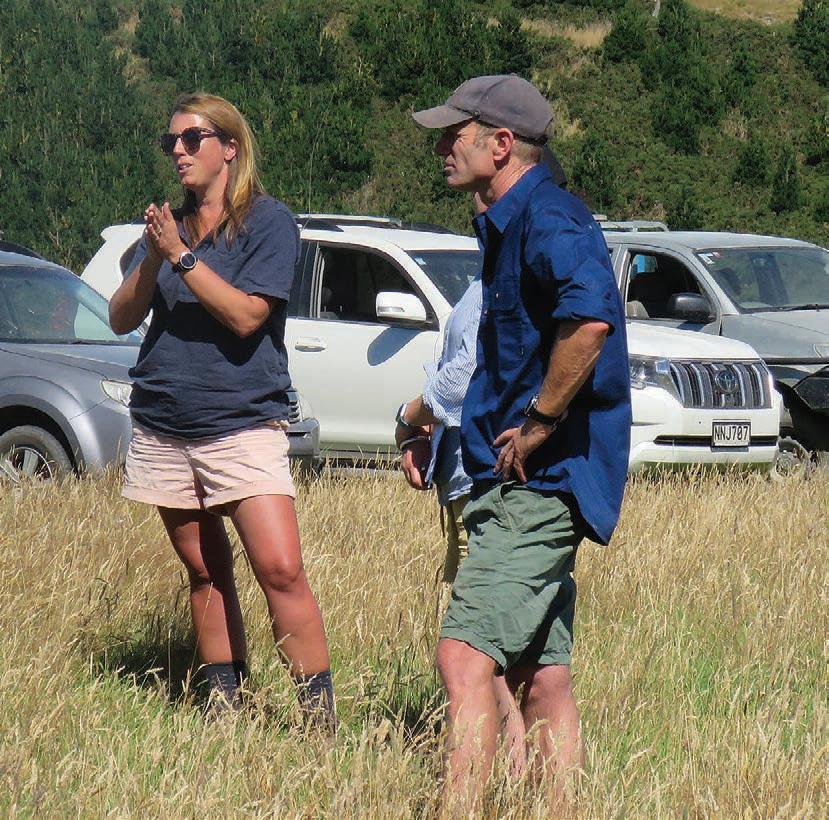
Now she’s calling for the staged implementation of an emissions pricing framework with the deferral of pricing until outstanding issues are resolved.
“We need to take the time to get this right, because the future of our sector depends on it,” Acland says.
Acland, B+LNZ’s first female chair, was elected following the organisation’s annual meeting last month.
“Since taking up the role I’ve been talking to a lot of farmers about the nine remits voted on at the annual meeting,” she says.
“We know there is significant concern about the cumulative impact of the wave of regulations on the viability of sheep and beef farmers. We [the BLNZ board] share that concern.
“We also know farmers aren’t anti change, but if change is going to be driven by regulation it needs to be the right changes, for the right reasons, at the right pace.”
She acknowledges it is important that farmers have confidence in BLNZ and the positions the board takes on its farmers’ behalf.
“We will continue to urge the government to pause any new regulations, fix the issues with the existing rules and review the cumulative financial and social impacts of the environmental regulatory agenda on farmers and our rural communities.”
Emissions pricing is clearly the No 1 concern among farmers right now, with many of the remits related to the agricultural emissions pricing process, He Waka Eke Noa (HWEN).
“While there is significant concern about the potential impact of emissions pricing on farmers, it’s also clear that climate change and emissions pricing are issues that are not going to go away,” Acland says.
“Any approach to emissions measurement and pricing must have a sound rationale and cannot threaten the viability of our sheep and beef farms.
“The board has committed to getting out and talking to farmers over the next few months and to listen more to concerns.”
Acland says there are still too many unanswered questions.
“Given the limited time available to resolve these concerns and then stand up systems, it has become apparent it’s not appropriate to price agricultural emissions from the outset.
“In light of this, BLNZ is advocating for a staged implementation of an emissions pricing framework with the deferral of any pricing
until outstanding issues are resolved.”
BLNZ is not deviating from the principles of a farm-level approach and keeping agriculture out of the Emissions Trading Scheme, as proposed by the HWEN partnership.
“We remain committed to and see value in the HWEN collaborative partnership approach, but we need to take the time to get this right because the future of our sector relies on it.”
The government and the National Party have consistently said they intend to price agricultural emissions, but Acland says this is an issue of how and when.
“We need time to have deeper conversations about this with all of our farmers, and the plan in the coming months is for a series of woolshed meetings, maybe also in pubs, to give farmers the opportunity to engage.
“Our farmers have a track record of innovating in the face of change and we need their input to make things work. We do need to establish a credible, robust, centralised measurement system trusted by farmers and other stakeholders.
“It’s the scale and pace of change that is concerning, we need government to just take a pause and let us get a workable pathway forward.
“With Scope 3 emissions reporting, where activities are tracked across the entire value chain, becoming widely demanded internationally, there are potential opportunities in having credible numbers around this – but a measurement and reporting system should meet this need to ensure farmers don’t have to duplicate activities.”
Acland has also been appointed as the first woman to head the New Zealand Meat Board, a role that includes overseeing $2.3 billion of red meat exports to the quota markets of the European Union, United Kingdom and the United States, a function that is to expand further into administering the Free Trade Agreement quotas between the UK and NZ. Behind the farm gate, Acland farms Mt Somers Station,

Canterbury, with her husband David.
The couple have three children: Leo, 12, Otto, 11 and Harriet, 10. They employ 30 staff over a diverse range of businesses.
The property runs 30,000 stock units in a mix of sheep and beef, as well as an 850-cow dairy unit.
Mt Somers Station includes a standalone honey operation with 500ha of native vegetation and beech forest supporting 400 hives that produce mānuka, honeydew and clover honeys.
Farming with a 100-year vision for future family succession is what drives their decision making and performance across the 3900ha dryland farming business and related commercial operations.
The family connection to the land can be traced back to David’s great-great-grandfather, John Acland, who started on the station in 1856.
His parents Mark and Jo started on Mt Somers in 1983, with David and Kate taking full ownership in 2017.
In keeping with the couple’s 100-year vision, the station has transitioned to a “relatively intensive” farm system. One momentous change that didn’t happen without significant anguish was the decision to move out of deer.
David’s father was one of the early pioneers of live deer capture and commercial deer farming in NZ.
“That unfortunately didn’t fit with us wanting to be here for the longer term. It was an emotional decision we had to make in our 100-year vision,” David says.
A key part of the long-term thinking has been forestry, with 2400ha of the station carrying the sheep and beef cattle and dairy support for the 330ha dryland dairy platform, while 270ha is in pine forestry destined for carbon farming and tree harvesting, with
480ha stock free in native bush. The carbon farming and forestry are a key diversification and long-term income streams to manage debt reduction and family succession.
The trees, taking up land where gorse once grew and in areas of the station that are more difficult to manage, are not using land that is taking anything away from the pastural farming.
Pinus radiata has been planted over the past three years with carbon budgeted out for 40 years. Another 125ha of regenerative native bush is also registered with ETS with plans to grow another 60ha.
“It’s all about future generations and complying with our environmental responsibilities.”
Meanwhile, wasting no time getting her feet under the boardroom table, Kate has quickly learned that governance can be brutal.
“I ended up in it rather than aspired to it and I am proud to have the opportunity to chair these organisations, which play such a vital role in NZ’s sheep, beef and red meat sector and to represent farmers and the sector I’m enormously passionate about.
“I’m personally optimistic about the future of farming and to leaving a productive farm for our own young family and future generations.
“Right now farming is tough and farmers are facing unprecedented challenges and change.
“I look forward to leading the organisation that helps farmers through that change.
“There are a lot of issues and they can get quite personalised, quite brutal even, but we need to step above that. We all have different thoughts on how we solve issues, we all want a strong thriving vibrant farming industry, we shouldn’t be throwing stones at each other.”
We all want a strong thriving vibrant farming industry, so we shouldn’t be throwing stones at each other.Kate Acland Beef + Lamb NZ
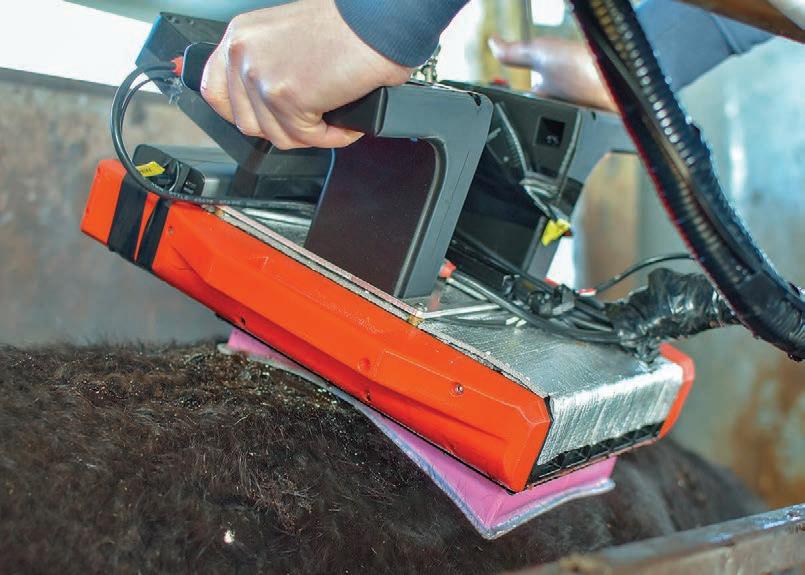
After years of work, engineers at Australian company MEQ have developed an accurate, data-driven process to provide information on carcase quality and nutritional value, and a range of handy tools. Neal Wallace reports.

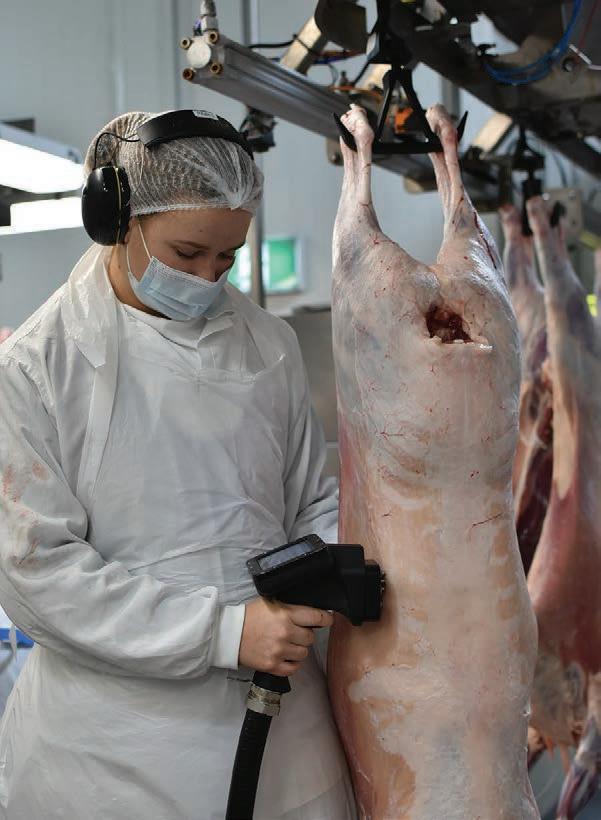
FOR five and a half years
Australian company MEQ toiled to find a better system for measuring eating quality and yield in sheep and beef carcases.
Traditional tools using ultrasound systems were not considered sufficiently accurate to provide the necessary information that MEQ chief executive and co-founder Remo Carbone was seeking.
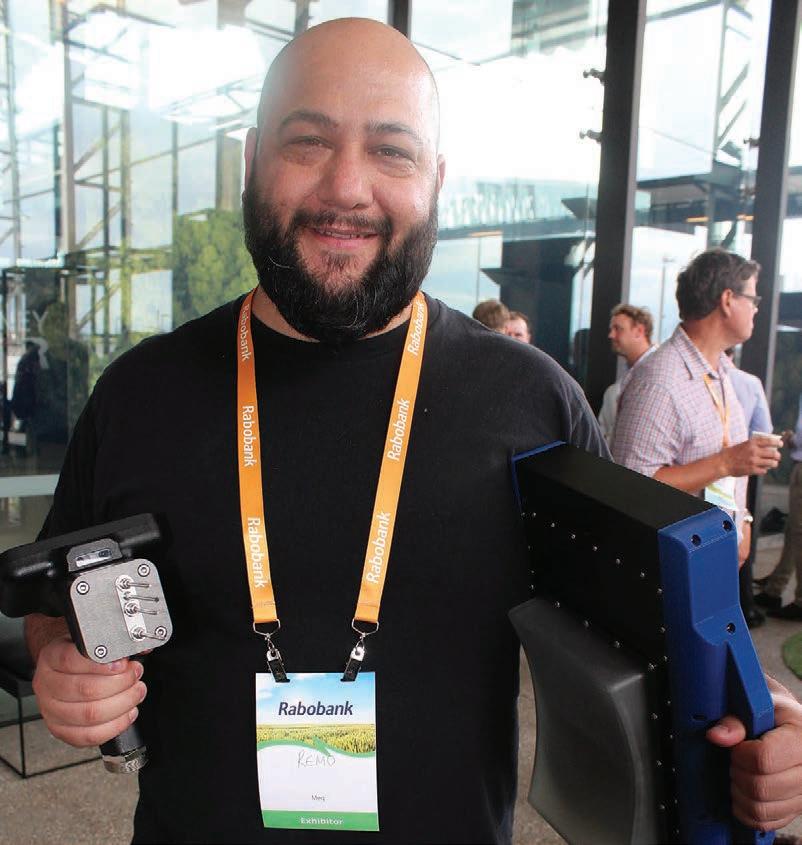
The first challenge was to convince customers that this new age of carcase data was more accurate and reliable than earlier versions.
By refining the algorithms used by existing technology, his team of 12 engineers was able to develop an accurate data-driven process
to provide information on carcase quality and nutritional value.
The New South Wales company, which was displaying its wares at the Rabobank Farm2Fork seminar in Sydney last month, has products in use in Australia, the United States and New Zealand.
Development started by looking at the technology used in human biology that could be adapted for use in the meat industry to objectively measure yields and meat quality and ultimately add value.
Carbone said research shows that a small increase in intramuscular fat can lead to a significant improvement in the eating experience.
He said the five and a half years of research has paid dividends with
the release of three products to measure various elements in both live animals and carcases.
For farmers it has developed a live animal grading and valuation tool.
The machine – resembling a plate attached to a monitor – is lowered onto the back of a restrained cattle beast.
In five seconds the imaging provides producers with realtime information on the animal’s yield and marbling and provides a predictive value.
Carbone said this not only tells farmers about whether the animal has reached optimum targets but also if feed conversion is adding mass and therefore value to the optimum cuts.
Ultimately the data contributes
to information on breeding and genetics.
For processors, MEQ has developed a hot carcase probe for quality grading of marbling, tenderness and intramuscular fat in sheep and cattle.
Carbone said early grading of carcases allows processors more time and opportunity to optimise what to do with carcases and cuts.
The probe is easy to operate –
learners can become proficient in a few hours – and 14 to 15 carcases can be measured a minute. The company’s third product is a camera that provides yield and eating-quality measures on cold carcases.
The camera measures rib eye area, marbling and the percentage of intramuscular fat, and can be used by itself or as a complement to the probe.
THE Centre for Climate Action on Agricultural Emissions has made its first investment in methaneinhibiting technology, spending almost $1.8 million on Ruminant BioTech.
The New Zealand start-up is in the process of developing a slow-release, biodegradable methane-inhibiting bolus that has the potential to reduce methane emissions from dairy and beef cattle by over 70%.
Initial trials are promising, indicating the bolus could deliver significant reductions in methane emissions from pasture-based farming, with trials indicating potential for reducing methane
emissions for up to six months.
The Centre for Climate Action Joint Venture (JV/CCAJV) is a world-first investment fund established between the government and major agribusiness companies following last year’s Budget, to help pasture-based farmers in New Zealand reduce their agricultural emissions by 30% by 2030.
The JV/CCAJV’s role is to help take the pressure off NZ farmers by making sure that they have equitable access to affordable and effective tools and technology to cut their methane and nitrous oxide emissions, while maintaining efficiency, production and profitability.
Fifty percent of the joint venture is owned by the government through the Ministry for Primary Industries, and the rest of its
shareholders are ANZCO Foods, Fonterra, Rabobank, Ravensdown, Silver Fern Farms and Synlait.
It has also appointed a board of directors, chaired by Sir Brian Roche. Joining Sir Brian on the board are Jessie Chan, Sir Neville Jordan, Greg Murison and Fraser Whineray.
The JV/CCAJV’s executive director, Wayne McNee, said it is focused on getting tools into farmers’ hands and it brings together large agriculture players with expertise and capital in a way that’s never been seen before.
McNee said the JV’s aims included investing in startups to help these companies can get products to market.
“We will invest in companies that are not New Zealand-based, but they will need to have a

technology that would work in a New Zealand farming system.”
It also wanted to ensure research capabilities and facilities are available in New Zealand to do the research needed in order to obtain release approval. Many of the companies the JV was working with had carried out their research off-shore, he said.
The third part included working with these companies to help them get approval for their products in New Zealand.
McNee said the JV also has strict criteria that it follows when selecting companies to invest it.
McNee said there are a lot of companies internationally working in this area. Some of these had a New Zealand focus, but many did not. The JV/CCAJV’s shareholders
“have access to over 70% of New
Zealand’s farms, which will make it easier to accelerate the adoption of emissions reduction tools on farm”, he said.
“Our shareholders are committed to ensuring [the JV/ CCAJV] is commercially led, informed by science, and investing in and developing practical tools to reduce agricultural emissions.
“We also recognise the importance of intergenerational stewardship (kaitiakitanga) of the land and the key role te ao Māori beliefs, values and aspirations will play in the success of the joint venture.”
The JV was set up for three-anda-half years with $170 million in funding to invest and McNee estimates they would be looking at five to 10 investments over that period.
Mt Pleasant
Welcome to 718 Opotiki Road, the vendors need a sale as circumstances have changed for our vendor and this property must be sold. Situated only 7 km off State Highway 4 just north of Taumarunui which is a hunting and fishing playground, this amazing 158.75 ha property offers breathtaking views of Mt Ruapehu, Ngauruhoe and Tongariro. The large four bedroom home sits high up on the property to accentuate the views of the native bush and the farm below. This property also has a special addition nestled away at the base of the farm with a carefully built cabin offering stretching views across the valley where you can hunt, tramp, or watch the wildlife grazing. This property has countless opportunities with all the nature, space, views, and approx. 30 ha of native bush and an accommodation business that could be promoted and driven to lift its occupancy rates to help fund your dream. Make sure you get in touch with us for an information booklet and price expectations.
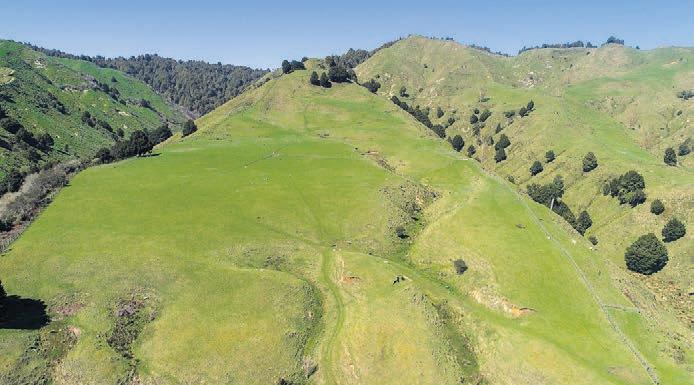
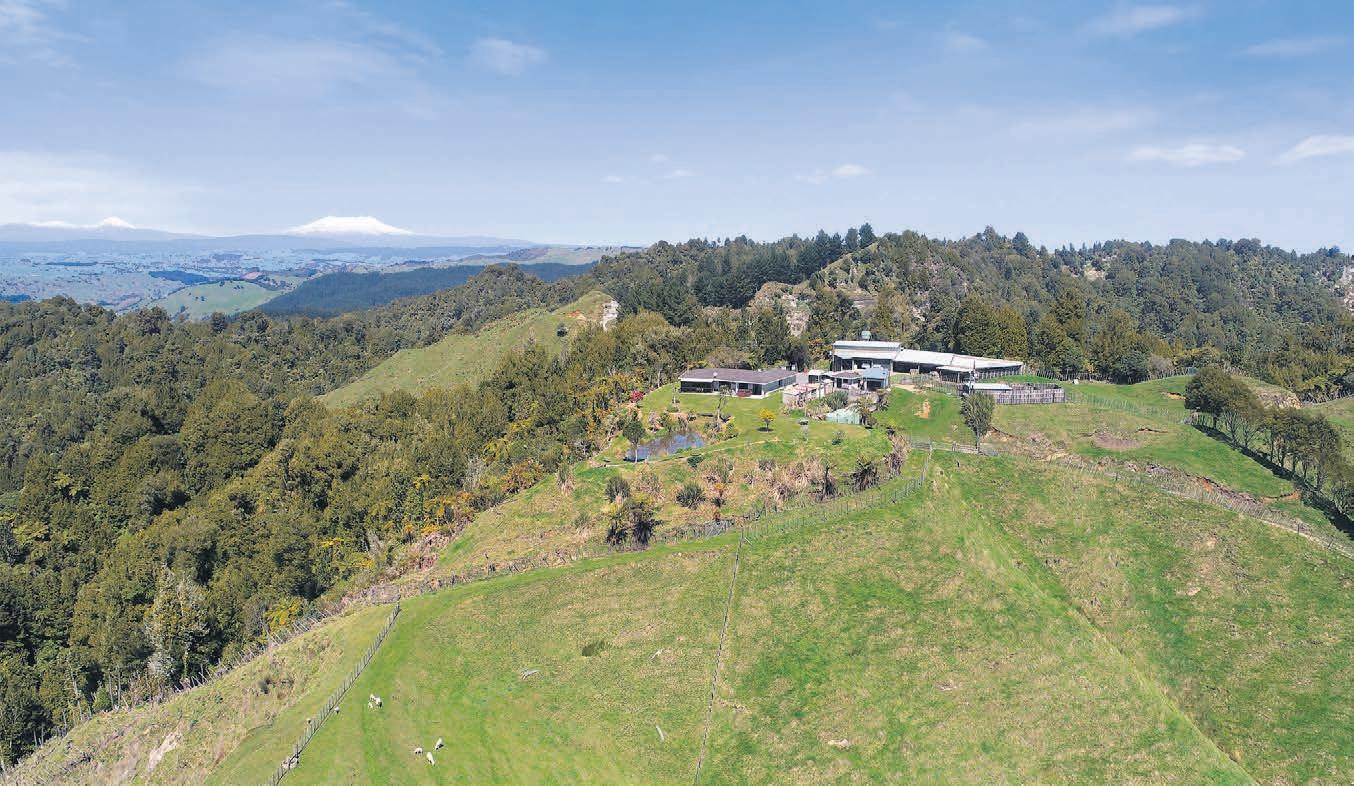
Auction 1.00pm, Thu 4th May, 2023, 27 Hakiaha Street, Taumarunui
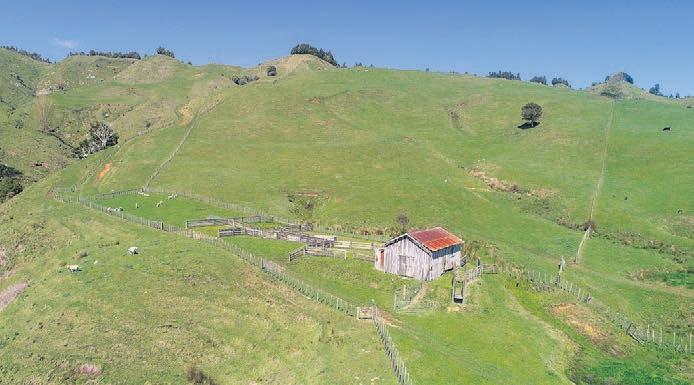
View By appointment Web pb.co.nz/TUR109643
Katie Walker
M 027 757 7477 E katiew@pb.co.nz


Dianna Janett
M 027 554 2227 E di.janett@pb.co.nz

Our combined strengths complement each other, creating more opportunity for our customers and Farmlands shareholders across provincial New Zealand.


• A nationwide network from Northland to Southland
• Sound, trustworthy advice from market-leading experts
• Shareholder benefits and preferential commission rates means





• more money in your pocket
Bigger networks, more buyers, better results
For more information call 0800 367 5263 or visit pb.co.nz/together
Matiere 718 OpotikiAt just under 110 hectares this bare-land block will have appeal as a dairy support, bull beef or finishing block. Contour is a mix of flat, rolling, and medium hill divided into 15 paddocks with conventional post and batten fencing.


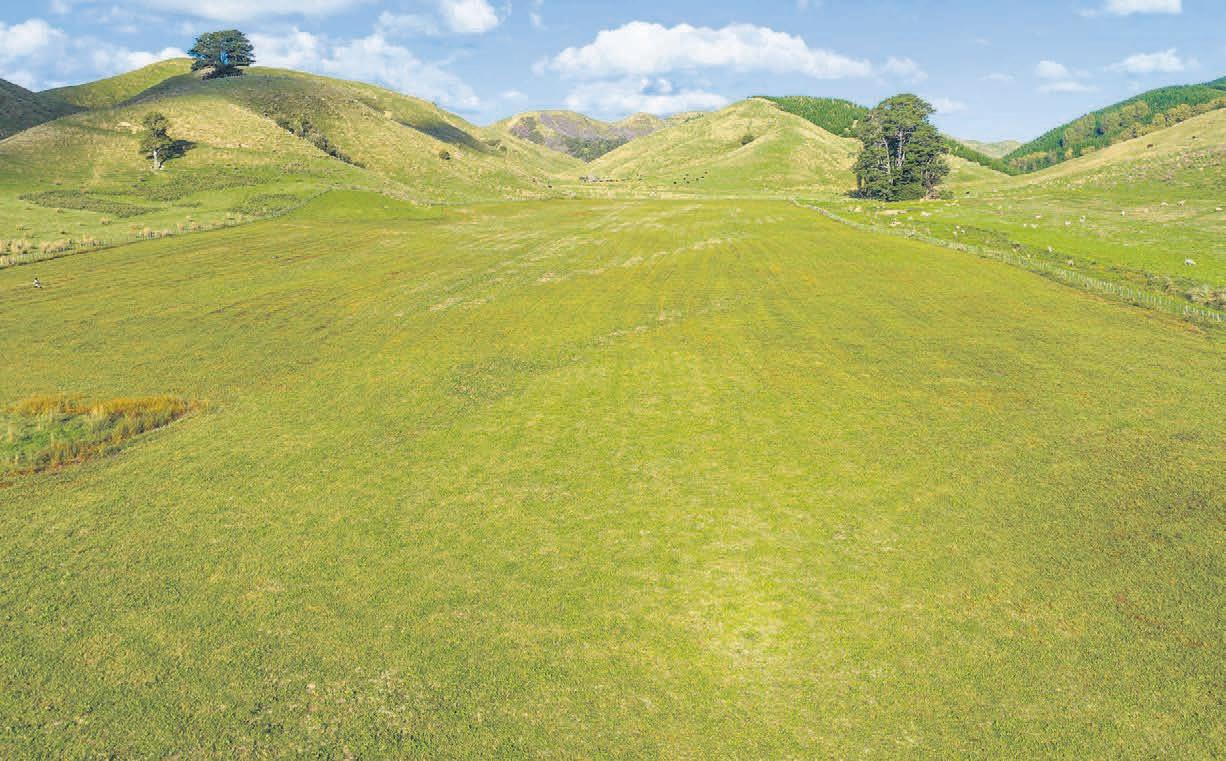
Amenities include a converted two-stand woolshed, large three-bay hay/implement shed plus sheep and cattle yards.
Located near to the Pahiatua town boundary, this property is sure to generate strong interest. Please do not hesitate to make contact to discuss further or to arrange a viewing of the property. bayleys.co.nz/3100490
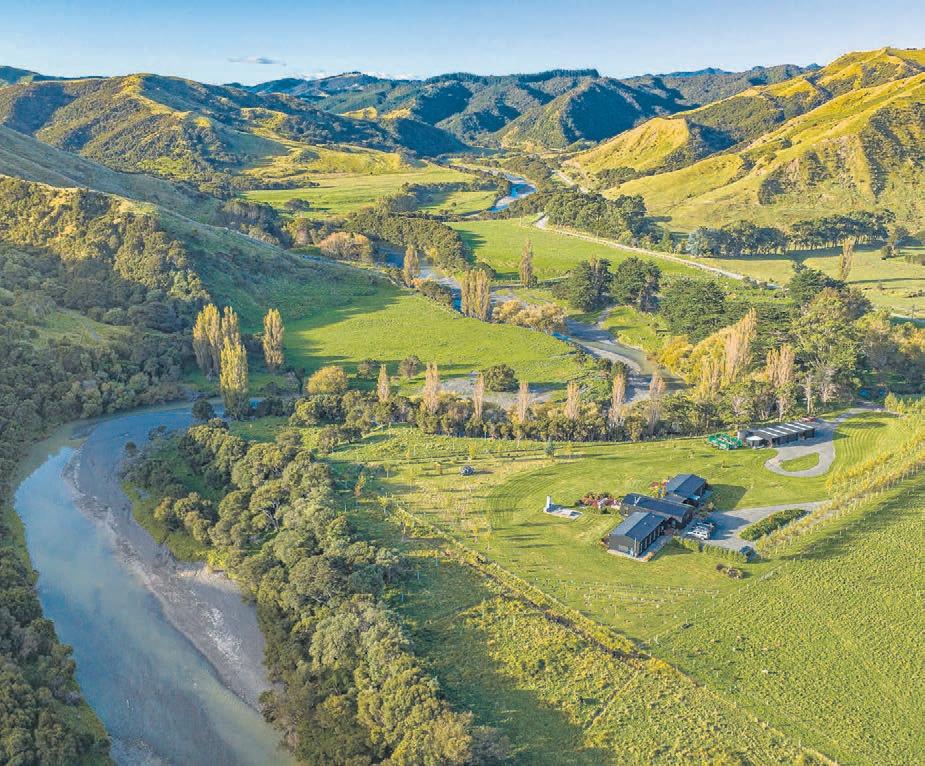
Martinborough 970 Tora Road
Trophy hunting and lifestyle
Stunning natural environment. Awhea River terraces, medium to steep hills, large sunny basins home to free-roaming deer and other wildlife. Luxurious lodge/home provides panoramic views.
Whether you’re looking for that trophy stag or adventure with the family, this amazing property has something for everyone. Support buildings include a 4 bay implement shed, 5 bay shed with roller doors, large chiller, processing area and workshop, original woolshed, sheep and cattle yards. With native bush areas already mapped for potential carbon credits, this property offers many options: forestry, grazing, hunting, guided tours, tourist destination with ability to host functions or conferences with luxury accommodation. Exceptionally well presented and unique. bayleys.co.nz/3151157
109.7938ha
Tender (will not be sold prior)
Closing 2pm, Thu 18 May 2023
243 Broadway Avenue, Palmerston North Paul Hofmann 021 084 60446 paul.hofmann@bayleys.co.nz
Andrew Smith 027 760 8208 a.smith@bayleys.co.nz
Te Kowhai 239 Onion Road
72.4568ha
362.1427ha
Tender (will not be sold prior)
Closing 4pm, Thu 25 May 2023 186 Chapel Street, Masterton View by appointment Lindsay Watts 027 246 2542 lindsay.watts@bayleys.co.nz

Andrew Smith 027 760 8208 a.smith@bayleys.co.nz

Simon Clinton-Baker 021 953 909 simon.clinton-baker@bayleys.co.nz

EASTERN REALTY (WAIRARAPA) LTD, BAYLEYS,
Here’s one with a Twist
Imagine a fully operational 72ha dairy farm…… with commercial activities on the boundary.
In the Waikato’s fast changing world I would say this property has a big change of use earmarked for it.
With the Te Rapa dairy factory, Northgate commercial zone, the Inland Port, the Waikato Expressway and so much more on your doorstep this property is truly worthy of your inspection.
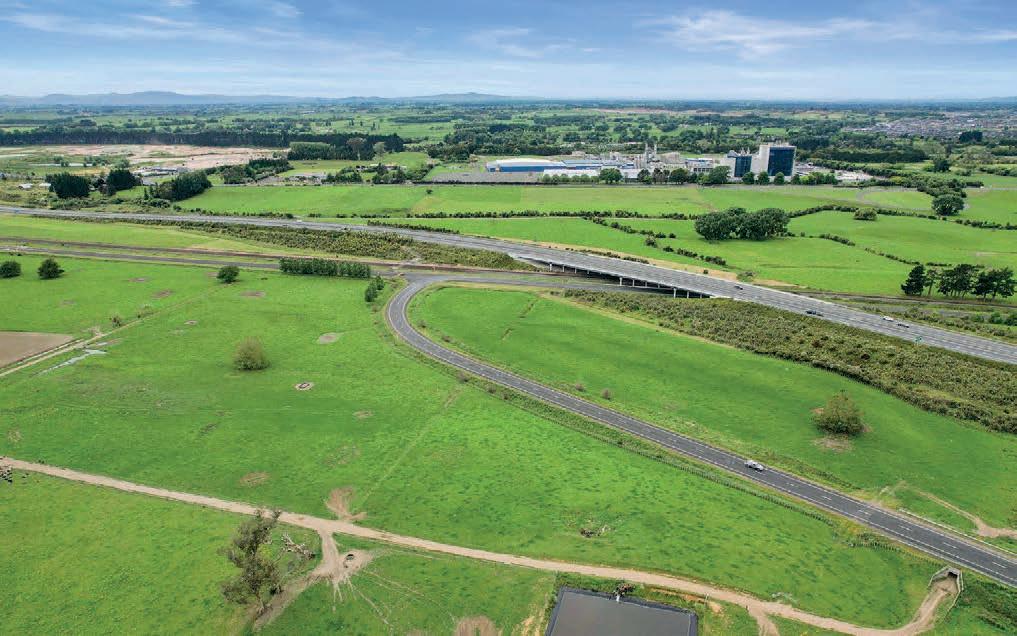
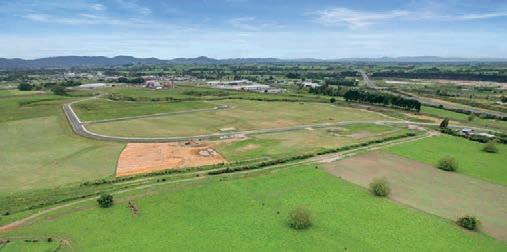

Our retiring owners are open to selling outright or entering into equity partnership – Call us today to view this incredible opportunity.
Tender Thursday 4th May 2023 at 12:00 pm (unless sold prior) View by appointment only www.harcourts.co.nz/ML4706
Kevin Deane M 021 970 902
Mark Ingram M 027 495 5941
TENDER
‘Dunard’ High
Hill Country - 247.2 hectares
Open Farm
LOWER KAIMAI, BAY OF PLENTY
213ha Tauranga Trophy Property!
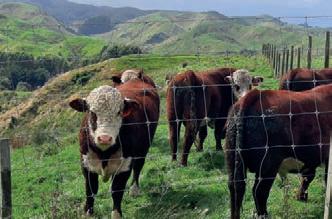
1618 Waituna Tapuae Road, Feilding
• 2,600 - 2,700 stock units

• High quality Kiwitea series soils on the hills and silt loam flats, with good fertilizer history

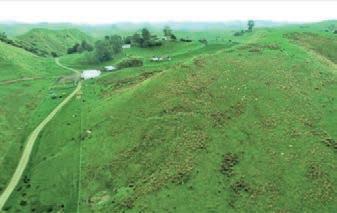

• Fenced into 22 main paddocks
• Well tracked and double fenced central laneway Airstrip, metal quarry and 7Ha mature pine plantation
• Good water supply reticulated to troughs 4 stand woolshed and yards
• 5 bedroom home with stunning views in need of renovating
For Sale By Tender
Tenders Close: 4.00pm 11th May 2023 at 56 Stafford St, Feilding.

View: Wednesday 26th April
1.30 - 3.30pm. Please bring 4 wheeler & helmet. Call for more information.
Richard Anderson 027 543 1610 richard@rals.co.nz



Robert Dabb 027 255 3992 robert@rals.co.nz
Beautiful 213.7ha trophy farm. Same owner since 2012. Nothing else like it this close to Tauranga and amazing beaches! Minutes to SH2/SH29, gateway to Auckland, Hamilton, BOP. Currently in 3 titles. Potential for a further 4 - 9 titles. Explore Eco Tourism, lifestyle dev., equine retreat, or land bank. Approx 45ha streams, native plants, wetlands, approx 110ha lush grazing paddocks, approx 53ha pine forests, three-bedroom home, impressive infrastructure, rural and ocean views. Income from managed or owner operated dairy farm. Traditionally milked 220-225 Jerseys off approx 90ha.
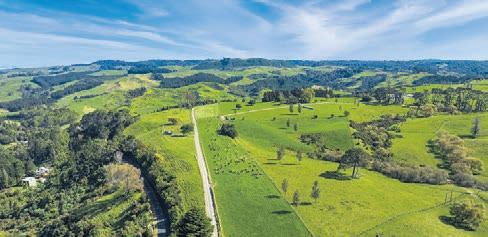
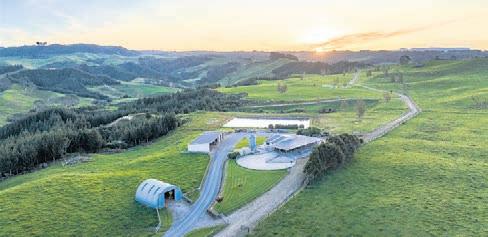
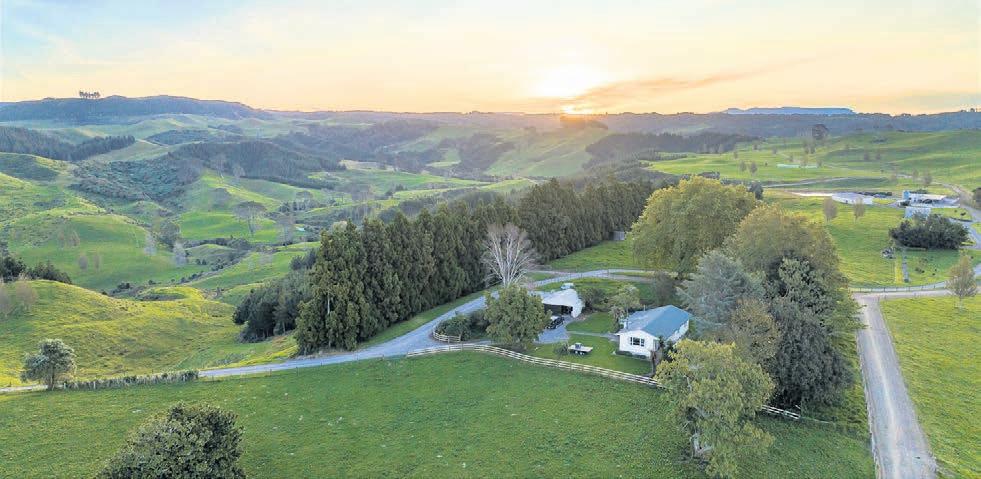
pggwre.co.nz/TAR37727

A BIT ABOUT WAIPAPA GROUP – Waipapa Group is a large-scale farming trust that is situated 23km northwest of Taupo, New Zealand. The Trust has in its care, 7,202 hectares of land which forms the basis of its intensive farming operation comprising dairy farming, sheep and cattle fattening units and wool growing enterprises. The Trust holds significant assets, which is governed by a board of trustees and founded on a strong vision and core values.
THE OPPORTUNITY – Reporting to the Chairperson of Directors, the General Manager takes responsibility for implementing the agreed strategic and operational management of Waipapa Group as well as having particular responsibilities with regards to Company, Trust governance and their respective obligations. The General Manager works closely with the Finance Manager to establish an annual business plan and budget. They are part of the senior leadership team and are responsible for supporting the overall operational performance of the Group. Further responsibilities for this role can be found at http://bit.ly/3MCOM3v
A BIT ABOUT YOU – To successfully execute the key responsibilities of this General Manager position, you will ideally bring the following:
• Proven strengths in the areas of people leadership, business HR, Policy, and system implementation
• Be an experienced senior manager with capability in strategic and business planning, monitoring, and reporting
• A high degree of practical farming experience and ability to operate at scale
• Able to develop a positive working relationship with all stakeholders and be looked at as a team player, as well as having the flexibility to deal with a wide variety of people and situations
• Contemporary and relevant knowledge of developments in farming and the agricultural sector, including an understanding of industry politics, the sheep, beef & dairy industries within New Zealand and abroad
• Experience in Regional and local authority liaison to ensure the organisation is compliant on all matters involving consent conditions and district plan rules.
ON OFFER – This General Manager position comes with an attractive remuneration package commensurate with the significance of this role including company vehicle. Located in a highly desirable Central North Island location, this opportunity encapsulates a wide-reaching skill base that is wrapped into one role within a diverse organisation. The role allows for involvement in farm groups, professional development, and networking opportunities.
Do not miss this rare opportunity to influence and create impactful and sustainable change with this high-profile General Manager role.
FOR FURTHER INFORMATION OR TO APPLY PLEASE VISIT http://bit.ly/3MCOM3v or give the Rural Directions team a call on 06 871 0450 for a confidential chat (Ref# 1033117).
Applications close Sunday 30th April 2023
Only job seekers who have NZ working rights will be eligible for this role.
A BIT ABOUT WAIRIRI…
Wairiri is a sheep and beef breeding operation based in the Tararua district, it is 840ha effective of extensive hill country that runs both a Composite ewe flock and Angus beef herd. They also have an additional 30ha block, 10km away, that is used for finishing stock. The farm is 30 minutes from Dannevirke which is their service centre.
THE OPPORTUNITY…
Reporting directly to the Owner, the Experienced Fencer General will have a high level of autonomy to get on with daily and weekly tasks. Your priority will be infrastructure R&M including fencing maintenance, yards, general R&M. You will also ensure the vehicles, plant and machinery are serviced in a timely manner by the appropriate suppliers.
This is an interesting and varied role, with the opportunity to help the wider team with stock work when needed and in turn the team will help you with fencing when priority stockwork is completed.
A BIT ABOUT YOU
The successful candidate will share the team values of honesty, integrity, and respect and will come with the following skills:
• Competent Fencing skills
• Well-rounded general skills
• Building R & M
• Machinery operating (tractor)
• Handpiece experience
• Chemical Handlers Certificate, preferred but not essential
ON OFFER…
This position offers an excellent remuneration package, where continual learning & upskilling of staff is encouraged and supported. Accommodation options will be discussed with the successful applicant. There is a great rural community and thriving local primary school just 10 minutes away with high school options in Dannevirke or Pahiatua.
FURTHER INFORMATION
To view a Job Information Form and Apply please visit https://bit.ly/3L3WjXP or www.ruraldirections.co.nz/jobs. To speak with the Rural Directions team call 06 871 0450. Applications close Sunday, 7th May 2023
Only candidates who have NZ working rights will be eligible for this role.
Register to receive job alerts on www.ruraldirections.co.nz


DairyNZ is the industry organisation that represents all New Zealand dairy farmers. With $90 million in revenue and ~300 staff DairyNZ supports farmers through investing in research, resource development, extension, and advocacy to ensure they lead the world in sustainable dairy farming. With a purpose to deliver a better future for dairy farmers, DairyNZ seeks to support better farming practices, develop better solutions for their challenges, and shape a better future for them.
The DairyNZ Board of Directors are looking for a replacement CEO following the recent resignation of longstanding incumbent.
DairyNZ requires an outstanding leader who is contemporary and focused on outcomes with a vision for the future of the sector. The CEO will be decisive and have the ability to lead transformation within complex stakeholder environments. The new CEO will have credibility in the arena of science and a strong understanding of New Zealand’s primary sector.
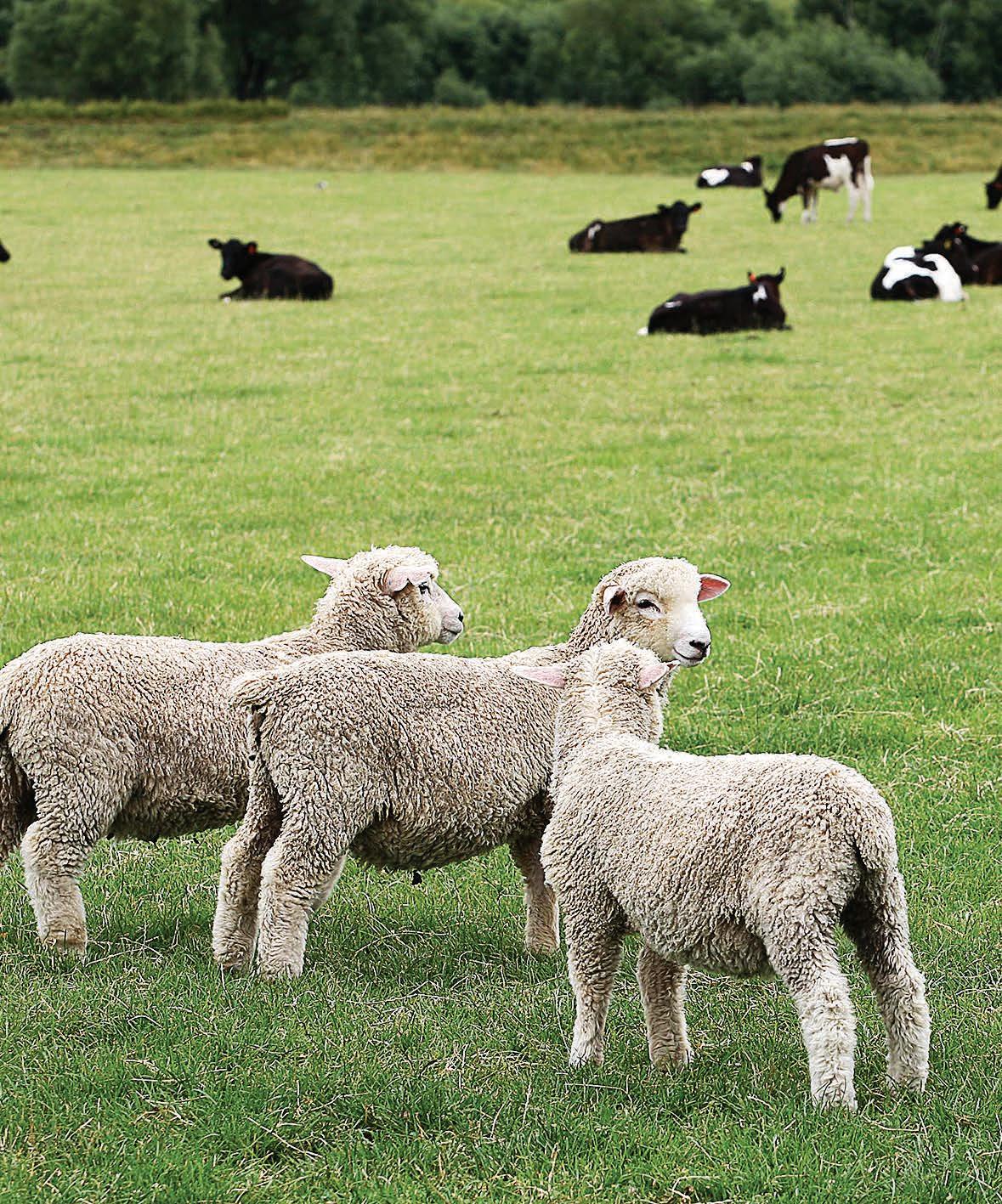

The ideal candidate will be an outstanding, proven, transformational leader with the credibility to inspire and engage with farmers first and foremost. Their influencing and stakeholder management skills will be exemplary, and the new CEO will possess credibility from a diverse range of stakeholders including government and industry, and science & research institutions. As well as exceptional people leadership skills and the ability to build a high-performing executive leadership team, the new CEO will bring strong strategic agility and a track record of engaging all stakeholders in a united vision.
They will bring demonstrable experience fostering respectful relationships, leadership gravitas and cultural sensitivity. Attraction and retention of talented people underpins the success of DairyNZ. With ability to understand what motivates staff and create a vision that inspires the workforce into the future.
To advertise phone Debbie 027 705 7181
The future of DairyNZ and the sector it serves is critical to the success of New Zealand’s GDP. This Chief Executive Officer role presents a rare opportunity to lead the sector and play a key role in its future success driving best practice through research, insights, and advocacy.
For more information or to apply, please contact Maia Stewart at Hobson Leavy Executive Search: maia@hobsonleavy.com
Applications close 5.00pm, Friday 28th April 2023.
DOGS FOR SALE
TWO 4-MONTH-OLD black and white heading pups for sale. Phone Marty Westenra 027 630 5577. 4-YEAR-OLD SMITHFIELD Huntaway X. $1500 or near o er. Phone 027 788 8115.
BOP. BUYING / SELLING. Huntaways. Heading dogs. Deliver NZ wide. https:// www.youtube.com/@ mikehughesworkingdog 07 315 5553. TOP BLOODLINES. Heading pups guaranteed. Phone Dave Andrews 027 450 6095.
ATTENTION DAIRY FARMERS
COWSHED PAINTER
AVAILABLE. Experienced. Old and new sheds. Herringbone and Rotary. Southland / Otago. In Waimate district mid to late April. Phone 027 517 9908 or email: raymond.d@ slingshot.co.nz

GIBB-GRO GROWTH PROMOTANT



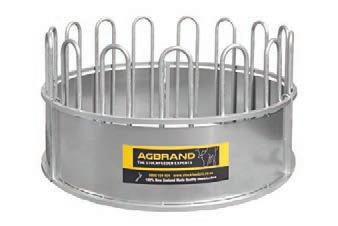




PROMOTES QUICK

PASTURE growth. Only $6.50+gst per hectare delivered. 0508-GIBBGRO [0508 442 247] www. gibbgro.co.nz. “The Proven One.”

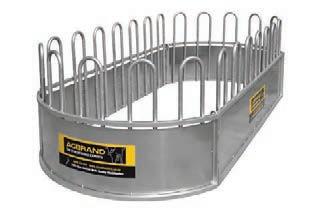

GOATS WANTED
FERAL GOATS WANTED. Pick-up within 24 hours. Prices based on works schedule. Phone Bill and Vicky Le Feuvre 07 893 8916 / 027 363 2932.
GOATS WANTED.
All weights. All breeds. Prompt service. Payment on pick up. My on farm prices will not be beaten. Phone David Hutchings 07 895 8845 or 0274 519 249. Feral goats mustered on a 50/50 share basis.
GRAZING AVAILABLE
80-100 MAY TO MAY



Dairy Heifers. Experienced graziers with long term clients. Implementation of Comprehensive Animal Health Plan included. Otara Land Co – Opotiki. Phone Braden 027 318 3453.







NZ KELP. FRESH, wild ocean harvested giant kelp. The world’s richest source of natural iodine. Dried and milled for use in agriculture and horticulture. Growth promotant / stock health food. As seen on Country Calendar. Orders to: 03 322 6115 or info@nzkelp.co.nz
LEASE LAND WANTED
2000-4000SU SHEEP AND beef lease block. Anywhere in New Zealand considered. Mid 40’s couple, approximately 30 years experience. References available. Phone Karyn 027 246 9668.


DAIRY OR GRAZING. Rangitīkei / Manawatū through to HB. Regenerative farming practiced. Open to developing land in partnership. Phone Michael 027 223 6156.
PUMPS
HIGH PRESSURE WATER PUMPS, suitable on high headlifts. Low energy usage for single/3-phase motors, waterwheel and turbine drives. Low maintenance costs and easy to service. Enquiries phone 04 526 4415, email sales@hydra-cell.co.nz

RAMS FOR SALE
WILTSHIRES-ARVIDSON. Self shearing sheep. No1 for Facial Eczema. David 027 2771 556.


FOR ONLY $2.30 + gst per word you can book a word only ad in Farmers Weekly Classi eds. Phone Debbie on 0800 85 25 80.




RURAL MASSAGE
RELAXING FULL BODY massage in rural Ohaupo. Unwind. De-stress. www. ruralmassage.co.nz or call 027 529 5540.




SHEEP SCANNING AVAILABLE IS YOUR SHEEP scanning getting ridiculously expensive? My rates might surprise you. Over 20 years quali ed sheep scanning experience. Hassle free, easy system with 3-way draft. I do the marking. $$ saved to you. Wet/dry to all multiples. Lates included. Areas covered Taihape, Hawke’s Bay, Whanganui, Wairoa, Wairarapa. Phone to discuss options. Greg on 0274 588 900.
FARM WANTED TO BUY
SHEEP AND BEEF farm wanted to buy. 200-500 ha, Manawatu/Wanganui, Tararua or Wairarapa areas. Our rst farm purchase. Call for a no obligation con dential chat. Brent Cuttance. 021 108 5445.
WANTED
NATIVE FOREST FOR MILLING also Macrocarpa and Red Gum New Zealand wide. We can arrange permits and plans. Also after milled timber to purchase. NEW ZEALAND NATIVE TIMBER SUPPLIERS (WGTN) LIMITED 027 688 2954 Richard.
WORKING FARM WANTED. Lease or lease to buy, with all facilities. Auckland to Taupō. Suitable for regrassing. Will maintain to a high standard. Phone 027 396 9134.
MOISTURE METERS Hay, Silage dry matter, grain. www.moisturemeters.co.nz 0800





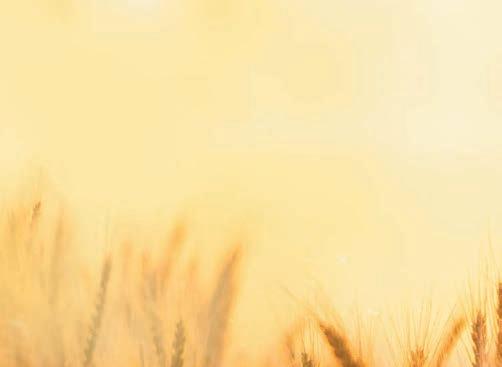

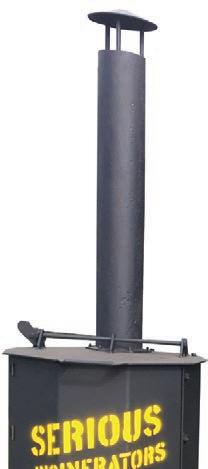



1050BeefBredCalves
Monday1st May-12Noon
SpecialEntries:
A/cBDFoster

Ang&AngHereX-32Strs&32Hfrs
A/cMakahiwiLandCo
SimmentalX-25Strs
A/cWhenuatupuOhinemoaTrust
Ang&AngHereX-50Strs
A/cPR&TMBirket
Angus-32Strs&30Hfrs
PentireDeerFarm
Angus-40Strs/Hereford-20Strs
Bryn-Y-MorTrust
Angus-37Strs&40Hfrs
Hereford&Simm-9Strs&29Hfrs
Enquiriesto
RossWaller0274845465
STORE EWE & MALE LAMBS 32-38kg
CS ROMNEY EWE LAMB
REPLACEMENTS
R1YR FRIES & BEEF BULLS
180-220kg
R2YR BEEF OR FRIES HERE X HFRS
350-440kg
R2YR ANG & ANG X STEERS
440-470kg
www.dyerlivestock.co.nz
A/C TEAM SPEEDY LIMITED
TUESDAY, 2nd MAY
15 ERCEG RD, WHANGEREI
DAIRY # 12752
Commencing 11am On-Farm & Favoured with instructions from our vendor clients Shane & Stacey Speedy, Link Livestock are pleased to announce the following
IN-MILK Herd & I/C Heifer Auction
160 cow Jersey/Jersey X/XBred Herd BW 236, PW 256, 96% RA.
Calving from 10th July 4 weeks AB tailed
Angus Bulls (removed 15/12)
Herd milked on OAD system for last 12 years, consistently producing 340-350 ms/cow, low SCC, TB C10
CRL In calf Heifers CRV calving 10th July to Angus bulls (removed 15/12) 80% Jersey, 20% Xbreed
DELIVERY: Immediate delivery OR 1 June for purchasers without access to new properties
PAYMENT TERMS:
Due to Link Livestock 16th May 2023
AUCTIONEERS NOTES: A very tidy herd to the eye producing well on OAD system. Early calving type cows that will cope in any farming system.
CONTACT FOR MORE INFORMATION:
Link Livestock Agents

Vendor Agent Grant Aiken 027 245 8821
Northland Agent Cory Bellamy 021 113 1968
Head Agent Stewart Cruickshank 027 270 5288
Monday 1st May
12:00 pm Start
A/C Taumata Moana Station
Te Anga
ANNUAL LINE
400 Angus weaner steers
200 Angus weaner heifers
Auctioneers note: These weaners are born on steep coastal hill country and will have been weaned 3 weeks. Renown for their shifting ability.
For more information please contact:
CARRFIELDS LIVESTOCK AGENT: Cam Waugh 027 480 0898


A new minister has started at the church and decides to go out and meet his flock. First up he visits one of his shut- in elderly parishioners.
They are both chatting about the Bible and the many wonderful things “God” has done in their lives. The minister notices a dish of peanuts on the coffee table. As they continue to chat, the minister starts snacking on the peanuts.
Eventually the visit winds down and the minister says, “Well sister, thank you for your time and these very delicious peanuts.”
The elderly lady says, “Oh no, thank you pastor. Ever since I got these dentures, all I can do is suck the chocolate off of those peanuts.”
Here at Farmers Weekly we get some pretty funny contributions to our Sale Talk joke from you avid readers, and we’re keen to hear more!
If you’ve got a joke you want to share with the farming community (it must be something you’d share with your grandmother...) then email us at: saletalk@agrihq.co.nz with Sale Talk in the subject line and we’ll print it and credit it to you.
Conditions apply
Longfords Farm
51 Acacia Road, Lake Okareka, Rotorua
Thursday 27th April - 11.30am start
Stock have come forward in good condition off a challenging hill country property and will shift extremely well.
> 100 R2 Angus Steers (Approx 470 kgs, Te Mania Bred)
> 25 R2 Charolais Steers (Approx 500kgs)
> 46 R2 Angus Shorthorn X Steers (Approx 480kgs)
> 40 R2 Angus Heifers (Approx 450kgs, Storth Oaks Bred)
> 25 R2 Charolais Heifers (Approx 460kgs)
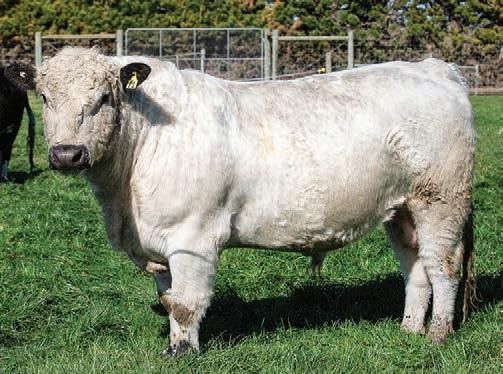
> 10 Hereford Heifers ( Approx 470kgs)
> 1130 Romney Male Lambs (Crypt & Wethers, Waimai Bred)
> 150 Southdown X Wether Lambs
> 850 Romney Ewe Lambs (Owner Bred & Suitable For Breeding)
> 70 Mixed Sex Lambs
A/- Client’s
> 23 R3 Hereford Steers (Approx 570kgs)
> 34 R2 Angus Steers (Approx 450kgs)
> 350 MA Coopworth Romney X Ewes (Mostly 5yr olds, RWR Suftex Rams 8/2/23 - 9/4/23, Mouthed & Uddered)
> 600 Romney X Ewe Lambs
Stock can be trucked on the day of sale, Friday 28th April or by prior arrangment.
Bidr® online bidding option available if you cannot attend the auction.

To register for Bidr® please go to www.bidr.co.nz.

If you would like assistance registering please call the bidr team on 0800 TO BIDR (0800 86 2437).
Catalogue available via the agent or at www.hazlett.nz/livestock/sale-catalogues

Further enquiries: Richard Johnston 027 444 3511
A/c Waikato Dairy Ltd
Date: Thursday 27th April
Address: 850 Whatawhata Road, Hamilton D/N 73081
Start Time: 11.30am will be available for online bidding
COMPRISING:
230 x Friesian & Friesian Cross Mixed Age
In-Milk Cows
DETAILS:
• BW137 PW168 RA80%
• DTC 15/07/23, 6 weeks AB LIC, Frsn to Frsn, Jersey to Xbred – 5 days Hereford, then tailed with Jersey Bulls removed 30/12/22. One herd test 06/03/23, 340 M/S, SCC 77,000
• Herringbone Cow Shed, BVD Bulk Milk tested, Lepto Vaccinated July 23, TB C10
AUCTIONEERS NOTE: 230 Cows selected on eye from 370 cow herd. Herd OAD from calving for 8 weeks, then twice a day until 20/12, then OAD again. Vetted to dates.
DELIVERY/PAYMENT TERMS:
14 days from sale unless prior arrangements were made.
Immediate delivery, or for those without farm access the cows can stay on farm and will be dried off.
CARRFIELDS LIVESTOCK AGENT: Matt Hancock 027 601 3787 matthew.hancock@carrfields.co.nz
A/C Daniel Furness
Date: Thursday 4th May
Start Time: 11:00am
Mangawhero Road Otorohanga

COMPRISING DETAILS
• 89 x 2-8 year Friesian/FsnX Early Calving Cows, BW 131 PW 180
• Calving start date: 12/7/2023
4.5 Week LIC Friesian
• Tailed with Jersey Bulls removed 3/12/22 followed with 2 weeks short gestation
• SCC 80,000
• Production 480-500ms per cow annually
• System 3 feed base. Grass, PKE, silage, molasses, summer turnip crop
Auctioneer Notes: Cows have been PTIC scanned and dated and will be done a week before sale again, all cows will come forward in good condition, originally a CRV based herd which has switched to LIC the past 2 seasons, delivery will be the week following sale unless prior arrangement made by new share milkers or farm purchasers, payment will be 14 days after the sale unless prior arrangements made, cows here to suit all budgets and requirements from a top vendor. Rebates offered on the day for outside independent agents with prior arrangement to the sale.
Please Contact
Agent: Kent Myers 027 247 6970 kent.myers@progressivelivestock.co.nz

Other Enquiries, phone any PLL Agent
Kim Harrison 027 288 6845
John Davidson 027 452 3882
Luke McBride 027 304 0533


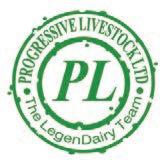
www.progressivelivestock.co.nz
Confirmed in-calf to homebred registered Speckle Park Bull
• 15 heifers
• 10 cows
BVD tested and vaccinated. A Canterbury based stud recently established from the best genetics available in NZ, Australia and Canada.
Palmerston Saleyards. All cattle yarded overnight and sold over scales. Sale livestreamed on bidr.
WEDNESDAY 26 APRIL 11am Thompson Company Farms Complete Dispersal Sale (Stratford)
1pm Pedigree Holstein Friesian & Jersey In-Calf Heifer Sale (Canterbury)
1pm Posterity Jersey Final Dispersal Sale - A/C Dick & Faye Post (Hamilton)
6.30pm Two View Jerseys Complete Dispersal Sale
THURSDAY 27 APRIL 11am 2023 Westell Holstein Friesian Herd Dispersal Sale (Te Awamutu)
11.30am Friesian & Friesian X In-Milk Cows- A/C Waikato Dairy (Whatawhata)
11.30am On Farm Sale A/C Longfords Farm (Rotorua)
6pm Kauri Gold Sale
7.30pm Payne Farms - No Payne No Gain Genetics Sale
FRIDAY 28 APRIL 10am Palmerston Calf & Adult Cattle
Account of B & S B Woodruff
Sunday 30th April 2023 – 11.00am Start
219 Rimuputa Road off Moki Road
Sign posted from State Highway 43 (Forgotten Highway)
Farm Machinery and Sundry Sale
Items include: MF5445 Tractor 100hp and front end loader, Honda 500 quad, EID reader, Te Pari Classic cattle crush and weigh bars, Prattley yards (steel), docking shoot, scrim, dog tucker freezer, horsefloat Fieldline, horse gear, saddles, bridles, scrim standards, Cdax 400 fert spreader, Cdax bike seeder, Cdax sprayer on wheels, school desks, school easel, rimu bench, book shelves, feeders calf and lamb, handipiece, shearing grinder, woolshed florescent lights, fadge holders, feed bins, sweeps, wool table, weigh platform, loading ramp, household items, gates, pipes, wire strainers, staples, coils of wire, barb wire, fuel tank, SS milk vat, Novaflow, alkathene pipe, culvert pipe, posts, strainers and angles, timber treated pine 6 x 2, macrocarpa and oak, dog run, 2x knapsacks, Kea 4 x 4 trailer, trailers, EF unit, water pump, hay feeders, child’s bike, reels, standards, drenching guns, vacc guns, ladders, pig trap, old baths, woolshed grating, Ford Escape car, fishing rods, Milwaukee power tools and battery, garden tools, beer fridge, BBQ, water troughs, concrete troughs, plastic troughs, old copper, oil heaters, fencing tools, various chemicals, brushkiller and sprays, compressor, welder, battening gun, chainsaws, boxes nails, furniture, petrol drill, generator plus numerous other items, 2 man auger.
Terms are cash or EFTPOS only
The Whanga Wasps netball team will be running a BBQ
Please note to take care when driving on the Rimuputa Road as it’s very narrow in places. For further enquiries call Josh Gordon 027
or the
Key: Dairy Cattle Sheep Other
WESTELL FARMS OTHER BREEDS DISPERSAL SALE
Thursday 27 April | 11.00am
A/C David & Wendy Harker, Westell
On Farm & Bidr Hybrid
On Farm: 245 Kakepuku Road, Te Awamutu
Comprising:
• 83 Milking Shorthorn, Jersey, Frisian Cross In

Calf Cows
27 Milking Shorthorn, Jersey, Frisian Cross In
Calf Heifers
• 40 Milking Shorthorn, Jersey, Aryshire & Crossbred R1yr Heifers
TB C10, lepto, vaccinated.
Cows all in calf to AI. Heifers mated to AI and then run with DNA profiled Jersey bulls until 22/12/22.
Calving from 15/7/23. Well presented, good confirmation lines of cows run in large herd of Friesian which have been in an earlier sale.
Sired by modern genetics from across the dairy world. Purchase from reputable vendors.
Catalogues available on Agonline or phone the auctioneers for a hard copy.
Enquiries:
Wendy Harker (Vendor) 021 177 5289
Andrew Reyland (PGW) 027 223 7092
Jamie Cunningham (PGW) 027 583 3533
NZ’s Virtual Saleyard bidr.co.nz
HIGH BW KIWI X HERD & IN CALF HEIFERS CLEARING SALE
A/C Smithetal Ltd
On Farm & Bidr Hybrid Sale
On Farm: 349 Proctor Rd, RD2 Taupiri C
Cows and Heifers are an LIC computer split from a larger herd. BW’s up to 366 & PW 659.
Calving from 14th July, 5.5 weeks AI LIC Kiwi x and tailed with Angus bulls, bulls out 12th Dec. Cows scanned to dates. In Calf Heifers calving from 7th July to Jersey bulls, bulls out 14th Dec. Heifers are well grown in top condition. Cows have Produced 410 MS/cow season to date system 3-4, ave SCC 143.
1122 MS/ha, OAD Xmas. Herd tested. Rotary shed. Lepto Vacc, C10, EBL Free, M Bovis not detected. Cows will be presented in milk with option to take immediate delivery in milk or vendor will dry off and blanket dry with delivery prior to 1st June.
Great Opportunity to top up with quality cows that have been owned 30yrs.

Payment 1st June.
For more information please visit www.agonline.co.nz/upcomingsales
Enquiries:
Shaan Featherstone 027 666 1198
NZ’s Virtual Saleyard bidr.co.nz
FEILDING WEANER STEER & BULL
Wednesday 26 April | 11.30am
We will be offering:
Approx. 1100 Wnr Strs 100 Wnr Bulls
FEILDING WEANER HEIFERS
Thursday 27 April | 11.30am
We will be offering: Approx. 600 Wnr Hfrs

Annual Lines Loch Linnhe Farm, Hillview Grazing Ltd, Pukeko Land Co, SG&LM Bradley, Berkahn P/Ship, ONeill & Son, Ngatiapa Farm, Kilmister Farm Ltd, Parkes Farming, A McEwen, I Cummings, Dixie McCarthy FT, A Transom, Hayden Tapp, Lowery Farm, R Johnson, TG Lowry.
Enquiries:
Maurice Stewart 027 246 9255
Tony Gallen 027 590 1711
MATAWHERO CATTLE SALE
TUESDAY 2 MAY 2023 | 11.00am
Matawhero Saleyards, Gisborne Offering approx 1000 Cattle.
Grand opportunity to purchase exceptionally well bred lines of hill country station bred cattle. www.agonline.co.nz
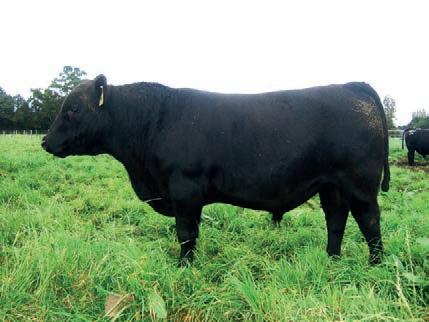
Enquiries: Chris Hurlstone 027 598 6542
COMPLETE DISPERSAL A/C GLACIER HORNED HEREFORD
FOX GLACIER
Thursday 11 May
Auction commencing 2pm at White Pub, Fox Glacier.
Comprising:
50 Mixed Age Cows (PTIC)
12 1st Calving 3yr Heifers (PTIC)
• 20 Rising 2yr Heifers (unmated)
• 28 Rising 1yr Heifers
1 3yr Herd Sire
Auctioneers Note:
This is a Herd that represents the very best qualities of a Horned Hereford and of South Westland cattle in general. These powerful, fertile dams are excellent milkers, producing outstanding progeny with growth, muscle, and carcass.
Catalogues available from the auctioneers. Inspection on farm from 10.30am.
This sale is online at bidr www.bidr.co.nz register online. Light luncheon available.
For further information contact:
Wayne & Maggie Williams 027 2644 624
Enquiries: John McKone (PGW) 027 2299 375
NZ’s Virtual Saleyard bidr.co.nz




from well-known vendors.


WE ARE well past the halfway point of the calf sale season in the South Island and it is time to check how they have been stacking up next to previous years.
It has been a tricky season to get a grasp on things as the weather has been fairly abnormal, not delivering any consistent pattern comparable to previous seasons. The outcome has been favorable for some regions’ calf sales, though not for others. But they have been positive regardless and have improved as the season has progressed.

The opening week of calf sales is usually a good indicator for how the rest of the season plays out. Good rainfall supported by some warmth in South Canterbury meant they got dealt the best hand of the weather with some great autumn growth.
Buyers couldn’t wait to get their hands on calves and were particularly confident in paying a bit more for traditional calves
However, it wasn’t the same flying start in Otago and Southland, who had a tough start to autumn. After a particularly dry end to summer, the rain came but not enough to give a really good soaking.
Pasture growth was minimal, and buyers were reluctant to take on too many calves at once, if any, until there was some more certainty in grass growth. As a result, it was clear that calves from these regions have also been 20-30kg behind in weight due to feed-related earlier weaning and cows not milking well.
Pricing at the early sales kicked off slightly weaker than the North Island averages of around $4/ kg, which is typical of the South Island, but buyers and vendors were still happy.
The kind season in Canterbury really helped the condition of calves, and returns were at least $50 a head stronger than last year. Steers were averaging $3.40- $3.50/kg and heifers 30c/kg behind.
A few weeks in and a bit more rain arrived. With it came more confidence in margins, particularly
Calf sales have been dominated by Angus this season and the quality has been a real credit to the Angus breeders and associations.
for those at the bottom of the island. By the end of March pricing had strengthened further and steers were consistently upwards of $3.85/kg.
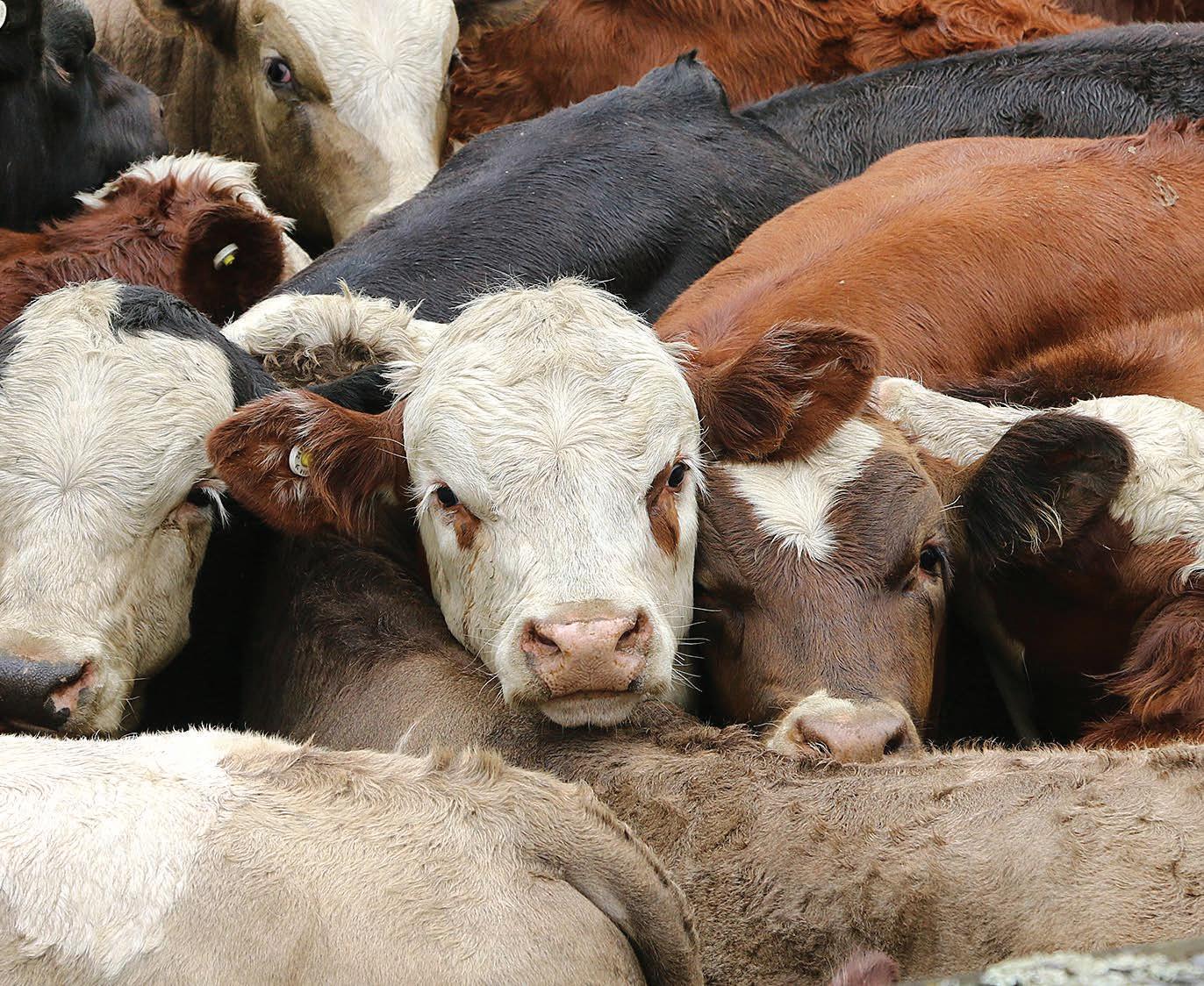
Calf sales have been dominated by Angus this season and the quality has been a real credit
to the Angus breeders and associations. On several occasions the stand-out, hotly contested pens have contained Angus steers that have managed $900-$1230, dependent on weight.

Now well into April and the market has grown in confidence even further. Steers have been consistently over $4/kg, up to 40c/ kg stronger than last year.
Heifers have snuck up too and buyers would expect to pay at least $3.30/kg. The demand for heifers this season has been a touch softer, with thoughts that maybe the end to the live-export boats may have something to do with it.
In terms of buying demographics, the North Island has continued to add to the competition this year, even though this year they haven’t had quite the same smooth sailings. Strong demand coming out of Canterbury has meant the locals have not gone down without a fight and a few less calves have got on the ferry heading north. Much of the calf-selling action will wind up in the coming week. Even though the weather has thrown some curveballs, like it always does in this industry, things work out in the end and vendors will be looking back on a successful 2023.
The first calf sales usually point to how the rest of the season will play out – and buyers in the opening week couldn’t wait to get their hands on the newborns.Sarah Hilhorst MARKETS Beef and lamb
As May closes in, many farmers are getting into the pre-winter tidy-up time and that has meant increased volume at saleyards nationwide. There is a larger instance of smaller lines of mixed quality coming to market, both in the cattle and sheep pens.
Some yards are also still working through the later weaner fairs and calf sales, and most of these will be finished up by duck-shooting opening weekend. It is a good time to sell, though, as there is still plenty of demand for all classes of stock, and top prime steers were noted for creeping over $3/kg again.
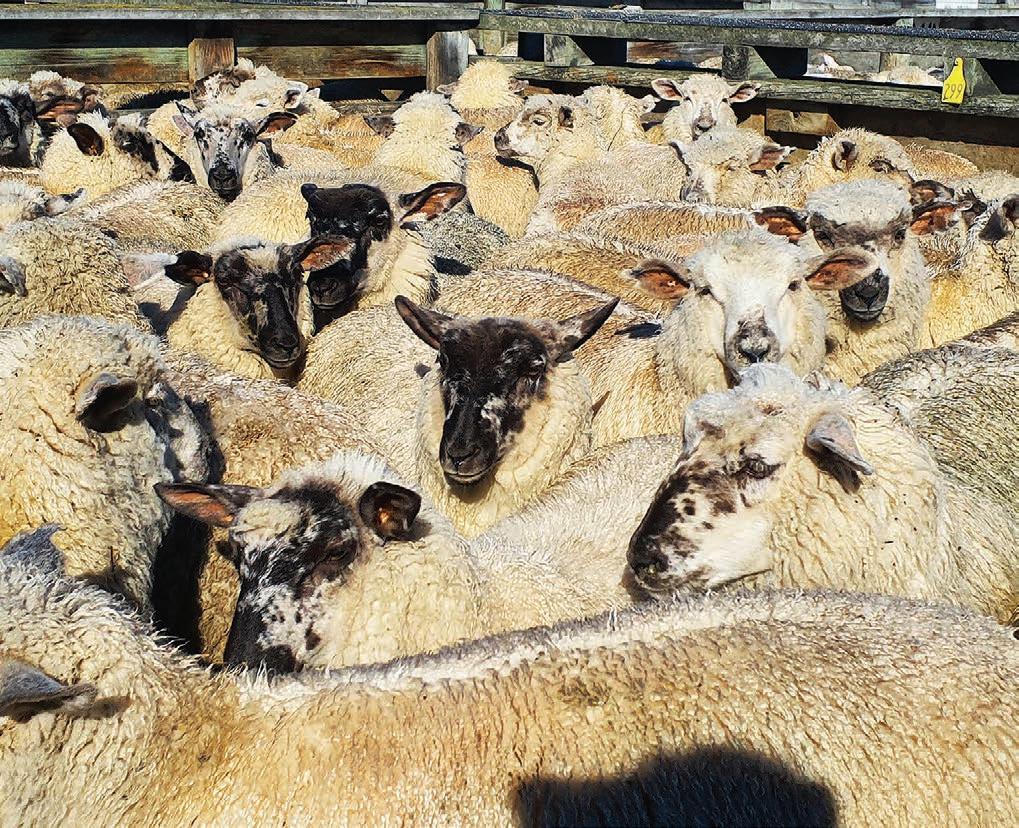





NOTE: Slaughter values are weighted average gross operating prices including premiums but excluding breed premiums for cattle.


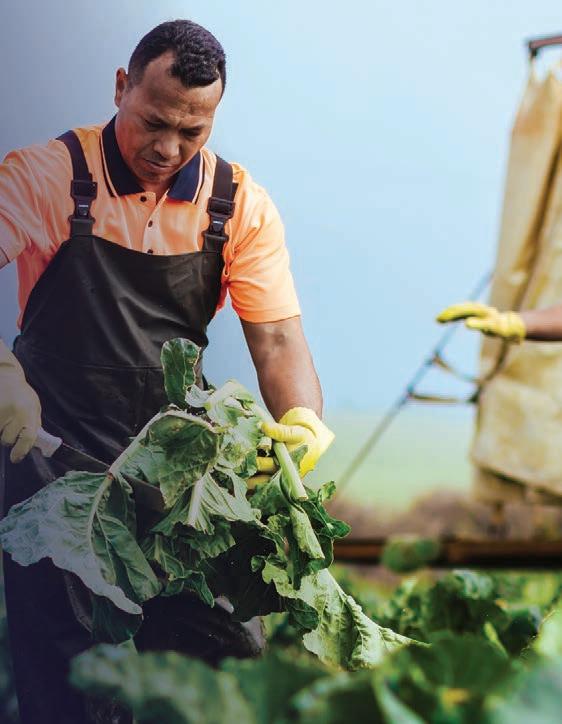








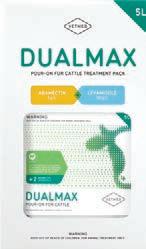


Data provided by

Milk price futures ($/kgMS)

















Canterbury feed wheat ($/tonne)







Canterbury feed barley ($/tonne)

WMP futures - vs four weeks ago (US$/tonne)
Waikato palm kernel ($/tonne)





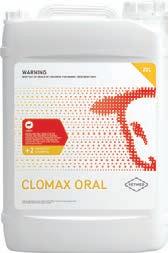

AFTER what has been an especially mild run of weather over the country through the middle part of April, the last week looks cooler – but still not majorly cold.
Monday this week will be coldest, and it’s a return to a more “normal” weather pattern for April, which usually has a mix of warm and cold days – not just warm, like it’s been for many lately. The warm weather has allowed northern areas to dry out further and made for some great pasture growth weather right over New Zealand. With the colder airflows around – and certainly colder nights for inland areas – some may notice pasture growth rates slowing down further.

NZ remains in a chaotic neutral zone. The tropics north of the country are still seeing low pressure but it’s nothing like it was back in summer.
With El Niño already building and an El Niño watch now in force, we should be
seeing “flatter” air pressure forming in the tropics north of us, with fewer lows forming west of the International Date Line.
The powerful highs coming out from Australia and the Indian Ocean already have a slight feel of El Niño to them, but they are passing over NZ and not really lingering for us. In fact, the last high last week was more like a La Niña set-up, producing 10 days or so of windy easterlies and northeasterlies for northern NZ.
We may see a few frosts this week over the South Island but nothing too major is showing up. Keep an eye on the frost and fog forecasters we have at RuralWeather.co.nz. With duck hunting just around the corner, the Fog Forecaster and Cloud Forecaster may be especially valuable, with all parts of rural NZ covered.
Many are asking what May is holding weatherwise, and we’ll have more info next week about this. But for now we expect April’s weather pattern to carry on into May bringing big highs from the Indian Ocean and south of Australia which will bring westerlies and southerlies into the NZ area as they first move in.
WEEK’S WORTH: Rainfall accumulation over seven days starting from 6am on Sunday April 23 through to 6am on Sunday April 30.
But again, this is the chaos we expect in a neutral autumn.
The warmer than average weather – even with the colder change this week – has really limited frosts too.
When highs depart that’s when the cloudier, more northerly driven airflow starts. In fact, with high pressure it can be quite useful to draw a line north to south through the centre of them. The central and right hand side of that high is where the cooler airflows and clearest skies are often located. The left hand side is where the warmer northerly quarter winds are and a higher chance of morning cloud and fog.
• Nationwide cold change Monday/Tuesday
• A chance of some frosts this week
• Temperatures nationwide tumble several degrees (for North Islanders this will be more noticeable in overnight lows, for Southerners it may be more noticeable in daytime highs)
• High pressure should move in over much of NZ on Thursday, Friday & Saturday
Together, Rabobank and Garden to Table, are helping tamariki to grow, harvest, prepare and share great food
Kiwi kids from primary and intermediate schools love getting stuck in and learning how to grow, prepare and eat delicious, healthy food. It’s hands-on learning that will have a positive impact on us all.
See how Garden to Table, proudly supported by Rabobank, are taking learning into the garden and the kitchen at gardentotable.org.nz
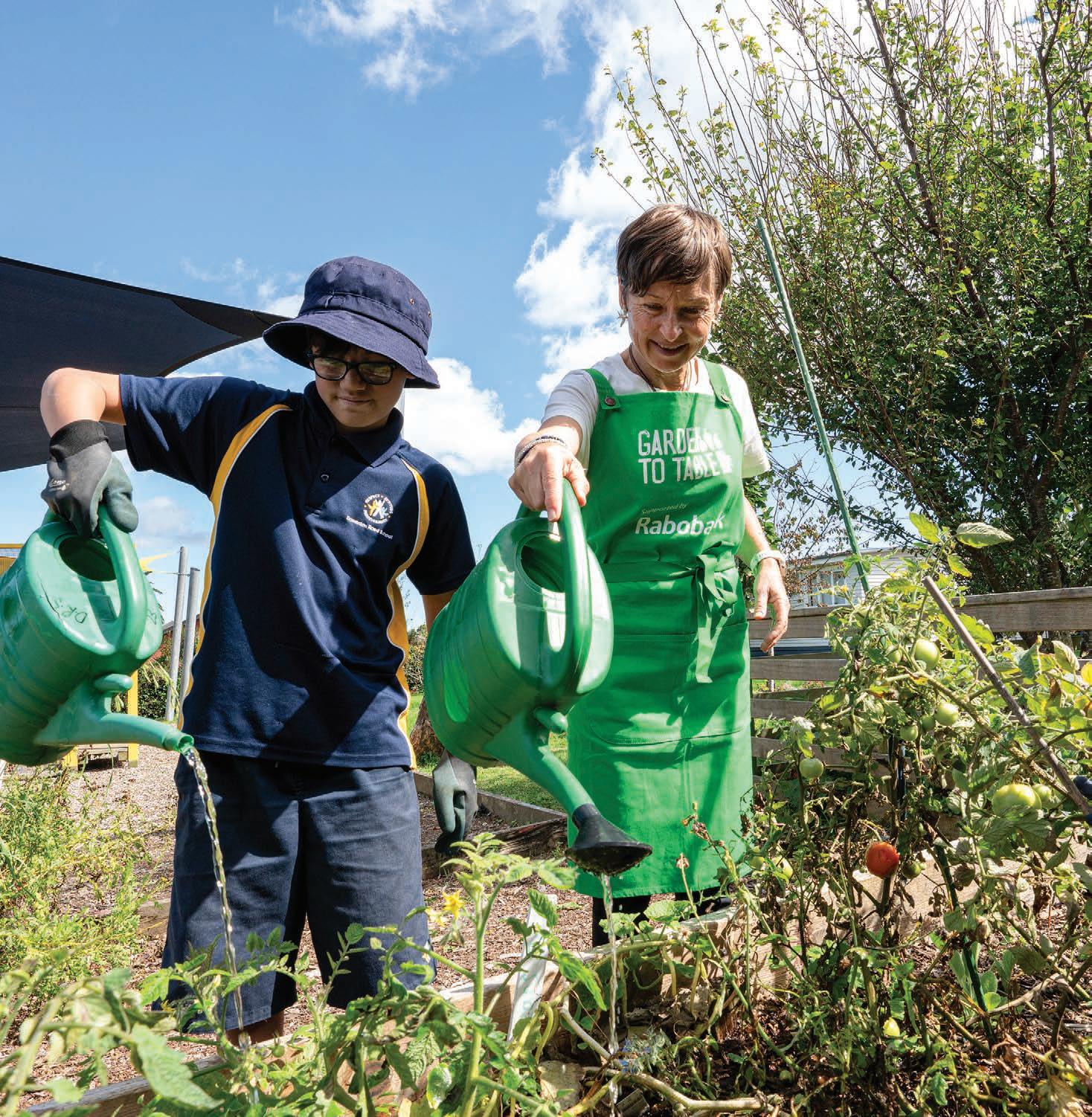
With duck hunting just around the corner, the Fog Forecaster and Cloud Forecaster may be especially valuable, with all parts of rural NZ covered.